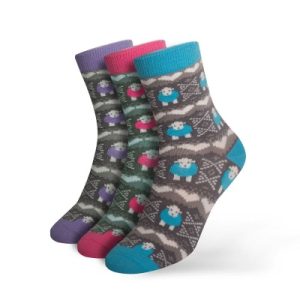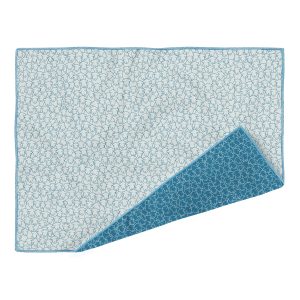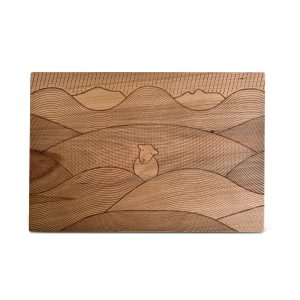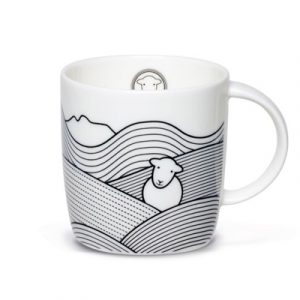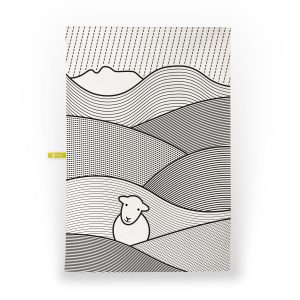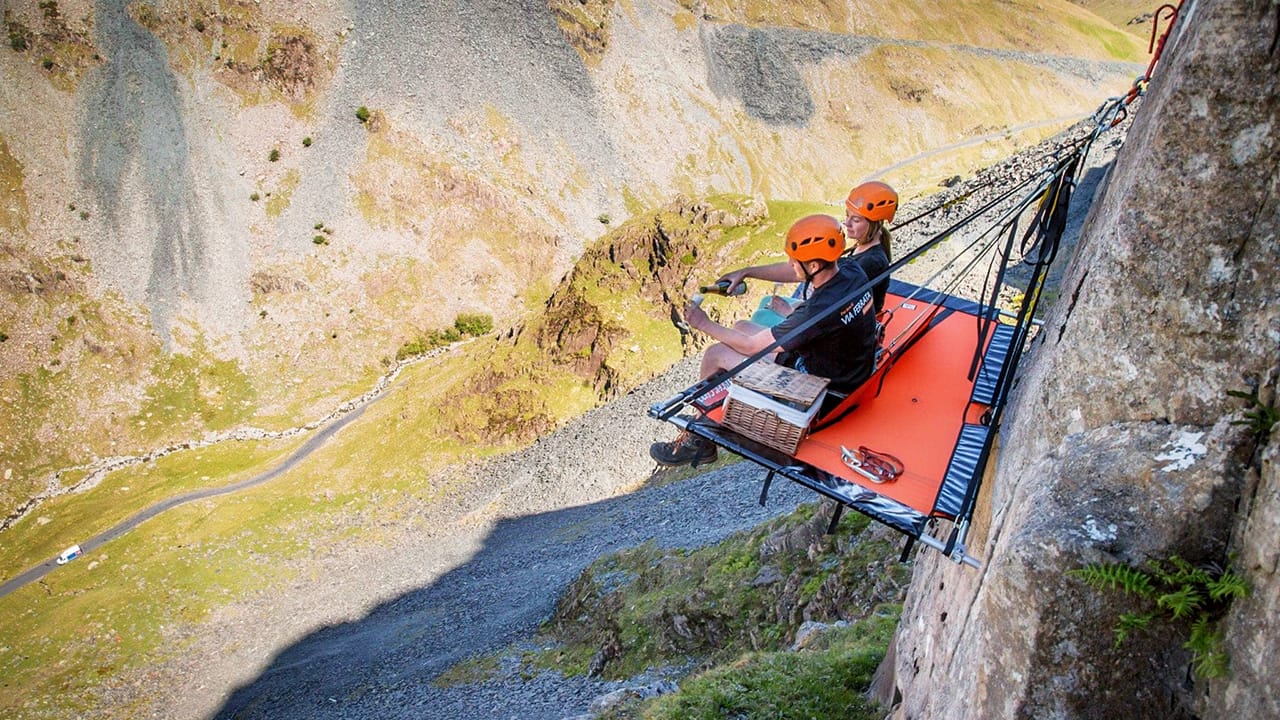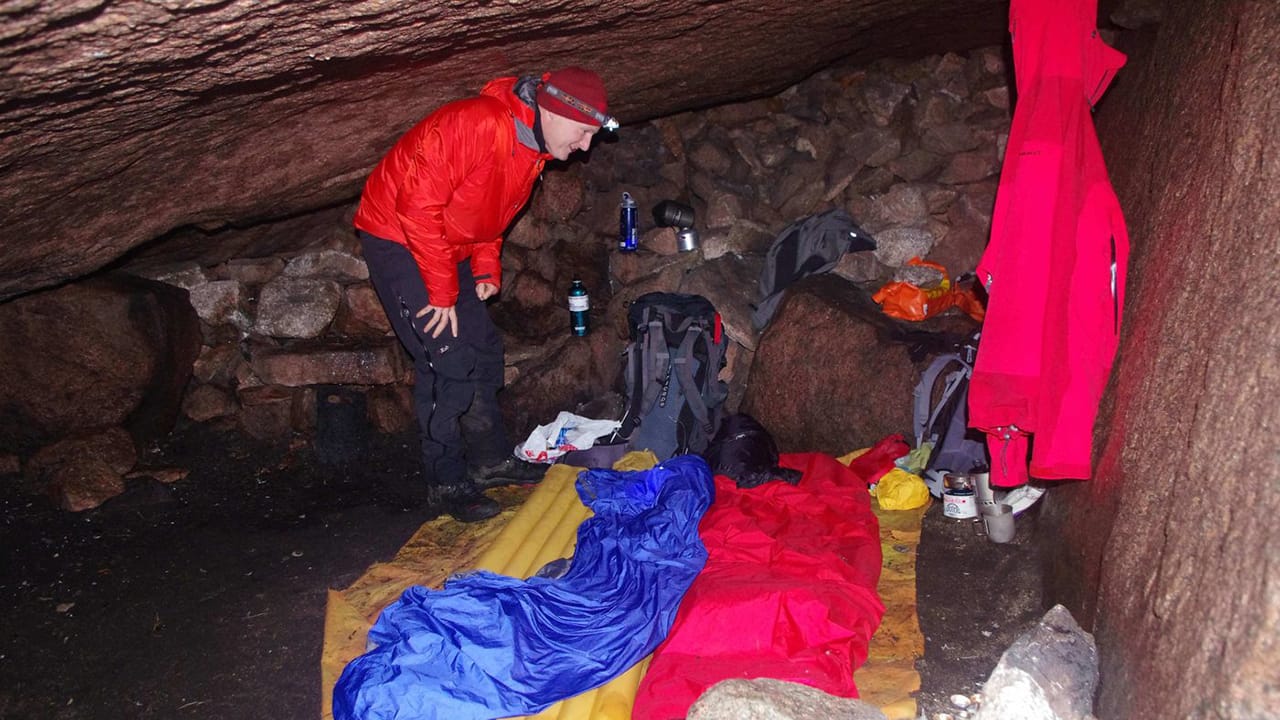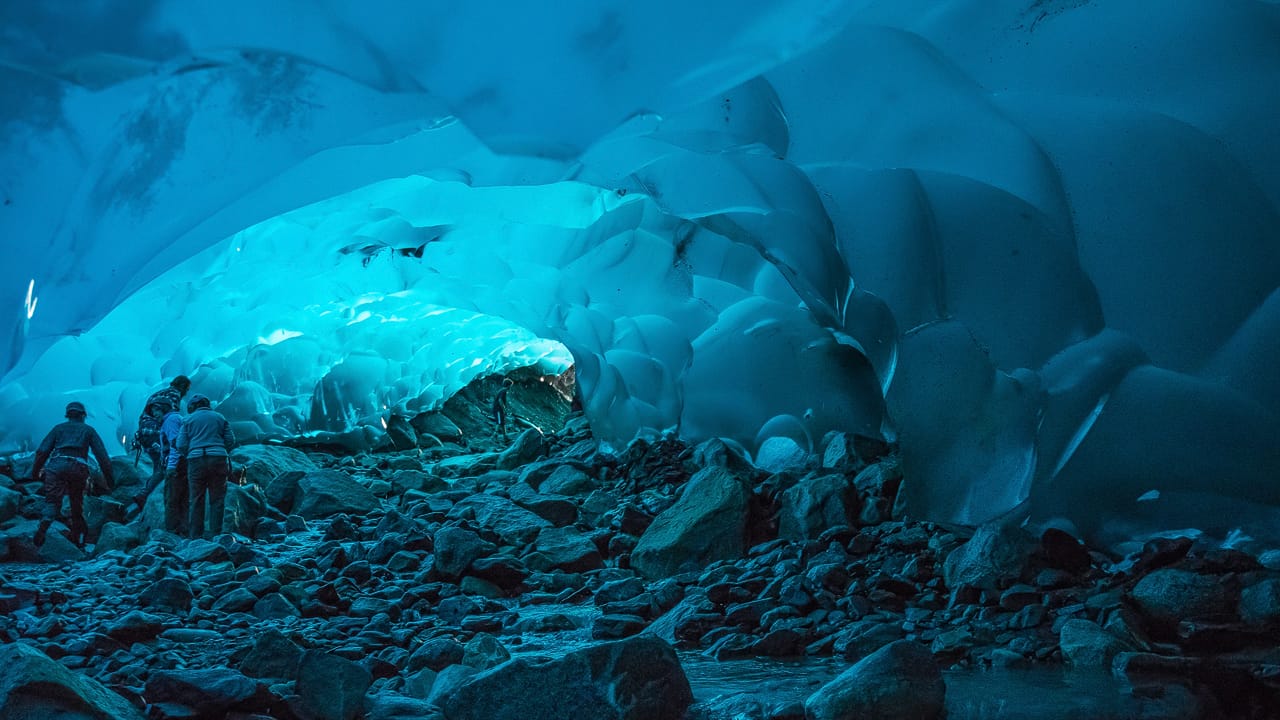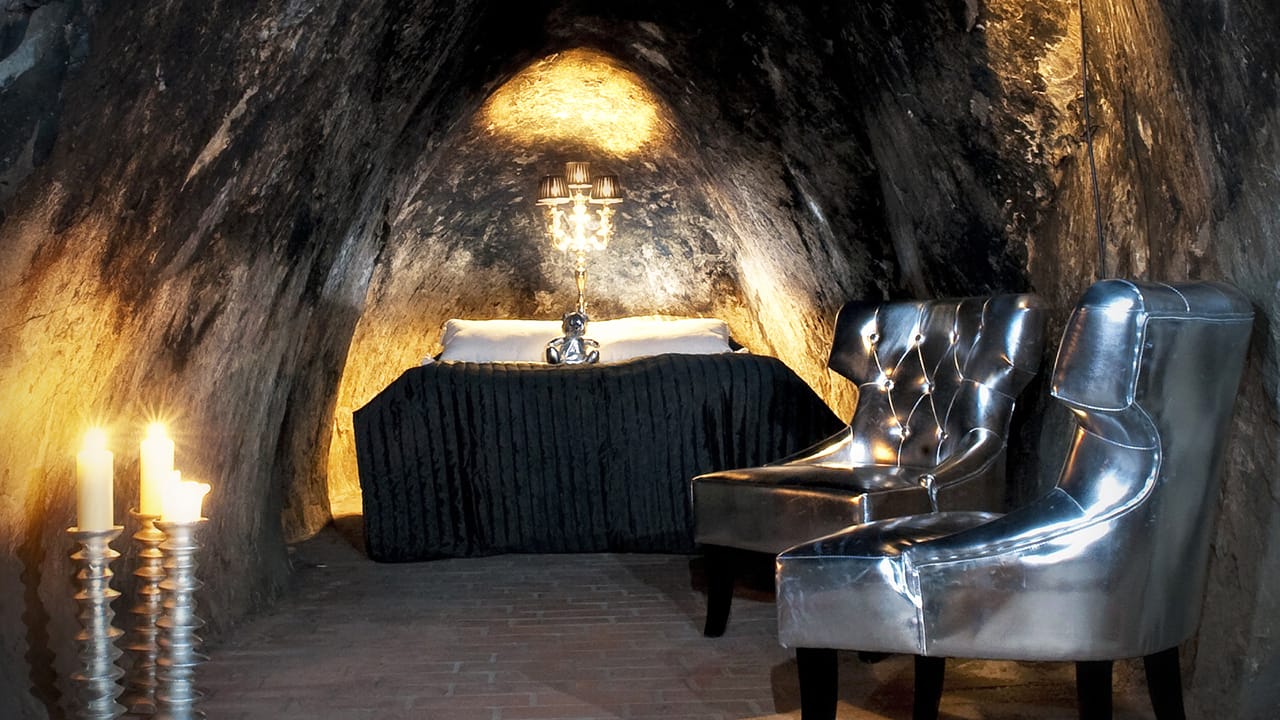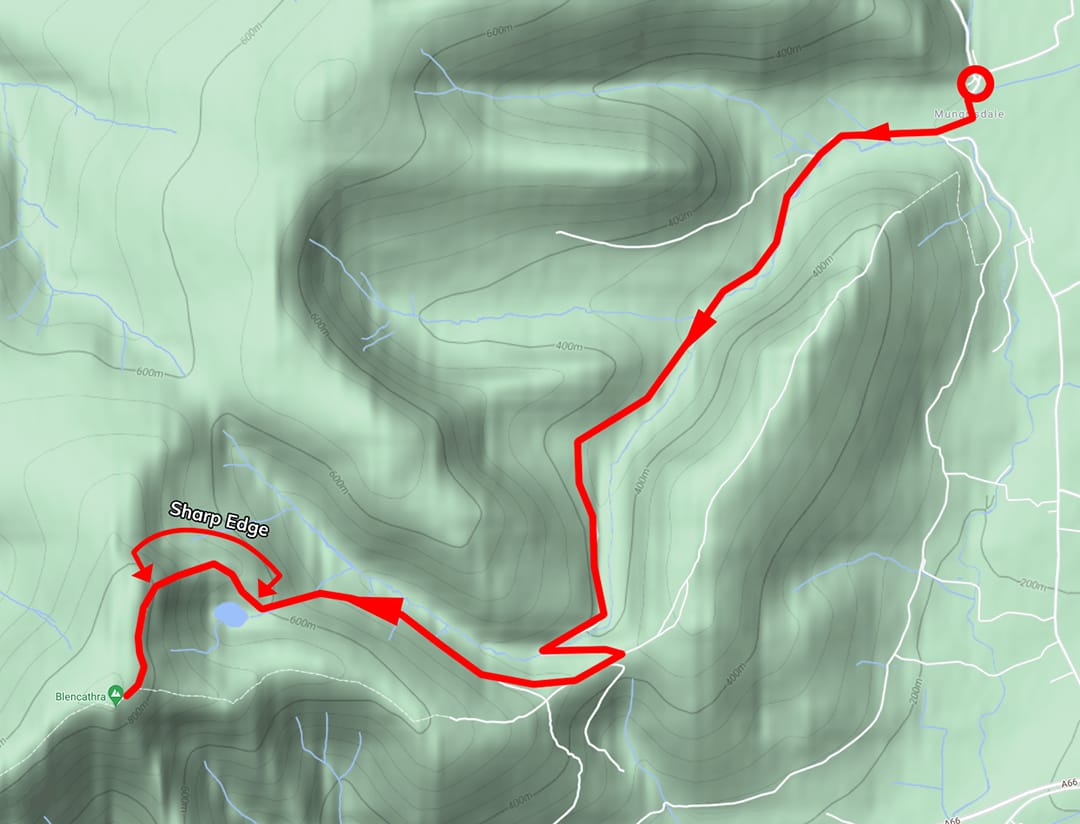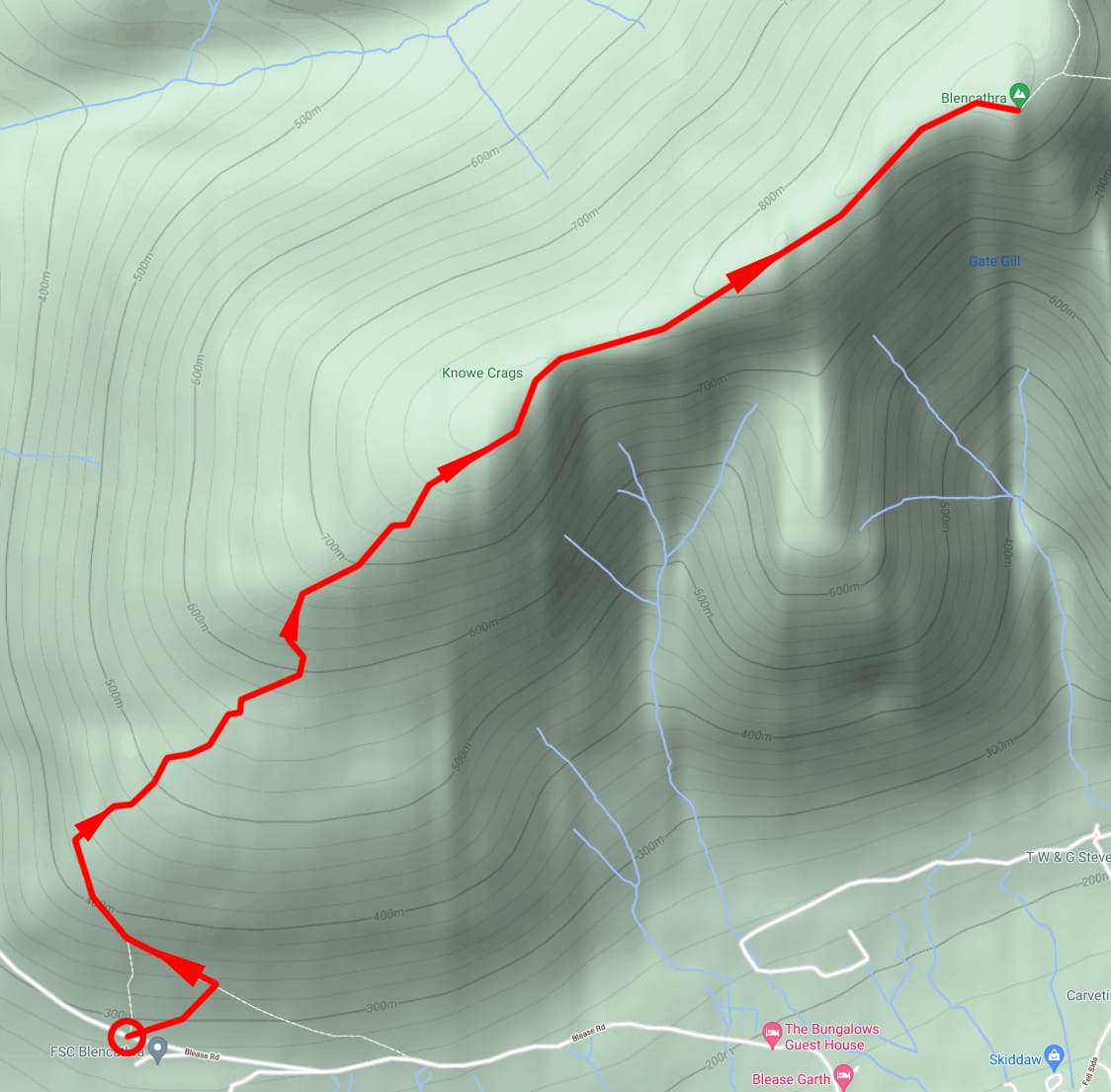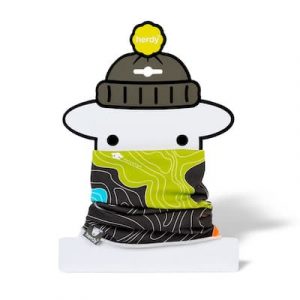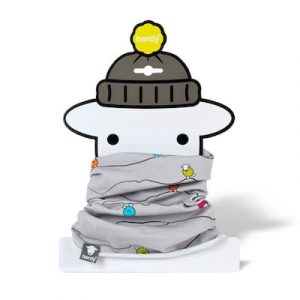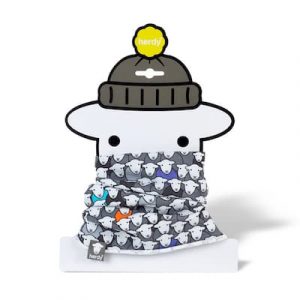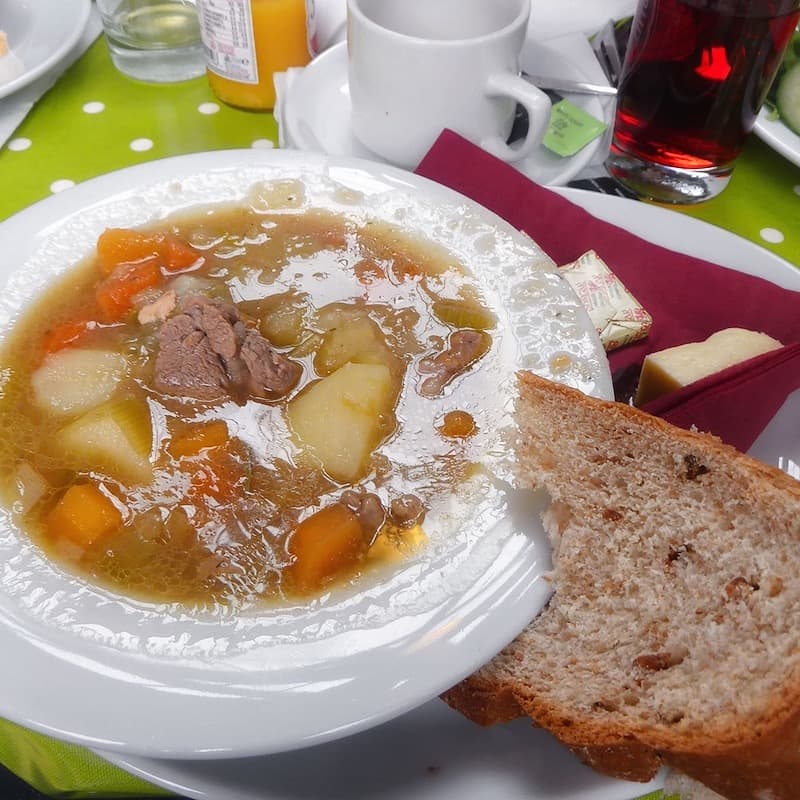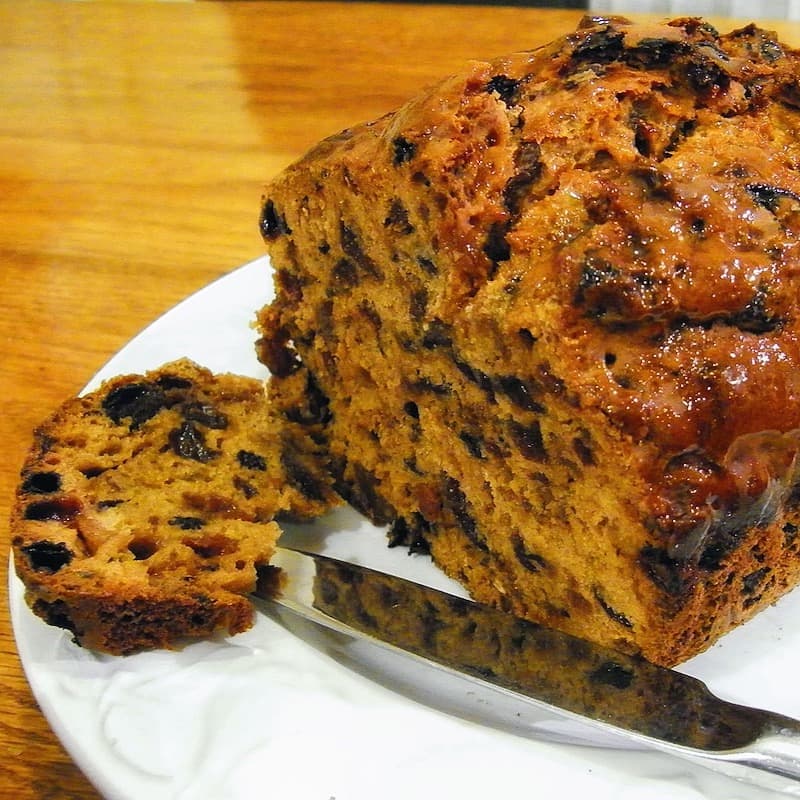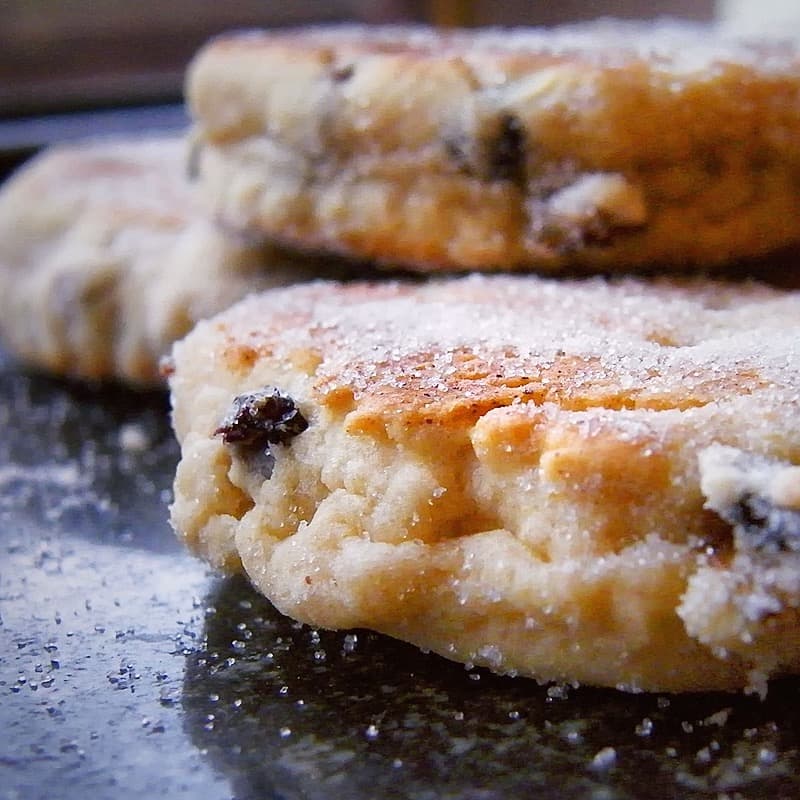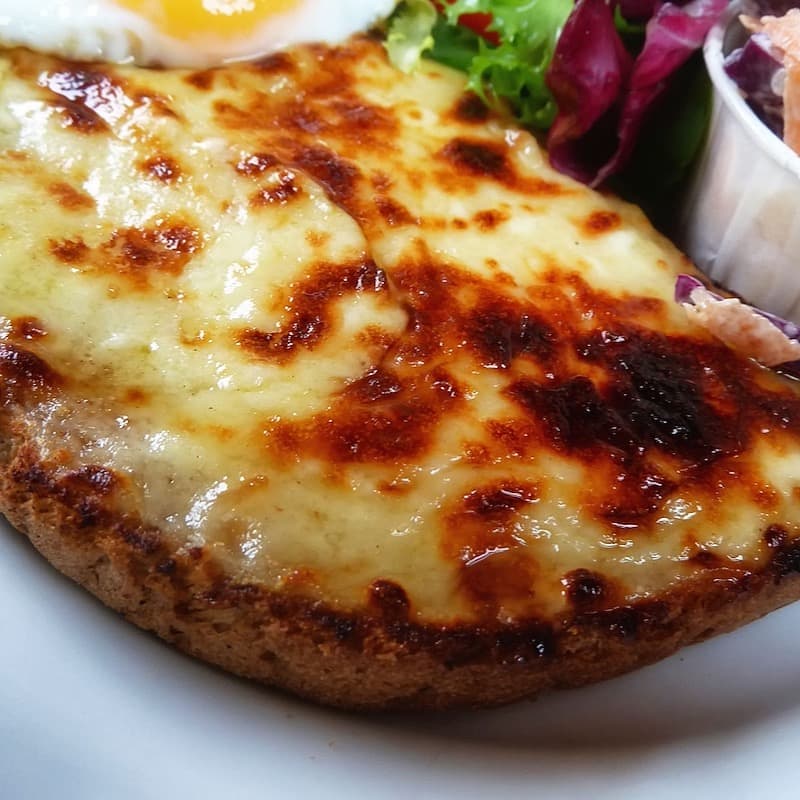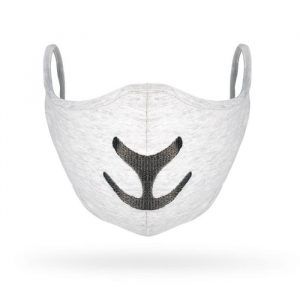Herdy’s new stone paper notebook is your trusty writing companion for life’s big adventures. Each page is silky-smooth, eco-friendly and waterproof. Perfect for using in the kitchen, the garden, or even a rainy day in the Lakes.

The Design
At Herdy, we’re all about combining clever design with an element that makes you smile, and our A5 stone paper notebook does exactly that. Made from stone waste (yep, actual stone!) and recycled plastic bottles, this notebook is as kind to the planet as it is to your creativity.
Featuring Herdy’s iconic ‘Line’ design inspired by historic graphite mining in the Lake District, it’s a little slice of heritage in your hands.
What Makes Stone Paper So Special?
Let’s get techy about stone paper. This revolutionary material is made from the waste material produced from Limestone quarrying, mixed with recycled plastic bottles, to create an incredibly smooth writing surface. No trees, no water or bleach. Just pure, sustainable magic:
- Tree free and water free: No forests were harmed in the making of this notebook! By choosing stone paper, you’re helping to save trees, conserve water, and enable the use of a material that would otherwise be wasted.
- Recyclable: When you’ve filled every page with baa-rilliance, you can recycle as plastic. It’s like a little sustainability loop.
- Durable and long-lasting: Stone paper is hardwearing and less prone to tearing. Throw it in your bag, take it on all your adventures, this notebook can handle it.

Useful for Everyday
Life can get messy, but your notebook doesn’t have to. The water-resistant pages of Herdy’s stone paper notebook are ready for anything:
- In the Kitchen: Spilled your tea or splashed some sauce? No worries! This notebook wipes clean, making it perfect for recipes or cooking notes.
- In the Garden: Got muddy hands? A little dirt poses no problem.
- In the Wild: Raining on your hike? Bring it on. Feel free to sketch the views without a single soggy page.
Writing Has Never Felt So Good
The best thing about stone paper: writing on it feels AMAZING. It’s so silky-smooth, your pen will literally glide across the page. Whether you’re scribbling notes, doodling, or pouring your heart out in sonnet, you’ll love the experience.

Get Lost In The Pages
We all need a break from our screens every now and again. This notebook is your chance to unplug and reconnect with the simple joy of putting pen to paper. Whether you’re channeling your inner Wordsworth, designing your dream veg patch, or doodling just for fun, this notebook is guaranteed to be your trusted companion.
Featured Product
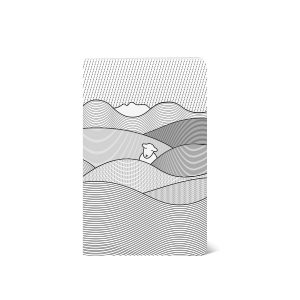
Line Notebook
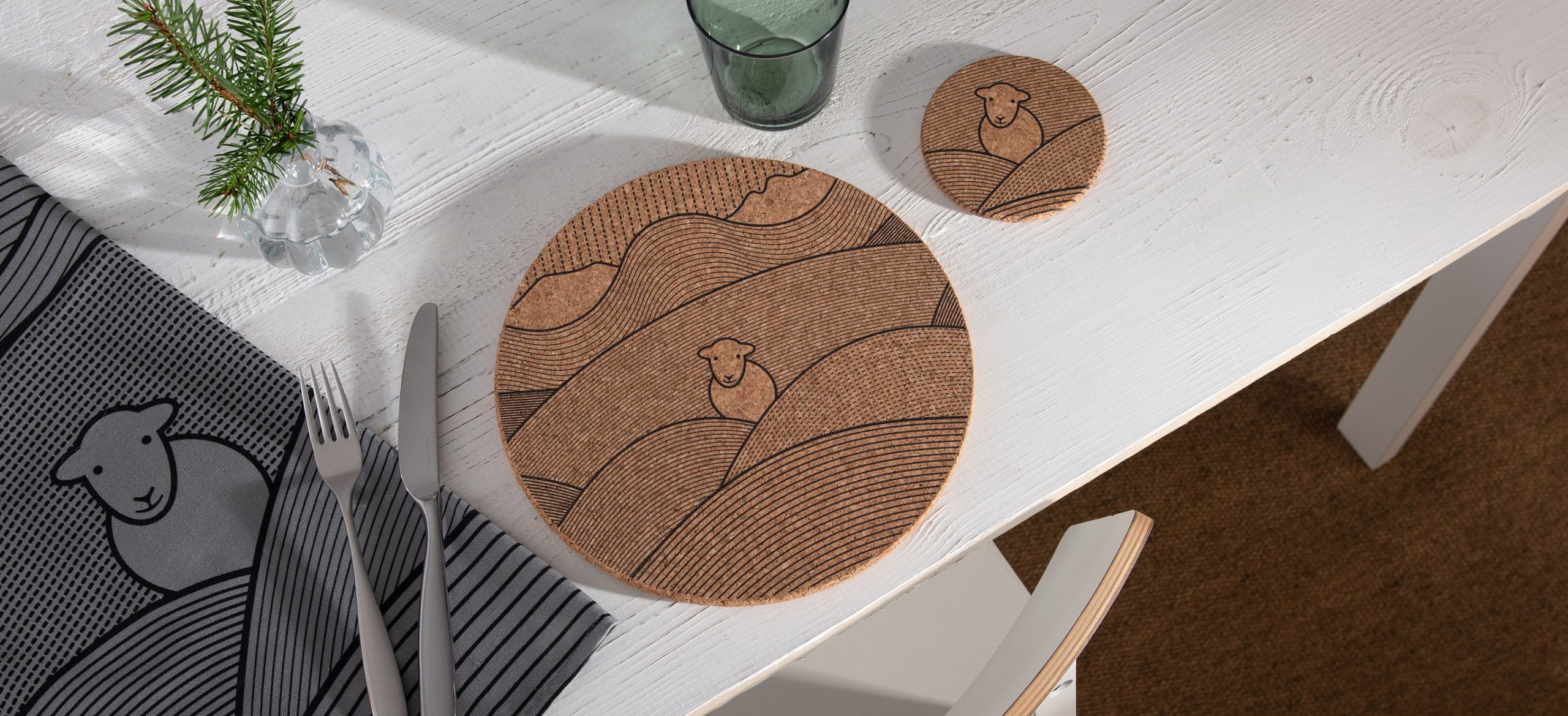
At Herdy, we’re always thinking about how to do the right thing, including how we source the raw materials to make our products. It’s important that we create products that try and minimise the impact on the environment. This is why our new collection of table mats and coasters are made from one of the world’s most sustainable natural materials, cork.
What is cork?
Cork is an eco-friendly, sustainable material. It comes from the bark of the Quercus Suber, commonly called the Cork Oak tree. This evergreen tree comes mainly from the Mediterranean basin with Portugal having both the largest natural and cultivated forests, covering over 750,000 acres. Cork trees are able to withstand forest fires due to their thick layer of protective bark – a useful survival advantage given the increasing number of wildfires, as a result of climate change. The managed cork tree forests, called Montados, provide protection to a diverse range of rare plants, fungi, mammals and birds, some of which are found nowhere else in the world.
Why is it so sustainable?
Cork harvesting is regarded as one of the most sustainable forestry practices in the world by the Forest Stewardship Council. This is because removing or harvesting the bark doesn’t harm the tree. Stripping the cork bark is actually beneficial to the health of the tree, and brings with it environmental benefits too. A cork tree is able to absorb even higher levels of carbon dioxide after the bark is harvested and, in total, Cork oak forests absorb 14 million tonnes of CO2 every year.
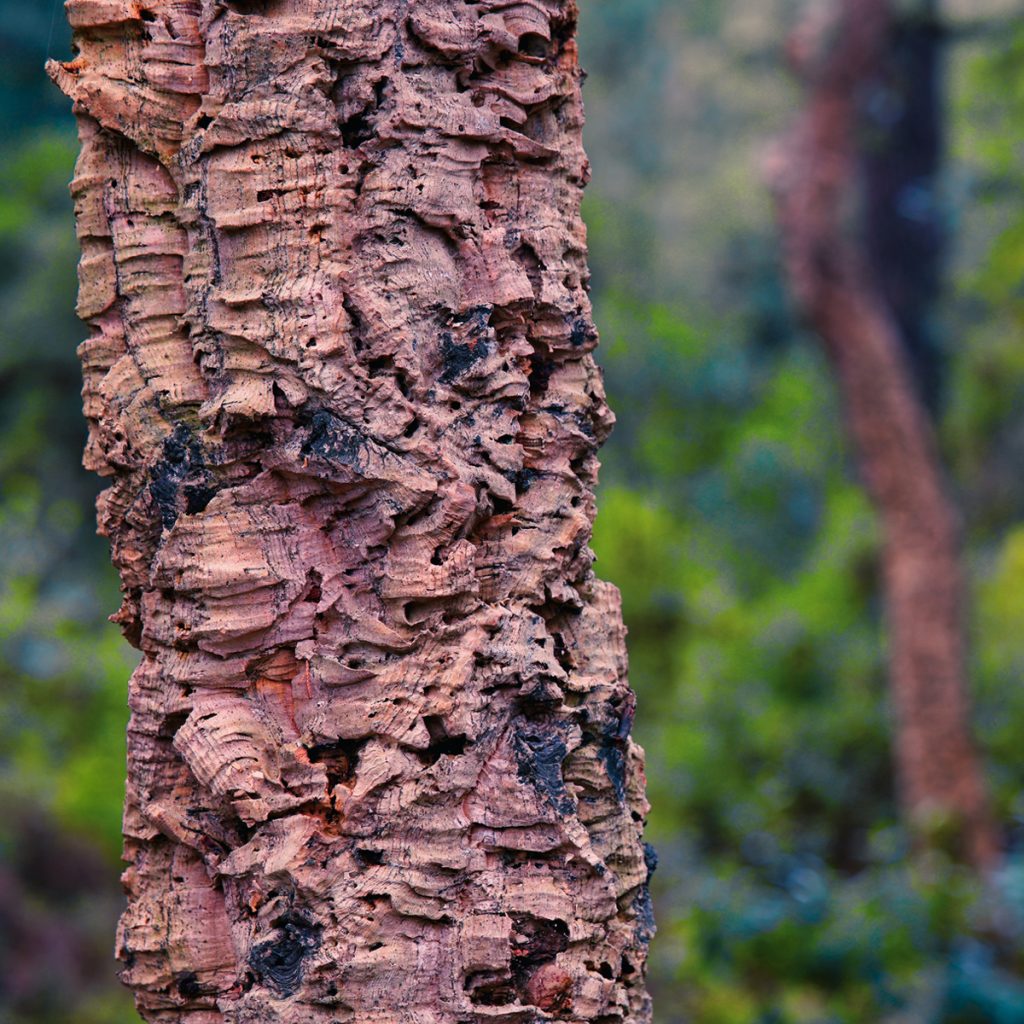
The first harvest takes place after the tree reaches 25 years old. A cork tree can be harvested up to 17 times in its lifetime (250 years), producing between 100 – 200 kilos of cork over its lifespan. Cork trees are legally protected in Portugal and people harvesting cork require specialist training so that no damage is done to the trees. The European cork industry employs over 30,000 people and is worth €1.5 billion annually, with Portugal accounting for around 50% of the total production.
Fun Fact: The Whistler Tree, is the world’s largest cork tree. Planted in 1783, Portugal listed it as a National Monument in 1988. To date, 2,645.55 pounds of bark have been harvested from the tree and it is estimated that at the end of it's lifespan, the tree will have provided raw material for over 1 million corks.
Why is cork special
Cork is an amazing natural material with a wide range of uses, from footwear to fashion accessories, wall and floor tiles, wine corks and notice boards. There is no waste in its production as even tiny chippings can be bound together and made into smaller items. It has many inherent properties such as being;
- Water repellent
- Fire Retardant
- Sound insulator
- Thermal insulator
- Sock absorbtion
- Anti – Allergy
- Absorb CO2 which improves during its natural regeneration after the bark has been harvested
- Prevent soil erosion
- 100% recyclable
Featured Products
Get to know the newest member of the flock
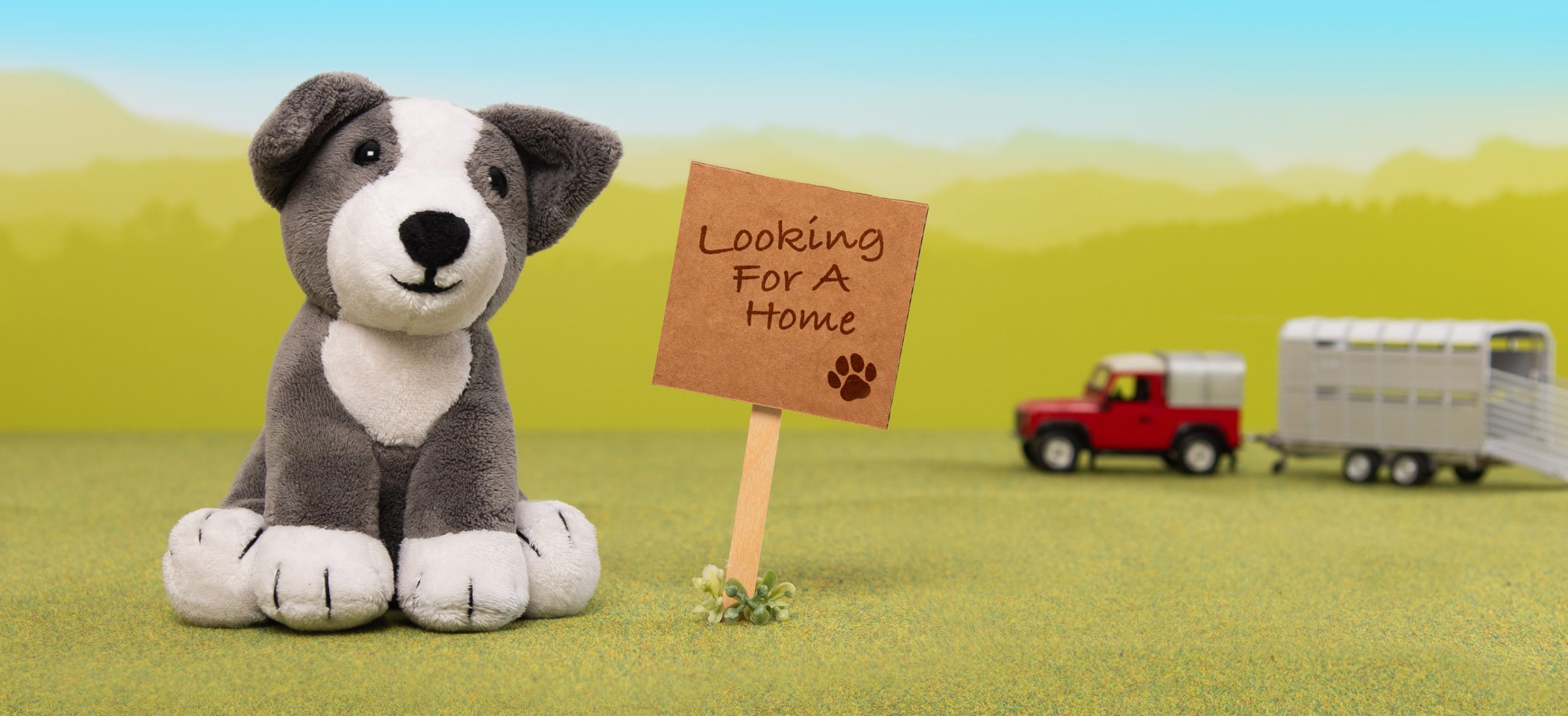
The Border Collie is one of the most talented and hardworking dogs out there. They will impress you with their intelligence and win you over with their cuteness and charm. Discover why a Collie isn’t just a pet; it's an adventure waiting to happen!
Border Collie Origins
Would you baa-lieve that the Border Collie wasn't officially recognised as a breed until 1995? It took the world a while to acknowledge these cute and brainy canines. The Collie breed originated in Scotland, on the border with England in the 1800’s, hence the prefix ‘Border’ to their name. The word ‘Collie’ comes from the Celtic word meaning ‘useful’ which is a fitting description for this able and hardworking companion.
Collie dogs can trace their roots back to Roman and Viking times and are famed for their intelligence and agility – true doggy MENSA members! So, the next time you see a Border Collie breezing through an agility course or herding Herdwicks with finesse, tip your hat to their rich heritage. These Collies have made quite a journey and have left their paw prints in history!
Fun Fact: All modern Collies can be traced back to one ancestor, Old Hemp, who was born in 1893. He was singled out for his herding skills. He didn't rely on barking, instead, used his body language to do the job. He’s believed to have fathered around 250 pups!

Champion Herders
When it comes to herding sheep, Border Collies aren’t just good, they’re baa-rilliant. These clever pooches use their eyes to control the flock. Back in 1873, at the sheepdog trial in Wales, spectators were astounded to see Border Collies, effortlessly herding sheep into pens, with only simple hand signals and whistles from their handlers.
Now, let's talk Herdwicks. When it comes to these woolly adventurers, Collies are like the sheriffs of the hills. They navigate the rough terrain with ease, herding the independent-minded Herdwicks with a finesse that's nothing short of spectacular. What sets them apart isn’t just their strength or stamina, it's their intelligence and trainability.

A Collie’s built in herding nature keeps them active, alert, and always thinking ten steps ahead. So, if you've got a flock of Herdwicks in need of a master shepherd, look no further than a Border Collie.
Fun Fact: Border Collies are known for their intense stare, allowing them to control a flock of sheep with a simple glance.
Super Smart
The brainy Border Collie is considered the Einstein of the canine world and for good reason! They are literally the cream of the intellectual crop when it comes to dogs.
Border Collies eagerly soak up new tricks and commands with ease. They crave mental challenges and need loads of exercise, meaning a life herding sheep on the fells, is the perfect job for them.
Fun Fact: A Border Collie named ‘Chaser’ is officially the world’s smartest dog, he knows the names of over 1000 individual objects. Who’s a clever boy?

Border Collies make great search and rescue dogs
When it comes to search and rescue, the Border Collie is more than just a fetching buddy, they’re top-notch heroes! Their intelligence and boundless energy makes them the natural choice for search and rescue missions. They’re super quick learners and soak up training like a sponge, no wonder they’re the preferred dogs for mountain rescue operations.
Border Collies are trained as air-scenting dogs, catching the faintest whiff of a human scent in the air. With laser-like focus, they zigzag across the fellside, to pick up the scent. And when they find them? A bark from these furry heroes is a signal to the handler, that they’ve found the missing person.

These four-legged marvels undergo rigorous training, up to two years to fine-tune their skills. Handlers and volunteers play hide and seek on the hills, providing invaluable practice for these canine heroes.
Fun Fact: A Border Collie named Striker, set the world record for the fastest rolling-down of a manual car window by a dog in under 12 seconds.
Perfect Pets
Looking for the ultimate partner-in-crime for endless adventures and unwavering loyalty? Look no further than the Border Collie. These Einsteins of the dog world, combine wit, playfulness, and devotion all in one furry package. Border Collies thrive on interaction and mental stimulation. Their energy is infectious, making them ideal companions for families eager to match their zest for life.
Beware though, without proper engagement, they might just start chewing the furniture or creating their own entertainment!
In essence, if you're up for the challenge and seek an endlessly enthusiastic, brainy sidekick, the Border Collie is your perfect match!
Fun Fact: In the early 1860s, Queen Victoria, known as a devoted dog enthusiast, developed a love specifically for Border Collies, and who can blame her!

Featured Product
At Herdy we are always thinking about how to do the right thing, including how we source the raw materials to make our products. It’s important that we create products that try and minimise the impact on the environment. This is why our new collection of throws are made right here in the UK, using recycled materials.
Re-ewes, recycle
Designed for longevity, our cotton throws are woven with yarn made from recycled, pre-consumer cotton, making good use of waste materials left over from the fashion industry.
Our wool throws are made from a combination of pre and post consumer wool fibre combined with recycled plastic bottles.
Whilst making sure we help keep you toasty in the colder months we also want to do our bit for the environment. The more we all re-use and recycle, the better it is for the world around us.
The wool-based ‘Line’ throw is composed of 70% recycled wool and 25% recycled polyester (plastic bottles), 5% other fibre.
‘Flock’ and ‘Hello’ throws are made up of 75% recycled cotton and 25% recycled polyester (plastic bottles).
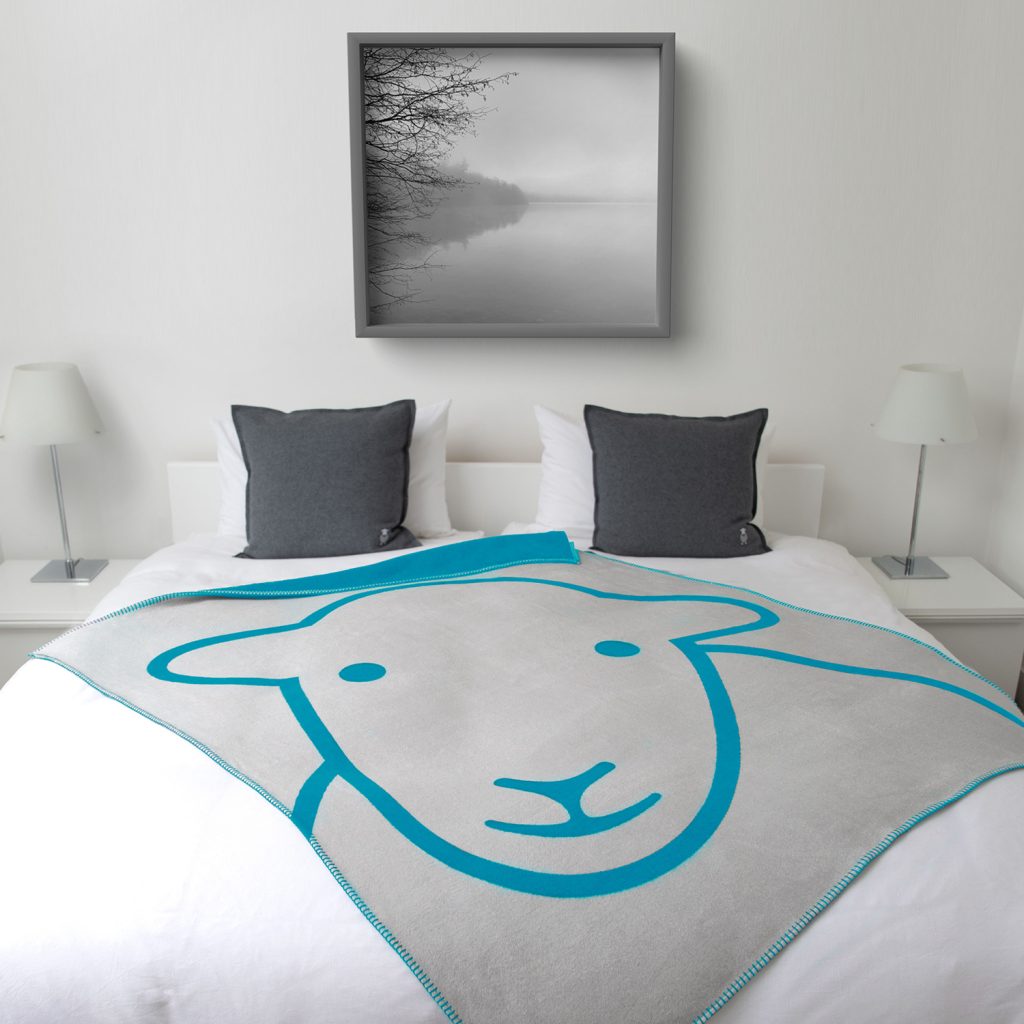
What is pre-consumer recycling?
Our cotton throws are manufactured through a process called pre-consumer recycling. Pre-consumer recycled material is defined as “material that has never reached the end-user”.
Recycled Cotton Cycle
The largest source for recycled cotton is pre-consumer waste, such as cutting scraps produced in garment manufacturing by the fashion industry. From here, the material scraps are collected and sorted. The material is chopped and the fibres opened. This material is then combined with recycled polyester (plastic bottles) and spun into yarn.
What is post-consumer recycling?
A mechanical process that returns used garments to the raw fibre state and turns the fibre into yarn to produce new products.
Recycled Wool Cycle
Garments are sorted into yarn type and colour, unravelled and cleaned ready for carding and spinning into yarn. This process produces 37kg less CO2 and uses 500 litres per Kg less than turning virgin wool fibre into garments.
Recycled Polyester Cycle
Used plastic bottles are collected and cleaned, then chopped into flakes. The flakes are melted and then extruded into fibres which are spun into yarn. For coloured fibre, pigments are added at this stage and then the material is extruded into coloured fibres. The coloured fibres can then be spun into pure polyester yarn.
Made in Britain
Herdy is proud to have a long history of working with British manufacturers. Our new collection of throws are expertly crafted by a family-owned, English weaving mill, dating back to the 1800’s.
British manufacturing is amongst the best in the world and renowned for its craftsmanship. By buying British, you are investing in quality products that will last.
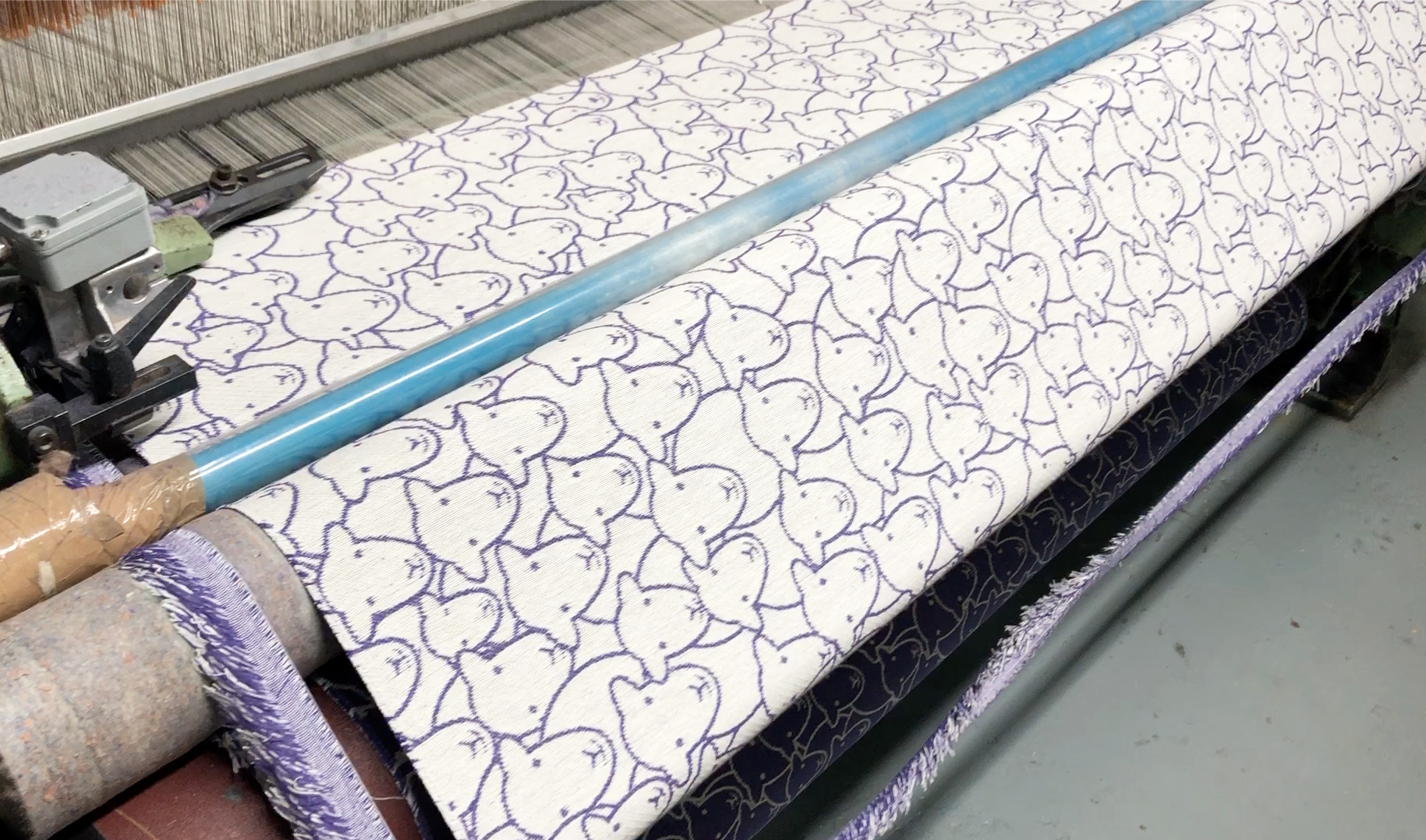
Another big advantage in buying British is the environmental impact. Products and materials travel less which reduces the overall carbon footprint of a product. By buying British and opting for quality products that will last, we can all help to do our bit for the environment.
- Textile production contributes more to climate change than international aviation and shipping combined.
- The fashion industry is responsible for 8% of carbon emissions.
- Fast fashion shipping is accountable for 20% to 35% of microplastic found in the ocean.
- The fast fashion industry is responsible for ⅓ of industrial water pollution.
Sustainable and durable
We all know how important it is to care for the planet, especially when making purchases for the home. The recycled fibres used in our wool throws have been proven by the IWTO to have the potential to last around 20-30 years. It’s good to know that these comfy throws could be used in our homes for decades.
Discover the range
Whether you prefer a neutral pallet or a pop of colour we’ve got it covered with Herdy’s new range of throws.
Line
Made from recycled wool Herdy’s Line design throws are available in dark and light grey versions. Finely crafted, these beautiful throws have a brushed finish and fringed edge detail. The stunning design features Herdy on the fells of the Lake District and is woven using a jacquard weaving technique making it a reversible, two in one design.
![J0029_Herdy-Throws_line-mid-grey[2000x2000px]RT Herdy 'Line' Throw: Made in the UK from recycled wool](https://www.herdy.co.uk/wp/wp-content/uploads/2022/10/J0029_Herdy-Throws_line-mid-grey2000x2000pxRT-1024x1024.jpg)
![J0029_Herdy-Throws_Flock-Ornage-Reverse[2000x2000px]RT Herdy recycled cotton throw in orange: Print shows a flock of herdy's](https://www.herdy.co.uk/wp/wp-content/uploads/2022/10/J0029_Herdy-Throws_Flock-Ornage-Reverse2000x2000pxRT-1024x1024.jpg)
Flock
Beautifully made from super-soft, recycled cotton, Herdy’s ‘Flock’ throws have a snuggly, brushed finish and feature a blanket stitch edge detail. The jacquard weaving technique creates a two-in-one design, with bold colour on one side and a subtler outline on the reverse. This fun and colourful throw features Sheppy keeping his eye on the flock; will you be able to spot him?
Hello
Wrap yourself in Herdy’s smile. Herdy’s ‘Hello’ throw is unapologetically bold, luxuriously soft and perfect for a cosy evening snuggled up on the sofa. Made from super-soft recycled cotton, this design has a snuggly, brushed finish and features a blanket stitch edge detail. The jacquard weaving technique creates a reversible design, available in four ewe-nique colours.

Unlike sheep we don't all have thick fluffy fleeces to keep us toasty during the winter months. But the good news is that there are lots of little things we can do to help keep ourselves warm and cosy this winter.
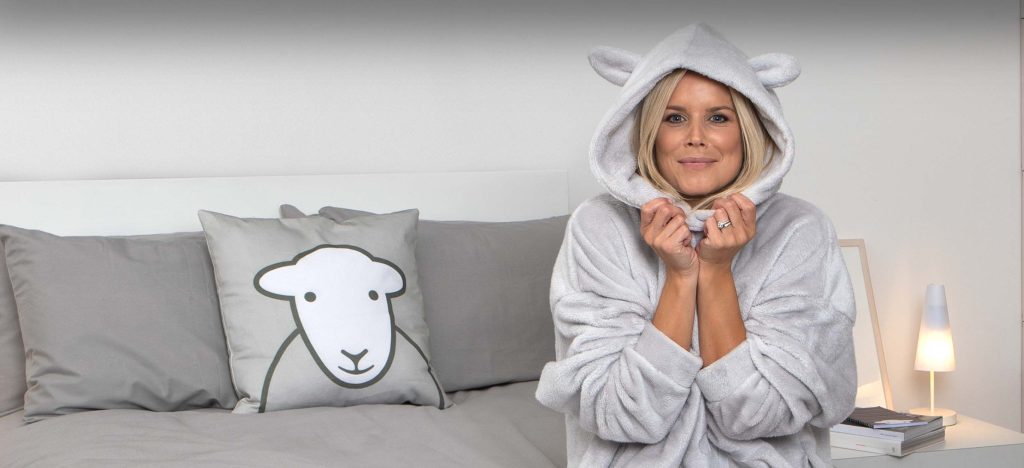
- Layer Up
Herdy’s new oversized, silky soft, fleece hoodie is guaranteed to keep you as snug as a Herdwick in a heatwave. Layer your hoodie over your favourite pair of Pyjamas to keep the heat locked in. Lots of layers work more effectively than one thick layer so why not go old school and pop on a thermal vest too! This season, it’s all about comfort and warmth.
- Keep those Tootsies Warm
Our feet play a vital role in regulating our body temperature. If your feet are cold, chances are the rest of your body will feel chilly too. So, make sure to put on some toasty socks.
Cold feet can also lead to poor sleep. If your feet are too cold it may take longer to drop off. Keeping your feet warm helps to redistribute heat around the body, allowing you to slip into a deep, comfortable sleep.
- Have warming food and drinks
Winter gives you an excuse to fill up on your favourite comfort food! Start the day with a bowlful of hot porridge to keep you toasty until lunchtime. Batch cooking winter warmers like soups and stews saves on energy, and will provide you with a stash of warming meals when you need them most. And don’t be afraid to cash in on those carbs, our bodies convert carbs to energy more rapidly than we convert protein, so a regular dose of carbs helps to keep you warm.
- Hug a Herdy
Hug a Herdy this winter. A Herdy hot water bottle, with its super soft plush fabric, will give you quality cuddle time. Hot water bottles are not just for bedtime. Keep one on your lap whilst watching telly, a good tip if you want to reduce your heating bill.
- Stay Active
Keep on moving! Keeping active is the best way to help improve your body’s circulation. Move around at least once an hour and avoid sitting still for long periods of time. Even light exercise will help keep you warm, take a look at the British Heart Foundation’s guide to armchair exercises that everyone can have a go at.
- Snuggle up on the sofa
Winter nights are perfect for snuggling up on the sofa and watching a bit of telly after a long day. However, it’s easy to get cold because you’re moving less. Wrapping up in a thick, luxurious throw can help keep you snuggly warm. Our generously sized, recycled cotton flock throws are big enough to keep two people snug.
Featured Products
Our Herdy Line design may seem like a departure from our love of bold colours. The inspiration behind this striking black-on-white design is the historic graphite mining industry here in the Lake District. Whilst probably the most well-known use of graphite is in making graphite pencils, ultimately giving rise to the Keswick pencil industry in the 18th century, this valuable raw material was used long before this date for many other applications.
Where does graphite come from?

Graphite is pure elemental carbon where the carbon atoms are arranged in a planar or layered structure. It is soft and slippery to the touch, and its hardness is less than one on the Mohs scale (a method of comparing mineral hardness - created in 1822 by German Geologist Friedrich Mohs). Another well-known form of pure carbon is diamond. In a diamond the atoms are arranged tetrahedrally making it the hardest known material, and rated the maximum 10 on Mohs scale.
Although graphite was discovered sometime in the 16th century, it wasn’t given its modern name until 200-years later in the 18th century.
Abraham Gottlob Werner, a German mineralogist, named it from the Ancient Greek word γραφειν (“gráphein”), which means to write/draw/record (Ancient Greek is also where we get words like photograph, “light record”).
The story of Borrowdale graphite mining begins in the 16th century, probably in 1555. This is when the Commissioners of the Company of Mines Royal visited the site, located alongside Newhouse Gill which streams from Grey Knotts 1,300 ft above the Seathwaite valley.
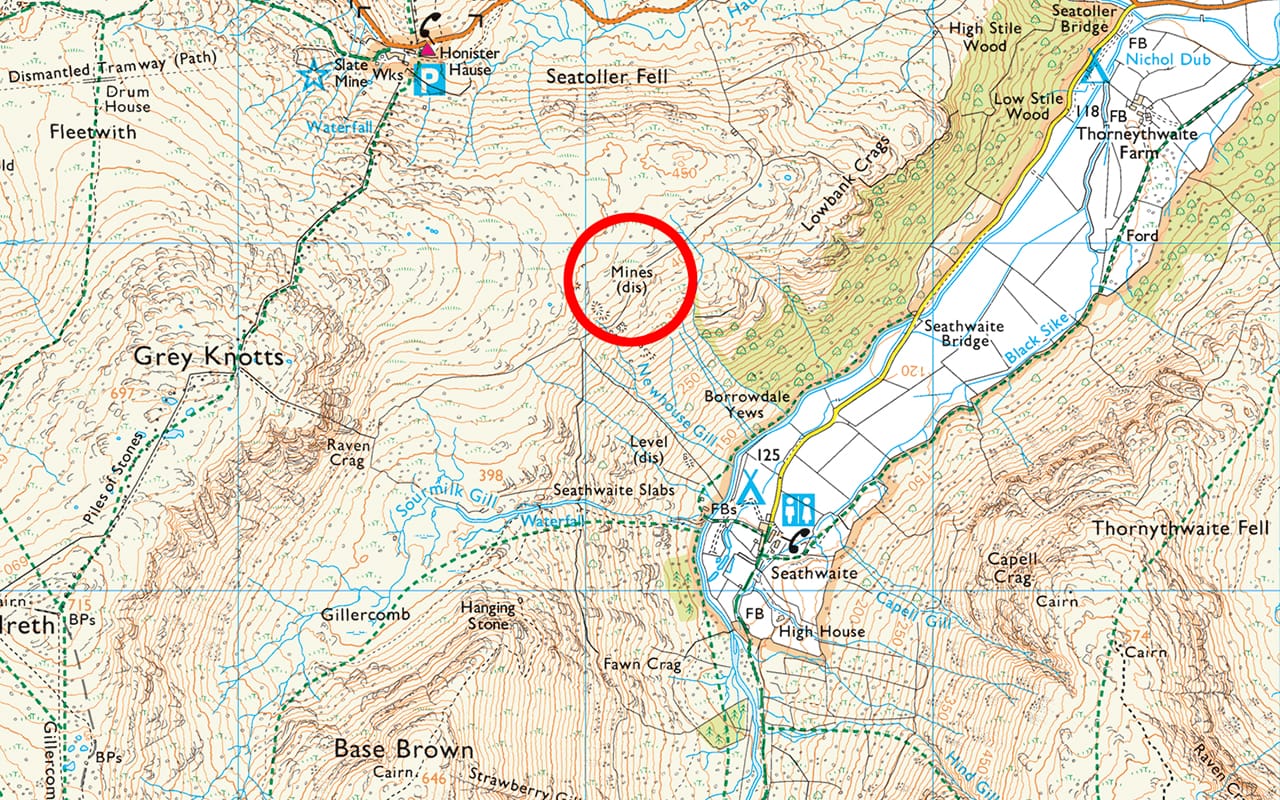
The Commissioners claimed the site for The Crown and leased out the mining rights to a succession of people. The lease was taken up by the Hochstetter brothers in 1607. They were German mining experts and were already involved in the Keswick copper mines.
As an aside, it is from German miners that Cumbria developed one of the county’s greatest food exports: the Cumberland Sausage!
The discovery of graphite at Seathwaite in Borrowdale sparked centuries of graphite mining around the world including Spain, East Indies, and Mexico. Despite this, nowhere in the world has there ever been graphite as solid and pure as what was found in Borrowdale. In fact, Borrowdale graphite remains the only site of graphite mining in the entirety of the UK.
What does graphite and graphite pencils have to do with sheep?
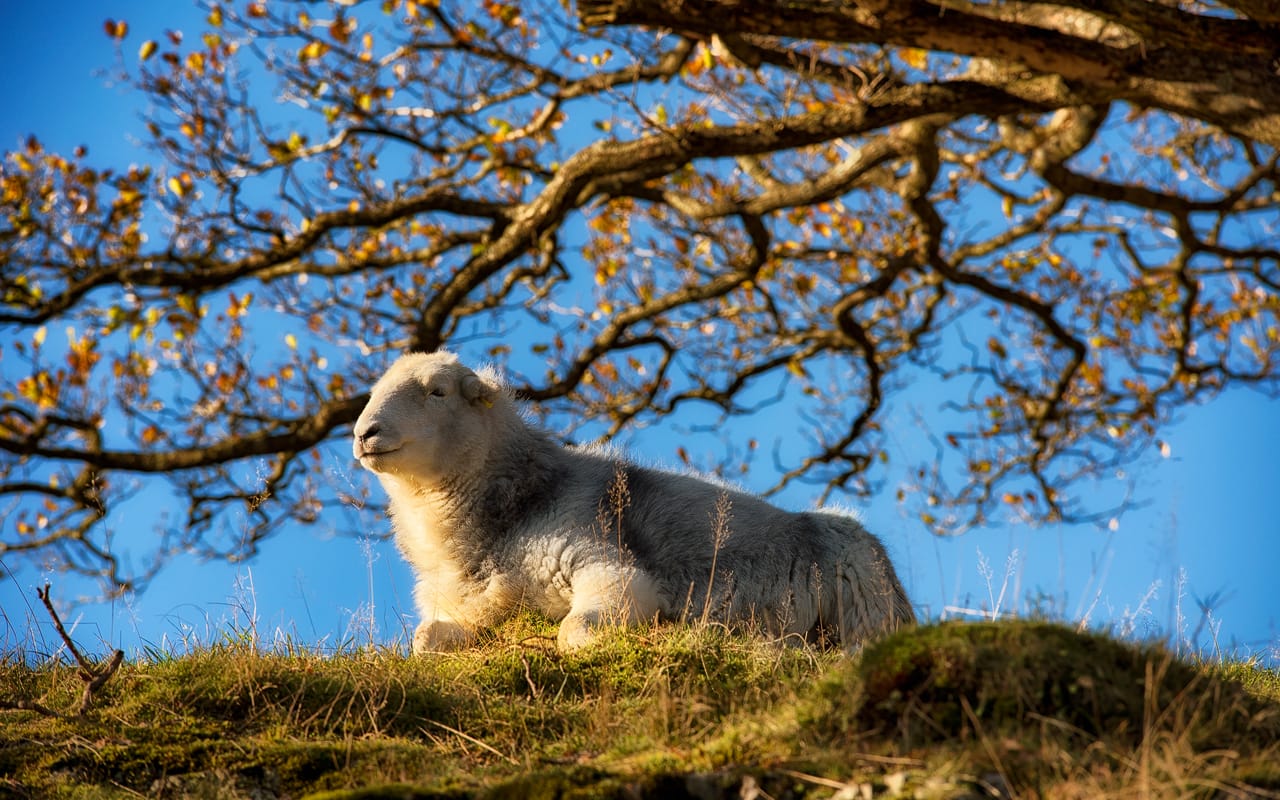
It took a couple of centuries after the discovery of Borrowdale graphite in the 16th century before pencils were made using the material.
The first use of graphite was for marking sheep and rust-proofing stoves, and it’s a good bet that the sheep in question would have been Herdwicks!
As is common in human history when new minerals are discovered, graphite’s potential medicinal properties were experimented with. People would grind graphite into a powder and mix it with wine or ale to cure ailments such as colic, gallstones, and strangury. Likely, this probably did more harm than good. If ingested, graphite powder can cause gastrointestinal irritation resulting severe illness.
Fortunately, its use quickly moved beyond this stage and it was discovered that graphite was an excellent industrial lubricant. It was used to lubricate ship rigging, improve moulds and castings, and for polishing and protecting ironware.
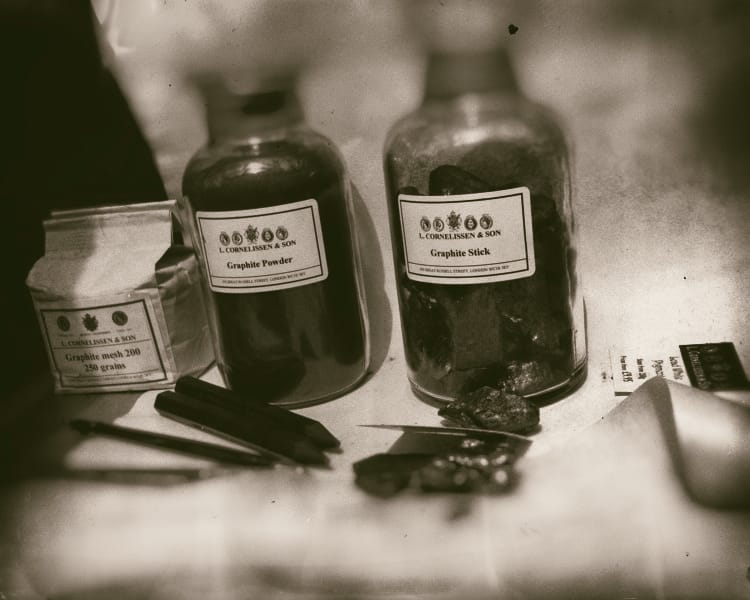
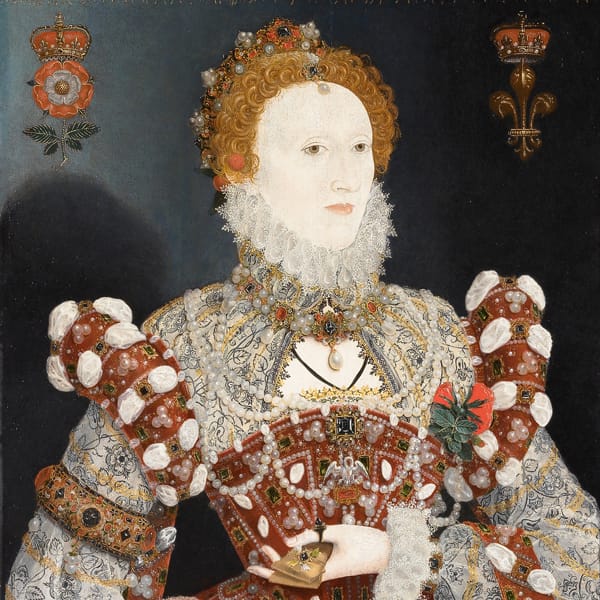
During the reign of Queen Elizabeth I, it was used to make moulds for cannon balls. This resulted in rounder, smoother balls that could be fired further, improving the already impressive strength of the English Navy.
Because of these industrial and military uses, demand in premium graphite grew massively. Per ton, the value of graphite increased from £18 in 1646 to £3,920 in 1804. To put that in the context of today’s money, the value of graphite grew from £4,068.27 per ton to £401,158.23 per ton, a 9760% increase!
Unfortunately, the increasing value of graphite attracted thieves and other nefarious characters. It got so bad that in 1752 an Act of Parliament was passed making unlawful entry into a graphite mine a crime. Guardhouses were erected around the mine in Seathwaite to protect the precious resources within.
With the protection of the law and constantly growing price, it’s fair to say that the Crown enjoyed a monopoly on the Borrowdale graphite mine. This was aided by working the mine irregularly; after discovering a large vein of graphite the mine would close, sometimes for up to seven years, keeping the price of graphite artificially high. In fact, penalty clauses were written into sales agreements in the 18th century to make sure these closures happened.
The advent of the Keswick pencil factories
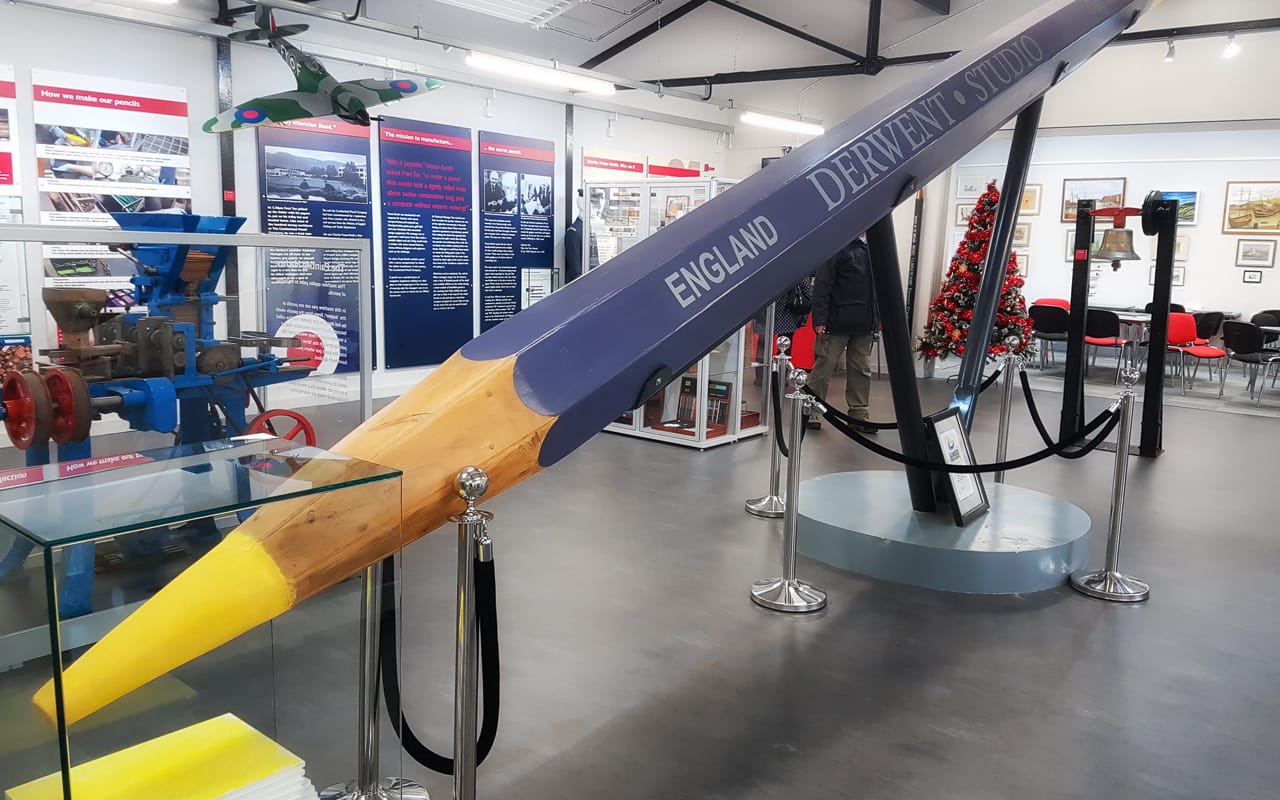
In the late 18th century Keswick started to become well-known for producing some of the finest pencils in the world. They were handmade by a variety of small workshops using pure, solid sticks of graphite from the nearby Seathwaite graphite mine.
Mining operations in Borrowdale wound down towards the end of the 19th century as the graphite deposits were exhausted. Added to that, most pencil manufacturers were also switching to pencil pigments made from the economical blend of graphite powder and clay powder, imported from outside the UK. In 1891 the graphite mine at Seathwaite closed for the final time.
The first pencil factory was opened in Keswick by Banks, Son & Co. in 1831. The company grew and changed ownership over time, becoming the Cumberland Pencil Company in 1916 and introduced the first ever colour pencil. The company later rebranded as the Derwent Cumberland Pencil Co. before being bought by US stationery corporation ACCO Brands (formerly Rexel) in 1980.
Today Keswick is famous for being the home of the Derwent Pencil Museum, which first opened its doors in 1981. Did ewe know that it houses one of the largest colouring pencils in the world? It was made in 2001, measures 26 ft long and weighs over 70 stone!
From graphite pencils to the birth of Herdy

Herdy was created after co-founders and designers Spencer and Diane Hannah chanced upon a Herdwick ewe in the Langdales, peeping at them with its cute and smiley face.
After a photo was captured, it was only natural for Spencer and Diane to turn to the pencil and make those preliminary sketches that ultimately led to the creation of the Herdy brand.
With the Herdy Line design we celebrate the story of Herdy, the Herdwick, and Borrowdale graphite coming full circle.
We hope you love this design as much as we do.
Featured Products
There's nothing nicer than climbing onto a supremely comfortable mattress after a hard day. But for some of us, it's not about being comfortable and relaxed at home. It's about adventure, experience, and the straight up bizarre. It's about extreme sleeping! Whether it's dangling off a sheer cliff face, under the sea with the fish, or deep in the bowels of a silver mine, humans have slept wherever it's possible.
Here are some of the most extreme places people have slept.
Extreme sleeping: dangling from a cliff
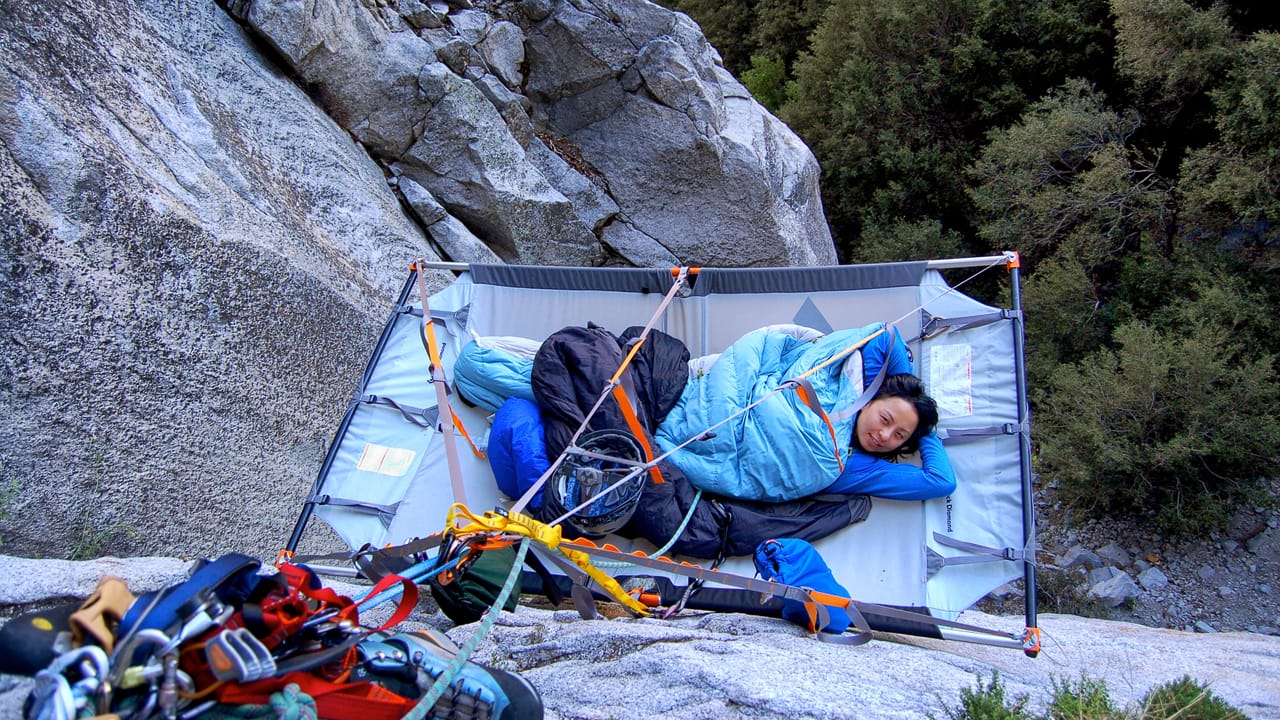
Wherever there has been a tall and imposing lump of rock, there’s been a human who thought, “I want to climb that.”
This brings us to the incredible sights of the Yosemite Valley, California, USA. Featuring a multitude of waterfalls, forest trails, and sheer mountains that rise 3,000+ ft from the valley floor, the valley sees about 5 million tourists a year. Whilst some of those will prefer the gentle hikes around the valley, others come with a strong purpose to climb some very tall rocks.
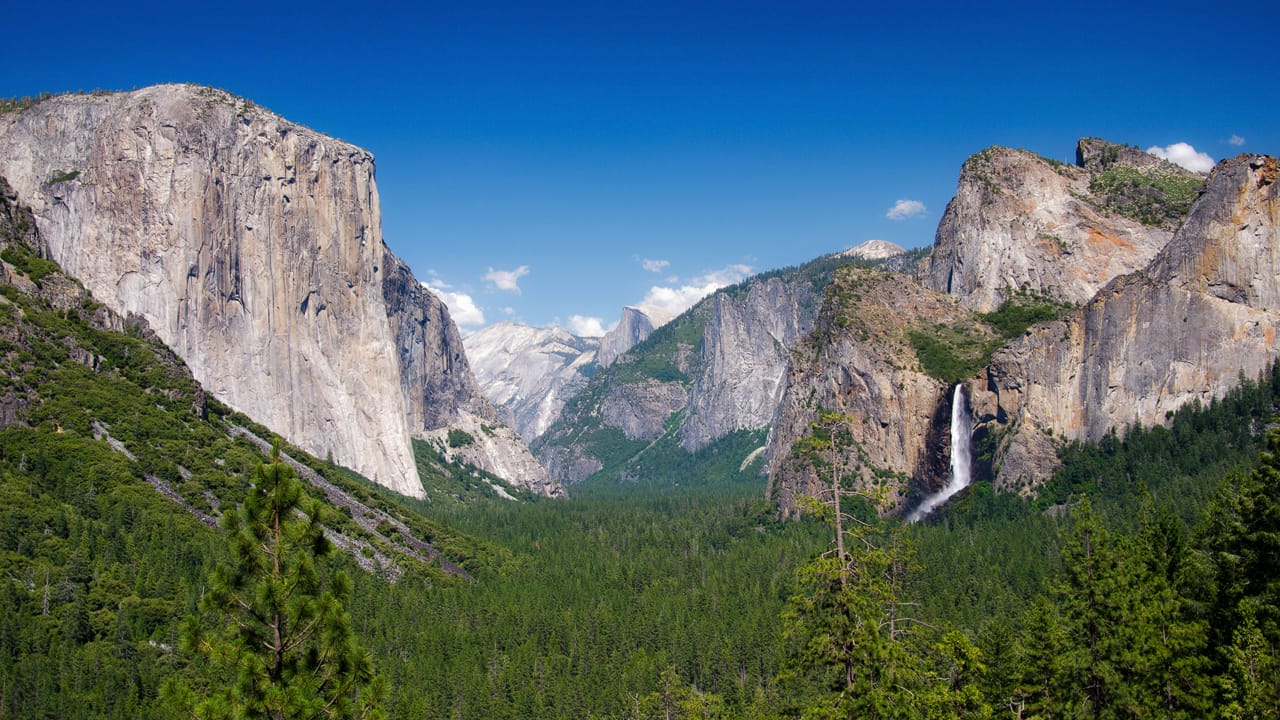
The Yosemite Valley has been a major world rock climbing attraction since the 1950s, especially the 3,000 ft granite face of El Capitan. The mountain was first climbed in 1958 by Warren Harding and took 47 days to achieve. Harding would often rest on natural ledges in the cliff face to achieve this feat.
In the 1960s climbers tackling the multi-day climb of El Capitan hammered traditional two-point hammocks into the cliff face and slept in those. The problem? They were liable to tipping in storm conditions. Can you imagine! Now that's extreme sleeping.
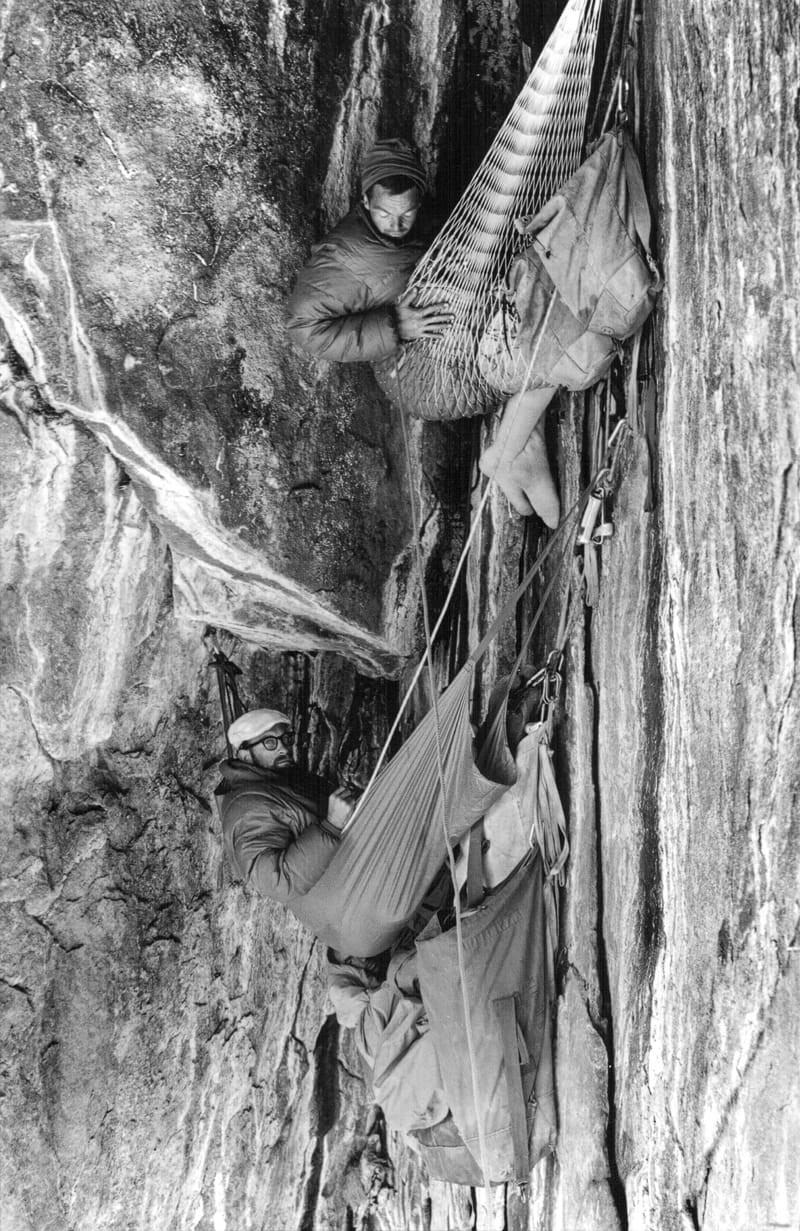
Instead, Harding invented a single-point hammock system that he called a B. A. T. Tent, which stands for "Basically Absurd Technology". The basic idea of this tent has been expanded on ever since, but the first few iterations offered no weather resistance and crushed people's shoulders. Not exactly comfortable.
Another two climbers, Billy Westbay and Bruce Hawkins, aimed to improve comfort levels of this single-point hammock system by creating the first “portaledges”, that is “porta” and “ledges”. They reused steel and canvas cots from the Yosemite lodges. These were more comfortable to sleep in, but were rigid, cumbersome, and weighed up to 30kg, 3x more than today's equivalent.
Portaledge technology continued to evolve and in the 1970s brothers Gregg and Jeff Lowe designed a collapsible version. This has been the standard since.
In the 1980’s John Middendorf, a Stanford-trained mechanical engineer, founded A5 Adventures. He designed and sold the world's first commercially successful portaledges.
He was so confident in his designs that he used his own product for the first ever ascent of “The Grand Voyage” on the Great Trango Tower in 1992, the longest vertical big wall (1350m/4,429 ft) in the world.
The technology and availability of portaledges has advanced to such an extent that many companies and tourist destinations now offer “Cliff Camping” experiences, when sleeping on the ground in the great outdoors just isn't enough.
If you're looking for such an extreme sleeping experience in the Lake District, look no further than Honister Cliff Camping, offered by Honister Mines.
Extreme sleeping: underneath a giant boulder
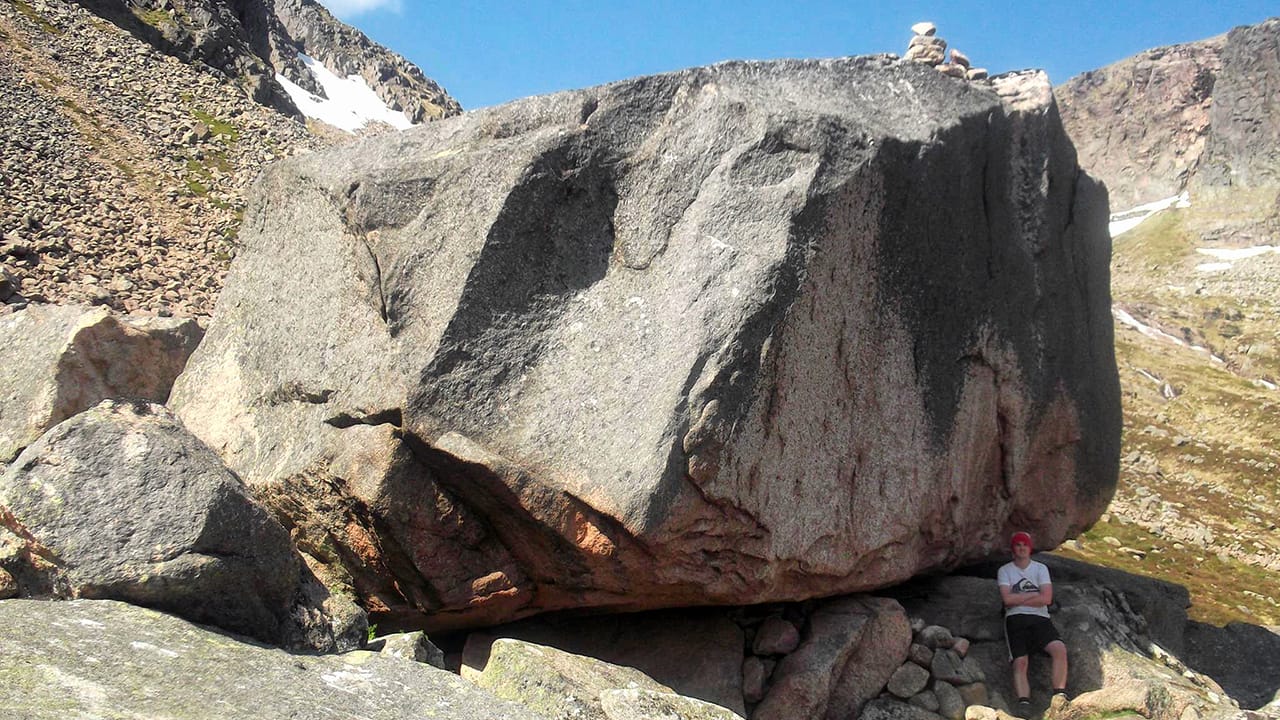
If you're feeling bold, wild and adventurous, and want to completely throw the idea of “comfort” out of the window, then how about this for an extreme sleeping idea.
The Cairngorms, in the north east of Scotland, is one of the UK's "youngest" National Parks, officially formed in 2003. The area is home to numerous lochs, forest parks, and some of the tallest mountains in all the British Isles, including the UK's second highest peak Ben Macdui at 1,309 m/4,295 ft.
Northeast of the mountain is a beautiful, glaciated valley holding the waters of Loch A'an or Loch Avon. The scenes from this freshwater loch are immense, as some of Scotland's highest mountains rise almost vertically from the loch shore.
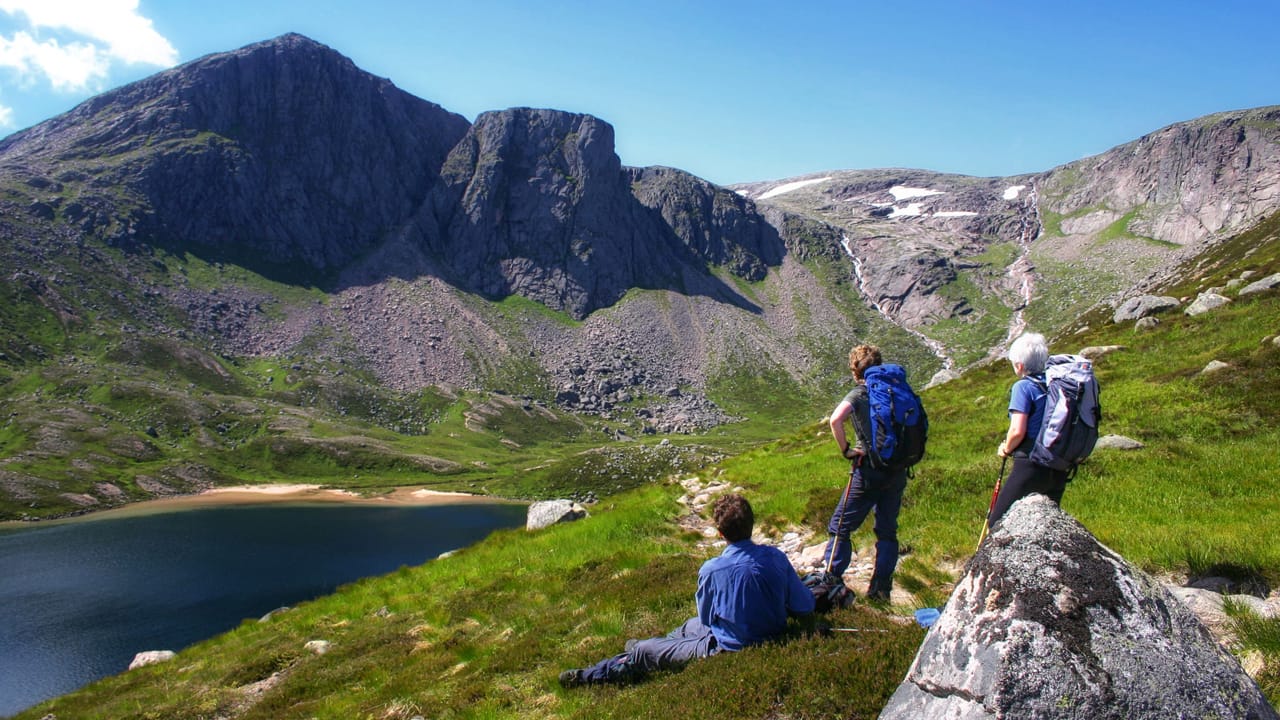
At the head of the loch, lying amongst the scree below the imposing face of Shelterstone Crag, one can find a massive boulder resting on some smaller rocks. With the angle of the slope, it looks possible that you can just crawl right under the boulder for a kip.
In fact, that's just what people do. This is the Shelter Stone, and it is appropriately named.
You can read Dan Aspel’s fascinating tale of sleeping under the Shelter Stone in this remote glen. Here’s a choice quote from Dan’s article:
“You’ll have to duck to enter, but a stack of stones marks it as a human place, and once within the darkness you’ll see further signs of life. Stones, rocks and old pieces of fabric have been piled up against the various cracks between the Stone and its base in a mostly successful attempt to keep out the wind. There’s about as much room as a double garage, half of it so low that a full-grown adult can’t stand up without stooping. The lower half of the ‘roof’ also collects rainwater and condensation, dripping down onto the least roomy section of the cave when the weather isn’t favourable. For that reason, Dan and I pulled out our roll mats, sleeping bags and bivvy bags and set them up close by one another in the taller, drier half of the shelter. A discarded piece of plastic tarp formed another welcome barrier between us and the ground. The world outside becoming increasingly unwelcoming, we soon had head torches on, stoves fired up and clusters of tea lights flickering in the most wind-protected corners. It almost felt like home: which, for the next 12 hours, spent for the most part huddled in the warmth of our individual beddings, it was.”
Should you decide to venture into this glen for some extreme sleeping under the Shelter Stone, then you can claim that you've “slept between a rock and a hard place”.
Extreme sleeping: inside an ice cave
If you have grown bored of being toasty and warm in your bed and fancy pushing your body to the extreme how about this for an extreme sleeping experience?
North of Norway, towards the Arctic Circle, an endless expanse of water dotted with ice contains an archipelago completely frozen and covered in mountains and glaciers.
This is Svalbard.
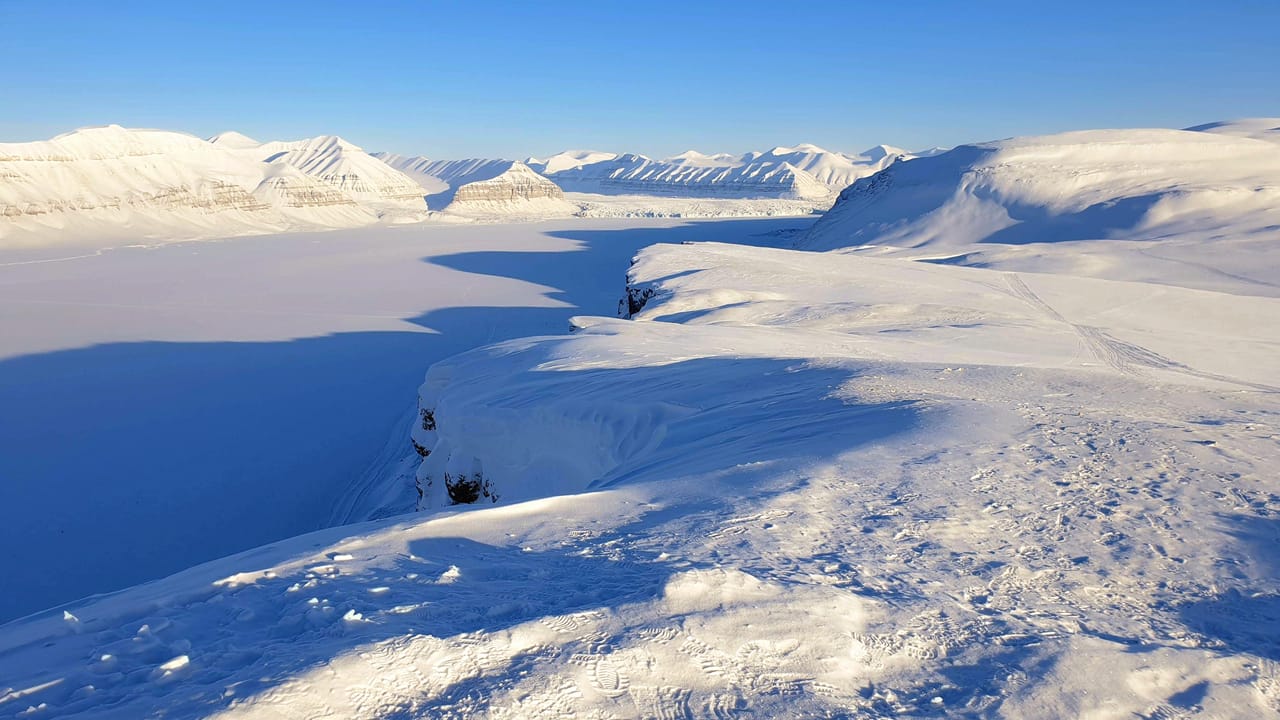
Previously known as Spitzbergen, the Norwegian cluster of islands known as Svalbard is in the Arctic Sea, halfway between the northern coast of Norway and the North Pole. First used as a base by whalers in the 17th and 18th centuries, these days the primary economic activity on the islands is coal mining. This place is pristine, largely untouched by man, and cold. Average temperatures during summer range between 4–7°C, and plunge to between -13 and -9°C in the winter. As a result of its location and cold temperatures Svalbard is known for its glaciers, which cover around 60% of the islands, fjords, and mountains, with the highest peak at Newtontoppen (1,717 m/5,633 ft).
Seen as a wild and pristine winter paradise, tourism is a growing sector on Svalbard where visitors come to embrace the Arctic conditions and enjoy the wildlife, the mountains, and the glaciers. In fact, one such activity tourists can experience is sleeping in an ice cave on a glacier.
Offered by Svalbard Wildlife Expeditions, the experience involves taking advantage of the Polar Night conditions of Svalbard during the winter. Adventurers head out to hike up the glacier away from the lights of Svalbard’s largest settlement, Longyearbyen. Once in the deep darkness of Polar Night, the eye adjusts to see a clear night sky full of stars and galaxies, and perhaps even a display from the aurora borealis!
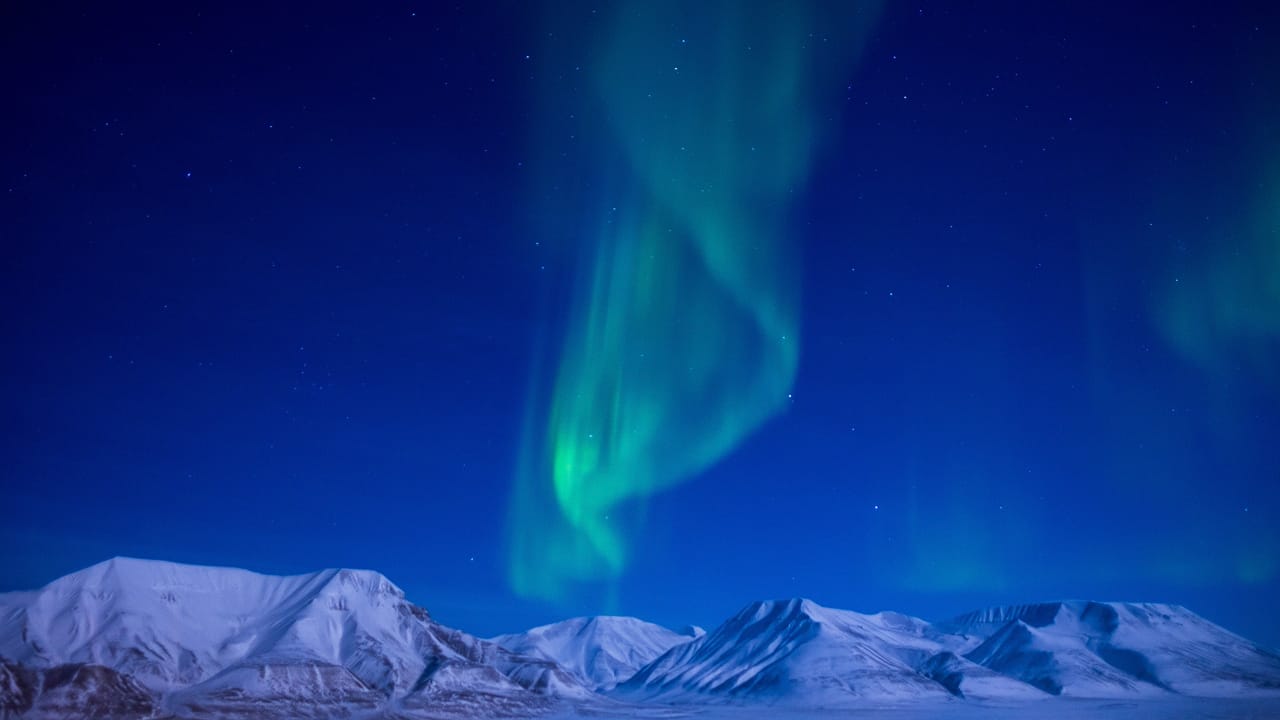
The guide then takes hikers into the glacier to reveal tunnels and hallways of ice caves which will be their room for the night, deep inside a glacier.
Sleeping in a silver mine
If hiking out in subzero temperatures during the Polar Night to sleep in an ice cave seems a little too extreme let us take you somewhere more unusual.
Away from the frozen mountains and endless ice of the Svalbard archipeligo, we head south to Sweden, northwest of the capital Stockholm to the municipality of Sala.
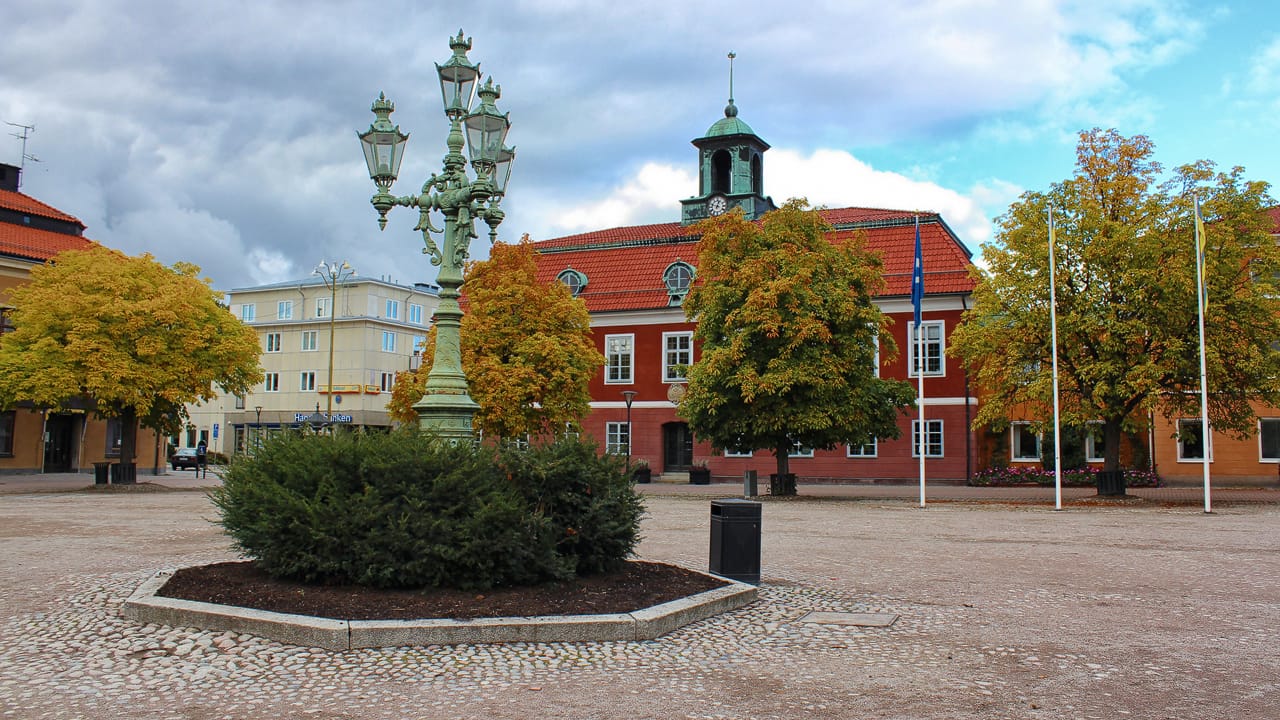
The pretty and petite city of Sala might seem unremarkable to most, but it is the home of Sala Silver Mine, or Silvergruva. The mine was in continuous operation from the 15th century until 1908, that’s around 500 years of mining! In total, miners extracted 400 tonnes of silver from the mine, about 3–5 tonnes every year, plus 40,000 tonnes of lead. The silver was economically important to Sweden, and was used as a base in the production of coins.
Today, Sala Silvergruva functions as a tourist attraction, where visitors can enjoy guided tours down the mines. In some of the bigger chambers, there are even concerts arranged. More unusually, you can also sleep in the mines, if you want.
At 155 m/508 ft underground, this hotel suite may well be the deepest in the world. It's furnished with a luxurious double bed, champagne, and all the silver trimmings (obviously). Temperatures in most of the tunnels sit at around 2°C, a little chilly, but happily the hotel room enjoys a warm pocket of air, keeping it at about 18°C.
As you would expect, you can't get mobile phone coverage that far underground, so the only way to communicate with the outside world is via an intercom, which you can use to contact an on-call staff member.
Where’s the most extreme place ewe’ve slept?
Where is the most place extreme place you've ever slept? How did you do it? Did you enjoy the experience?
Reply with the hashtag #ExtremeHerdySleepover for a chance to be included in this post. Also, join the flock on our Facebook, Twitter, or Instagram, or you can email us, too.
Your #ExtremeHerdySleepovers
Raonaid Uallas
“In the Umfolozi, South Africa. I did a primitive trail there, 5 days and 4 nights sleeping out in the bush. 8 of us and 2 armed Rangers. We took all we needed in a pack on our backs. Walked 10 km a day, slept at night under the stars, no tents . We all took a turn at night watching to make sure no lions or leopards crept up unawares. It was a most fantastic experience, even getting charged at by rhinos at one point. Enjoyed every minute of it…”
Di Gough
“Underneath the stars in the Namibian Desert (with Barking Geckos all around). We were on a 9-day tour in a small group of different nationalities. We got to the lodge for the night, everyone was assigned their rooms except us and another couple. We were taken on a 20-minute journey to another lodge on a high plateau overlooking the desert. We were allocated our chalets and found out they all had decks and rollout beds, so you rolled your bed out to sleep under the stars! That night we had the only rain shower of the whole trip! The stars above were incredible (before the rain) but a lot of time was spent listening to the scrabbling and scuttling noises on the deck, plus a few grunts (not us!) and the Barking Geckos! Amazing night!”
Diver Derek
“A WW2 German Pillbox. The Chanel Islands, Alderney in particular, have many German Pillbox’s around their shore line. They were built to last, many tons of concrete for even quite a small one. Nowadays they are owned by those that own the land, and are used for storage etc., no way can they be removed. Back in the 60’s our scout group would regularly have our two-week summer camp on the island. We had a minibus which would bring over the tents etc., and the scouts would fly over. One year, the tents had to catch the ferry, and the flights were postponed for a day. A quick ring round the local people and we were offered the use of a completely empty pill box. Our scout group had made many friends over the years, a couple even married local girls, so yes I slept in a very cold, German Pillbox!”
Johnathan Heywood
“In the drying room of the Leeds university mountain hut. I swear my mouth had turned to sandpaper overnight.”
There are many mountains higher in the British Isles, and plenty that are more popular to climb. But Blencathra has a unique charm and attraction of its own.
Also known by its alternative name Saddleback, the fell has many different “faces”. From the south Blencathra has smooth shoulders leading to a jagged and craggy summit. From the east it becomes clear where Blencathra gets its alternative name from. The summits of Hallsfell Top and Atkinson Pike present a shape like a chair back or a saddle.
Blencathra was one of Alfred Wainwright’s favourite fells, and wrote more about this fell than any other. As we’re unlikely to do any better, we’ll begin this post with a quote from the man himself:
“Blencathra is one of the grandest objects in Lakeland. And one of the best known. Seen from the south-west, the popular aspect, the mountain rises steeply and in isolation above the broad green fields of Threlkeld, a feature being the sweeping curve leaping out of the depths to a lofty summit-ridge, where the skyline then proceeds in a succession of waves to a sharp peak before descending, again in a graceful curve, to the valley pastures far to the east.”
Blencathra: the beginning of the Lake District
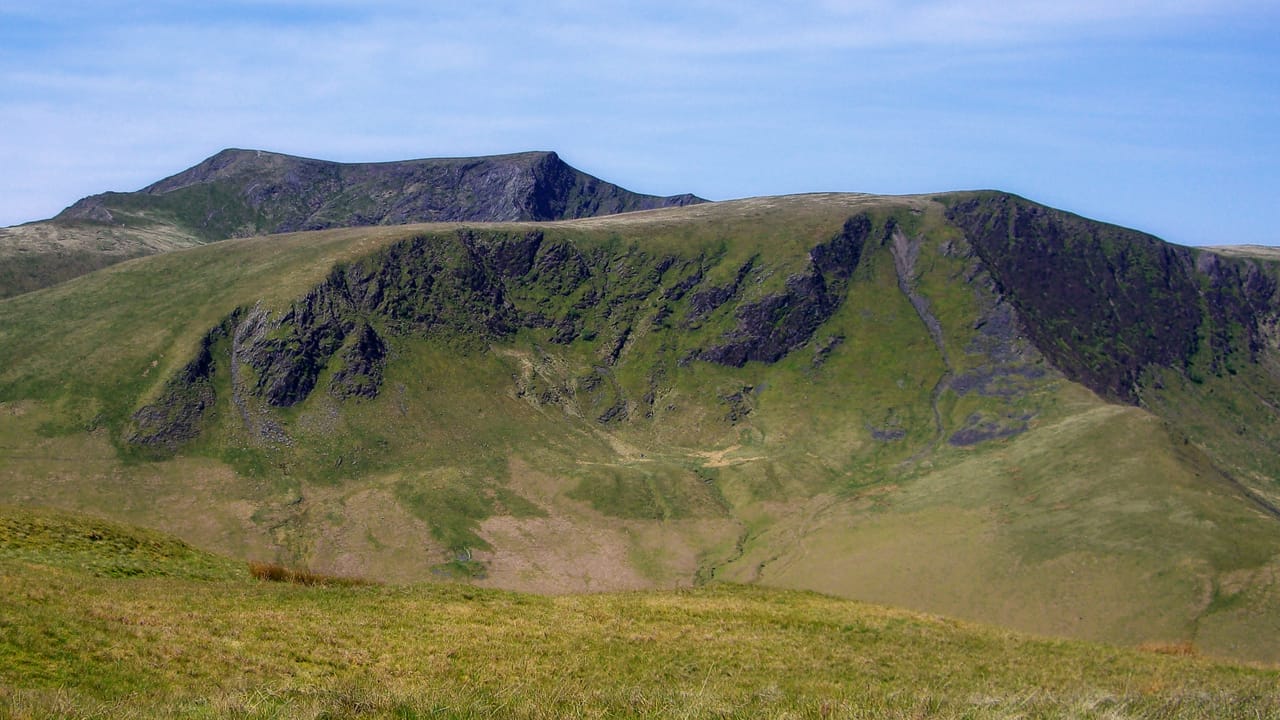
Blencathra is part of the Skiddaw Group, the oldest rocks in the Lake District. The group is roughly 500 million years old. Skiddaw and Blencathra are, thus, the oldest mountains in England.
They formed as black muds and sands settling on an ancient seabed. Over time they rose up and crushed together over the course of millions and millions of years. More recent periods of global cooling and Ice Ages covered much of Britain in sheets of ice. Some of these were several miles thick. As the planet warmed up, the glaciers carved out the deep gills and valleys characteristic of the Northern fells.
Blencathra facts and figures
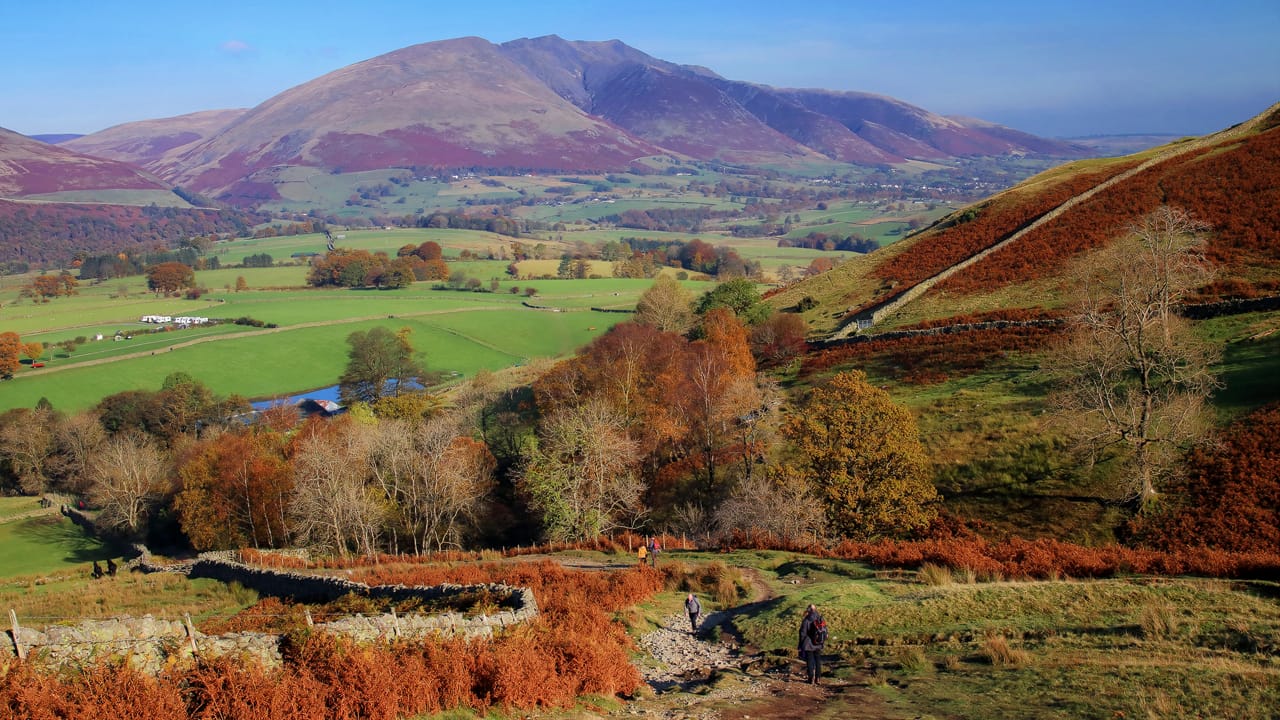
Blencathra is 868 m/2,848 ft above sea level, making it the 14th highest Lake District peak. It is the 290th highest peak in all the British Isles.
Blencathra actually has 6 tops, and they are (in no particular order):
- Blease Fell
- Gategill Fell
- Hallsfell
- Atkinson Pike
- Doddick Fell
- Scales Pike
Blencathra or Saddleback: what’s in a name?
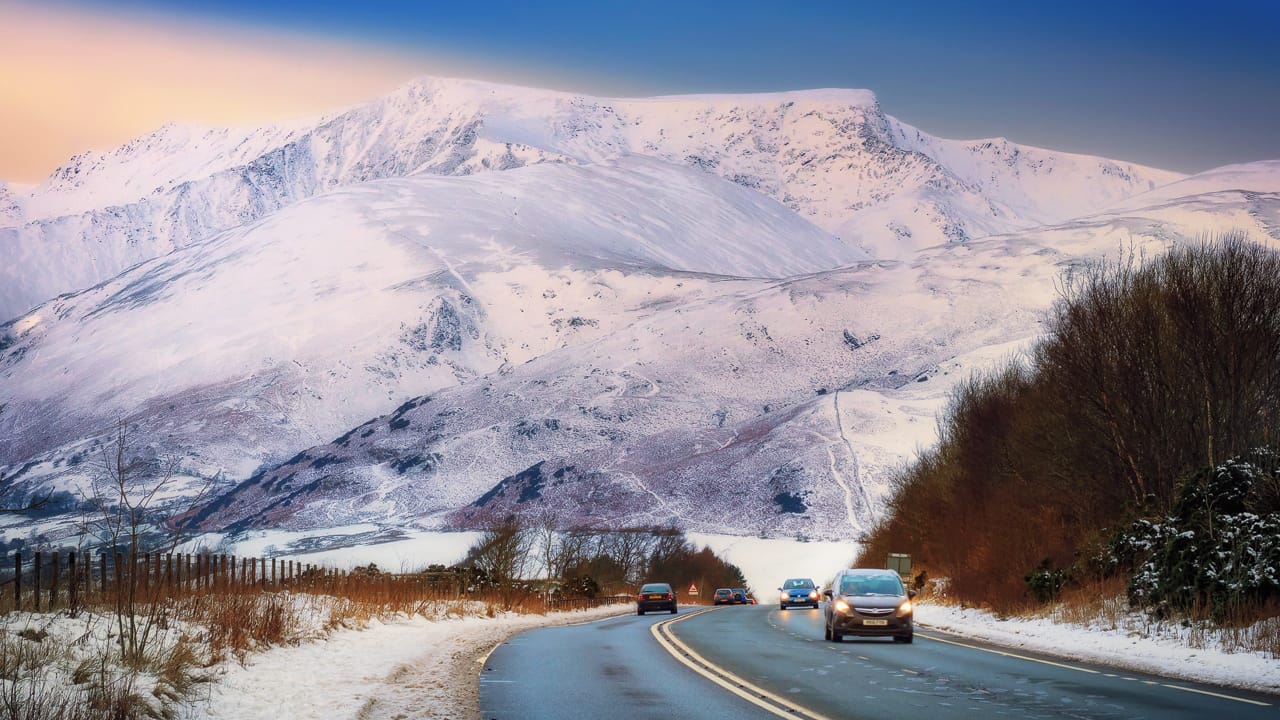
Blencathra is somewhat unusual in the Lake District for having two names in common usage.
In the late 1800s to early 1900s the mountain’s name was Saddleback, and marked so on Ordnance Survey maps. The name references the fell’s profile when viewed from the east. The ridge between Hallsfell Top and Atkinson Pike dips in the middle and puts one in mind of a chair back or a saddle.
When Alfred Wainwright arrived in the Lake District he climbed the fells for his guidebooks. He popularised the use of the fell’s older Cumbric name: Blencathra. This has stuck ever since. Nowadays, Ordnance Survey maps reference both names for the fell as Blencathra/Saddleback.
There’s a few theories about what the fell’s old Cumbric name means:
- The predominate theory is that it’s made from two Cumbric elements. Blain, meaning “top” or “summit”, and cadeir meaning "“seat” or “chair”. This gives us “the summit of the chair/seat-like mountain”;
- Another theory states that the second part of name comes from the Cumbric word carthwr. This comes from Middle Welsh meaning “working horse”, referencing the dipped back of an aged working animal;
- A more obscure idea suggests that the second aspect of the fell’s name could come from the Middle Irish personal name Carthach. How well Middle Irish was known thousands of years ago in Cumbria is unclear;
- Finally, local folklore suggests that Blencathra can translate as “Arthur’s Seat”. This references the mythology of King Arthur i.e. “-athra” to Arthur.
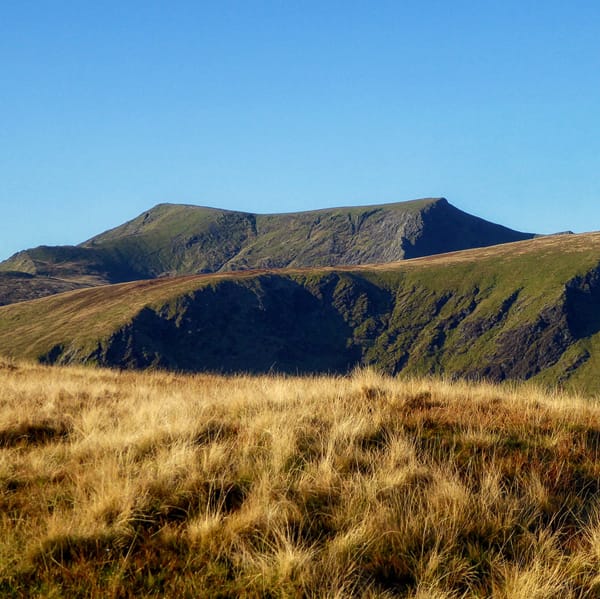
Cumbric is an ancient Brittonic language, related to Old Welsh. That’s why there is a similarity between the name Blencathra and Welsh places like Blaenau Ffestiniog. Here, blen and the modern Welsh blaen both mean “summit, top”. Cumbric went extinct in the 12th century after the Kingdom of Strathclyde folded into the Kingdom of Scotland.
Cumbric survives in place names around Cumbria and northern England, such as in Carlisle and Penrith. Also, the ancient sheep-counting numbering system (yan, tyan, tethera etc.) probably originates from Cumbric.
Blencathra’s industrial and farming heritage
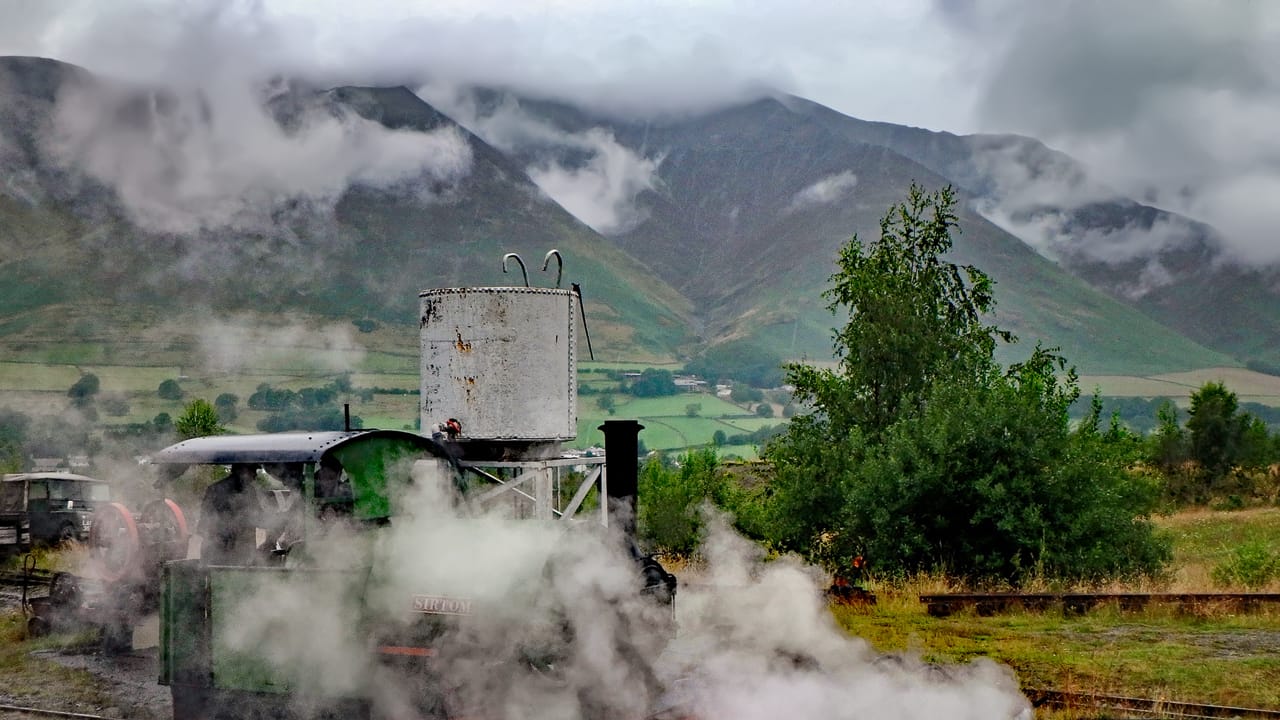
Like other Lake District fells, Blencathra has seen centuries of sheep grazing activity.
Less known is Blencathra’s industrial and mining heritage. Back in the late 19th and early 20th centuries, the fell was the site of several mines. The main one was Threlkeld Mine & Quarry, located near the base of Hallsfell. Operations ran for around 50 years between 1879 to 1928, mining zinc and lead ores. A Mr. H. Harkewitz opened the quarry to supply railway ballast to the Penrith–Keswick line. Track ballast is the loose rocky trackbed upon which railway lines and laid down.
Near the turn of the 20th century, demand had risen and the quarry was outputting 80,000 tons a year. The quarried stone was used for, and by, a variety of schemes, including construction of the Thirlmere Reservoir by the Manchester Corporation.
Nowadays Threlkeld Quarry has transformed into a museum for public enjoyment.
Blencathra: a mountain up for sale
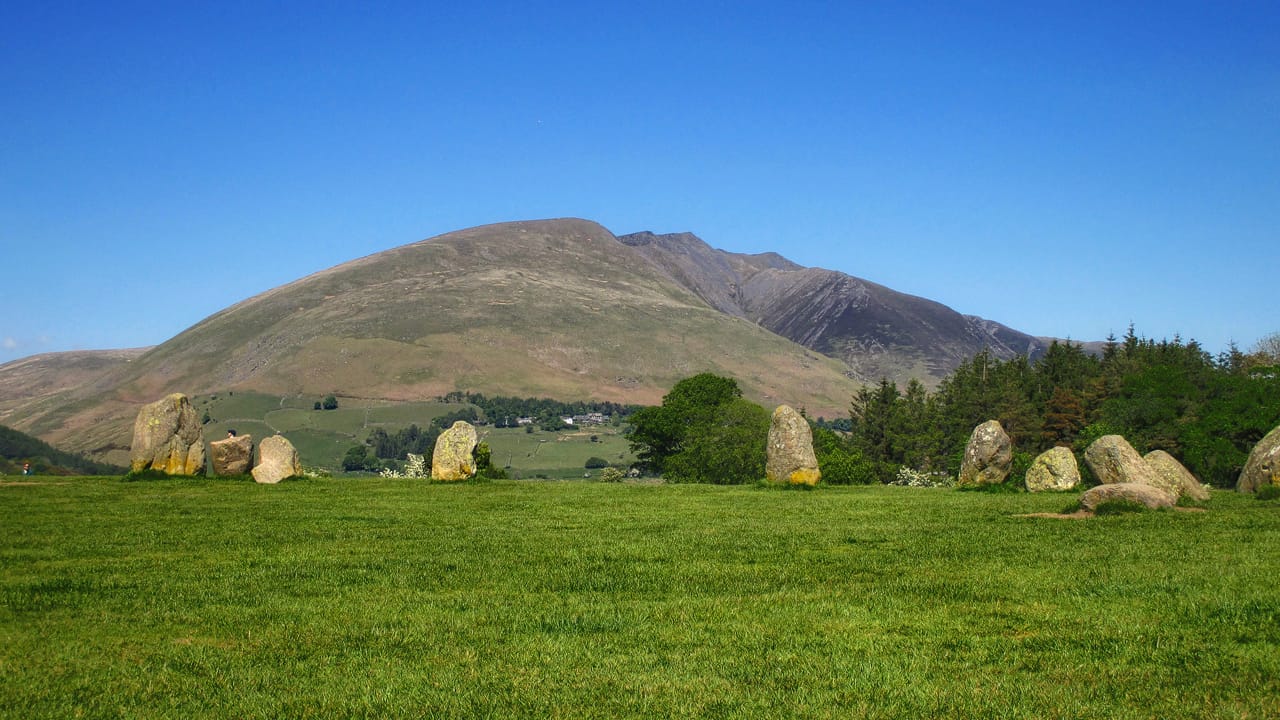
In 2014, something rather unusual happened in the Lake District: a mountain went up for sale.
You see, Blencathra is owned by the 8th Earl of Lonsdale, Hugh Clayton Lowther, part of the ancient Lowther family and heir of the Lowther Settled Estates. The Lowther family have been major landowners in Cumbria since 900AD. The fortunes of the Lowthers has waned since the 20th century. Even so, the current Earl of Lonsdale still owns around 5,000 acres of land, Blencathra included.
In 2014, the Earl announced that he was listing the mountain, as well as the Lordship of the Manor of Threlkeld, for sale. The guide price was £1.75 million. This was to settle an inheritance tax bill.
This news immediately stirred the minds of the public and press alike. A community group soon formed called the Friends of Blencathra. Their goal was to raise enough funds to make a bid for the mountain, keeping the land out of private interests. Another major Lake District landowner, the National Trust, supported the group’s plans and decided not to bid.
By November 2015, the mountain was no longer on the market. By that point, Friends of Blencathra had only raised £246,650 despite wide public support. In May 2016 Blencathra was officially withdrawn from sale after the Earl had identified other means of settling his tax bill.
The Friends of Blencathra group began winding up operations and returning donations. The remaining funds raised that couldn’t be returned were donated to five local charities, and the group ceased to be in 2019.
Who knew one could own a mountain, never mind sell one?
Blencathra walks and routes
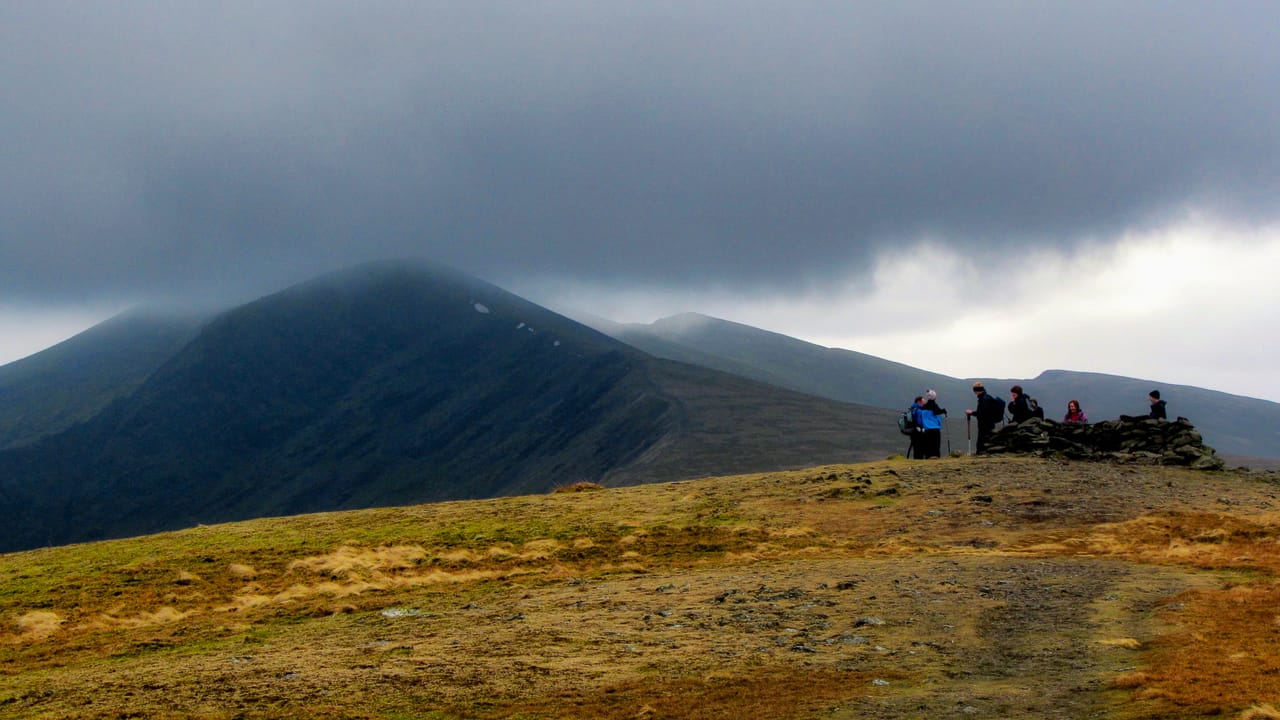
There are many ways to skin the proverbial cat and summit this popular mountain.
Before we detail these routes and ascents, though, we must be responsible people.
Before tackling any of these ascents, you must ensure you have the necessary equipment and knowledge. That means:
- a solid pair of walking boots;
- a paper OS map of the route;
- a compass (and you know how to use it in reference to the map);
- adequate outdoor clothing for the current and expected weather conditions;
- supply of water and food.
Let close friends or family know what time you’ll be setting off on the walk and what time you expect to return.
For checking specialised weather in the area, we can recommend:
- The Met Office’s Lake District mountain forecast;
- The Lake District Weatherline (active during the winter season);
- The Mountain Weather Information Service for the Lake District
If you are unable to call 999, you can text the emergency services. You’ll need to set it up in advance, find out how to do so here.
One of the easiest ways to communicate your precise location is to use What3Words. What3Words divides the world into 3x3 metre squares, and gives each square a unique and memorable three-word name. Easier to remember and communicate compared to a random string of numbers!
If you’re facing problems on Blencathra, call the emergency services and ask for Keswick Mountain Rescue.
All that being said… here’s some ascents of Blencathra.
1. Via Sharp Edge: the way of the thrill seeker
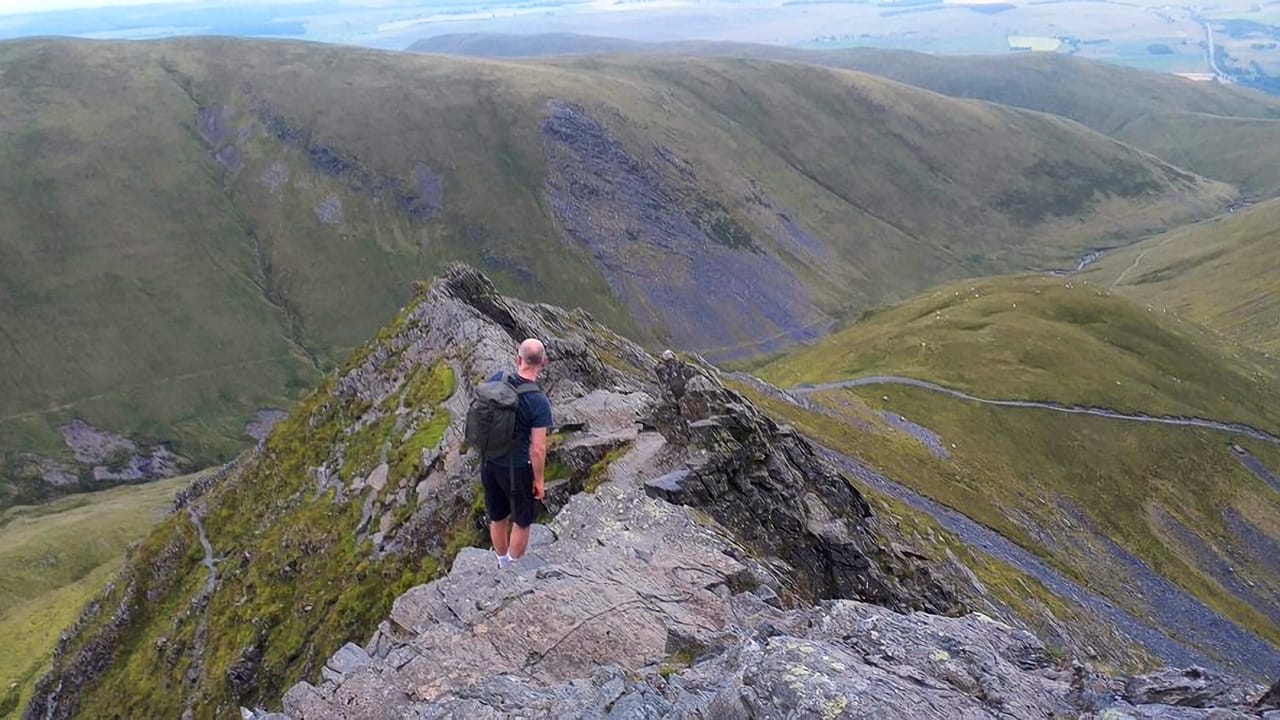
Helvellyn isn’t the only mountain in the Lake District with vertiginous ridges. Blencathra has one too, known appropriately as Sharp Edge. Alfred Wainwright himself, when detailing this route, noted that “The crest itself is sharp enough for shaving (the former name was razor edge) and can be traversed only à cheval at some risk of damage to tender parts.” That’s putting it mildly!
This route is not for the fainthearted. We don’t recommend tackling this during the colder months unless you are already vastly experienced and skilled in mountaineering.
The hike begins at the village Mungrisdale. The village is small but it does have “official” parking opposite the Village Hall (///meanings.driver.heartburn), with an Honesty Box. Follow the road north, walking past the small bridge, and turn left at the red phone box (///pinches.shifts.trainers). Follow this path into the valley of Mungrisdale itself. You’ll want to ensure that the beck, the Glendaramackin, is by your left side all the time. Follow this path, which can be boggy at times, for about a mile southwest, crossing the ford at Bannerdale Beck (///fizzle.booklets.album).
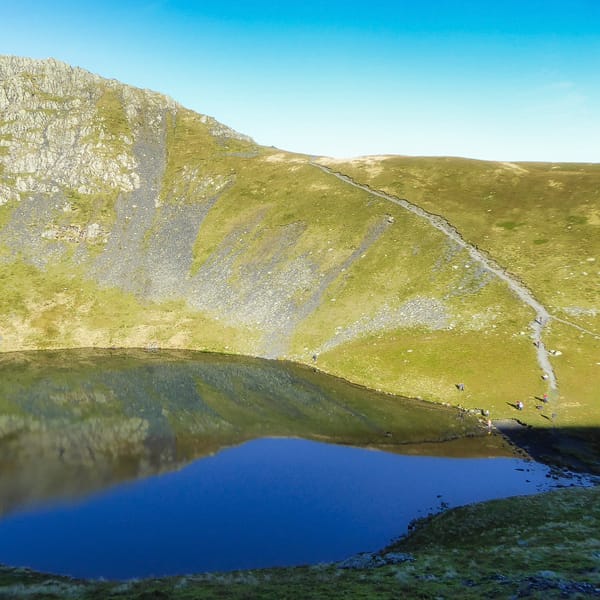
The path will start to rise away from the river at this point; ensure that it’s still to your left. You’ll ford another small beck (///spans.irony.choirs) before the path returns back down towards the river. After about 4 miles of walking you’ll find a footbridge at the southernmost point of the Glendaramackin (///frogs.reform.backhand). Cross the footbridge, and take the zigzagging path up the fell side, heading west (///cigar.mallets.shortcuts) . You’ll be above the river once again, this time it should be on your right. Follow the path as it bends west and head straight towards Scales Tarn (///qualified.blunders.destiny).
That’s the easy part done, which also presents a good opportunity to assess your situation, the weather, and your fortitude. If all is well, you can begin tackling Sharp Edge. Take the path north of Scales Tarn (///congested.having.married), which quickly ascends up onto Sharp Edge. Scrambling is required, and you may well be spending the ascent up this ridge on all fours.
About 150+ metres of ascent, you should find yourself up onto the flat plateau of Atkinson Pike (///petal.beanbag.magazines), 845 m/2,772 ft above sea level. It’s now a simple job to follow the ridge line south towards the summit of Blencathra at Hallsfell Top (///club.dummy.branded).
2. Via Blease Fell: a grassy stroll

If you want an easier route try via Blease Fell, the smooth western shoulder of Blencathra.
Park at the Blencathra Centre (///sized.pirates.ketchup), the path north up Blease Fell starts here. After about 70–80 m of ascent, the path will turn sharply left (///renovated.post.offices). Stay on the path as it ascends up the smooth fell, heading northwest before curving round northeast, aiming for the summit. Continue to follow the clear path up northeast. At about 600 m above sea level the gradient gets steeper for about 50 m or so (///erupts.cowering.changed), before gently ascending northeast once again.
After about 800 m of ascent you will have reached Knowe Crags (///unicorns.verifying.flashing). That’s the hard part done. Well done! You should see the summit of Blencathra, Hallsfell Top, ahead northeast. Follow the ridge line towards the summit, taking care to stay away from the sheer drops to your right.
The views from Blencathra, some of Lakeland’s finest
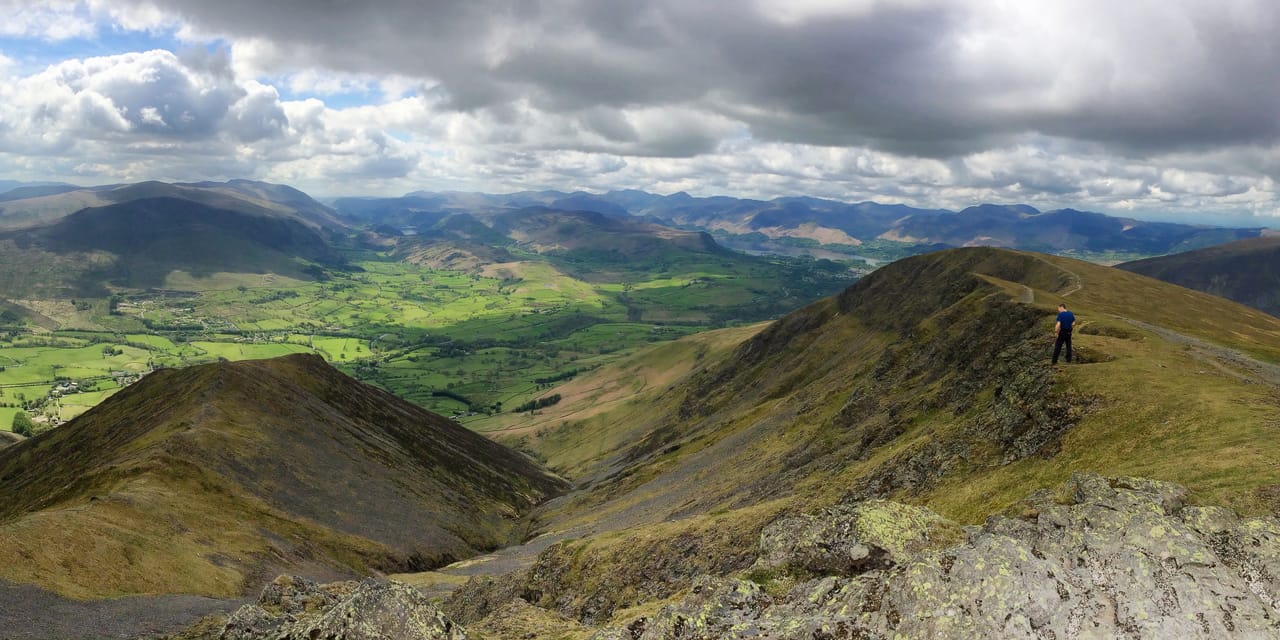
As expected from an isolated fell 860+ m above sea level, the views from the summit are spectacular.
Looking west, across Blencathra’s ridges, is the fell’s taller neighbour, Skiddaw. Scanning from west to northeast, one can see as far as the Galloway mountains (64 miles/104 km away) and the Southern Uplands of Scotland (61 miles/99 km away). Towards the northeast there are views of the Cheviots (67 miles/109 km away) in Northumberland.
The Northern Pennines (23 miles/37 km away) make up most of the view eastward, as well as the Helvellyn massif. The views south to southwest comprises most of the major Lake District peaks as well as Keswick town far below and Derwentwater. On an especially clear day, it’s possible to spot westwards the Isle of Man (65 miles/104 km away) and even the Mourne Mountains (123 miles/192 km away) of Northern Ireland.
Have ewe climbed Blencathra?
Have ewe tried tackling Sharp Edge? Or just gazed at Blencathra's beautiful shape from afar? Let's have a natter in the comments below, or join the flock on our Facebook, Twitter, or Instagram, or email us.
Featured Product
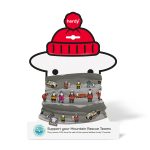
Mountain Rescue Ewe Tube
Our new Ewe Tube neck warmers and scarves feature our most adventurous designs yet. As well as the new Flock pattern and Fell style, you’ll have noticed a rather funky design called Contour. This design is inspired by the contour lines used in terrain maps such as those made by the Ordnance Survey.
When the Lake District fells are depicted using contour lines, they develop their own unique patterns. We wanted to celebrate these characteristics.
If you’ve always wondered what all those squiggly lines mean on an OS Map, then read on.
First, a brief history of the Ordnance Survey map
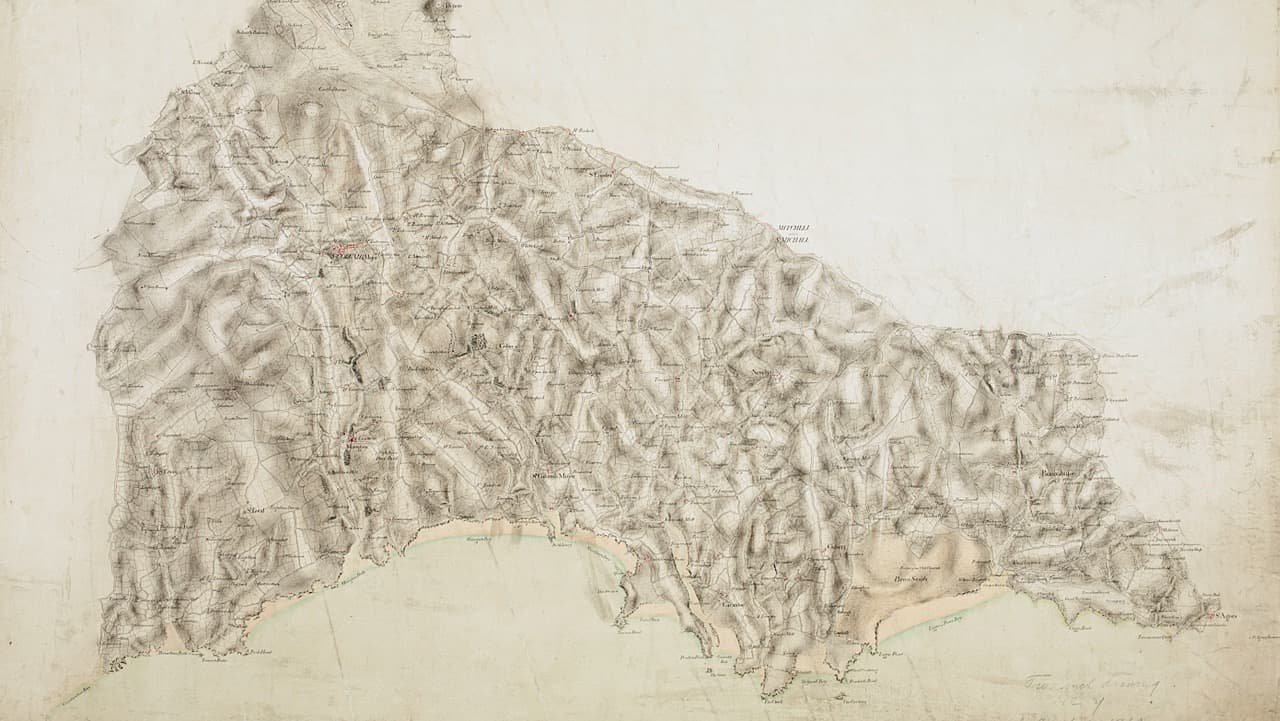
You may well have already guessed from the name where the Ordnance Survey comes from. The word “ordnance” means “mounted guns” or “artillery”.
The Ordnance Survey was developed for military purposes. Following the Jacobite Rebellion in 1745 the British military desired to map out the Scottish Highlands. Not long after, the French Revolution broke out across the English Channel. As a result the Board of Ordnance wanted to survey England’s vulnerable southern coast. There was an expectation of a French invasion.
The task fell to a young engineer, William Roy, who began a small military survey of Scotland. He started in 1747 and it took him eight years to complete what became known as the Great Map. He produced it at a scale of 1:36000, or 1.75 inches to a mile.
To achieve this Roy used compasses to measure angles and chains up to 50 ft long to measure distances. The rest was “eyeballed” via sketches. Even so this was a momentous feat by someone who was only 21-years old at the time.
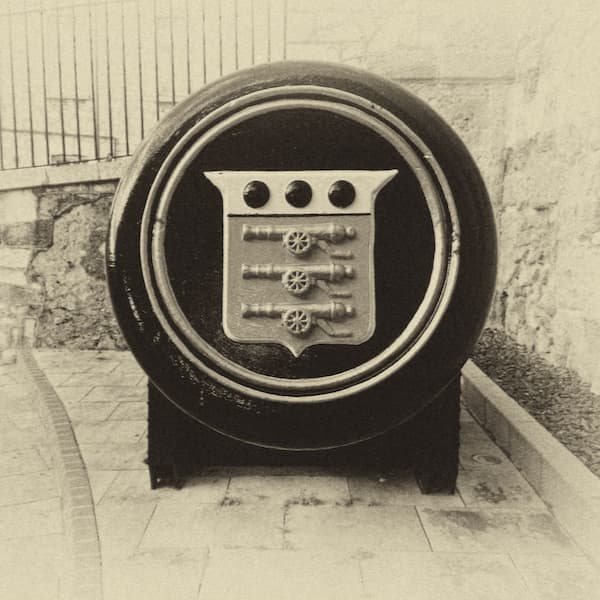
Innovative technology and mapping techniques developed over the following decades. The Ordnance Survey itself formed on 21 June 1791.
By 1801 the first Ordnance Survey map, of the Kent area, was published for public consumption. It took three years to complete, drawn to a scale of two inches for every one mile. At print this became one inch for every mile. It sold for three guineas (that is, three pounds and three shillings). This is about £230 in today’s money!
Four years later the map of Essex was finished and within twenty years about ⅓ of England and Wales had been mapped. The first series of maps for the whole of the UK were published in 1870.
Figuring out contour lines
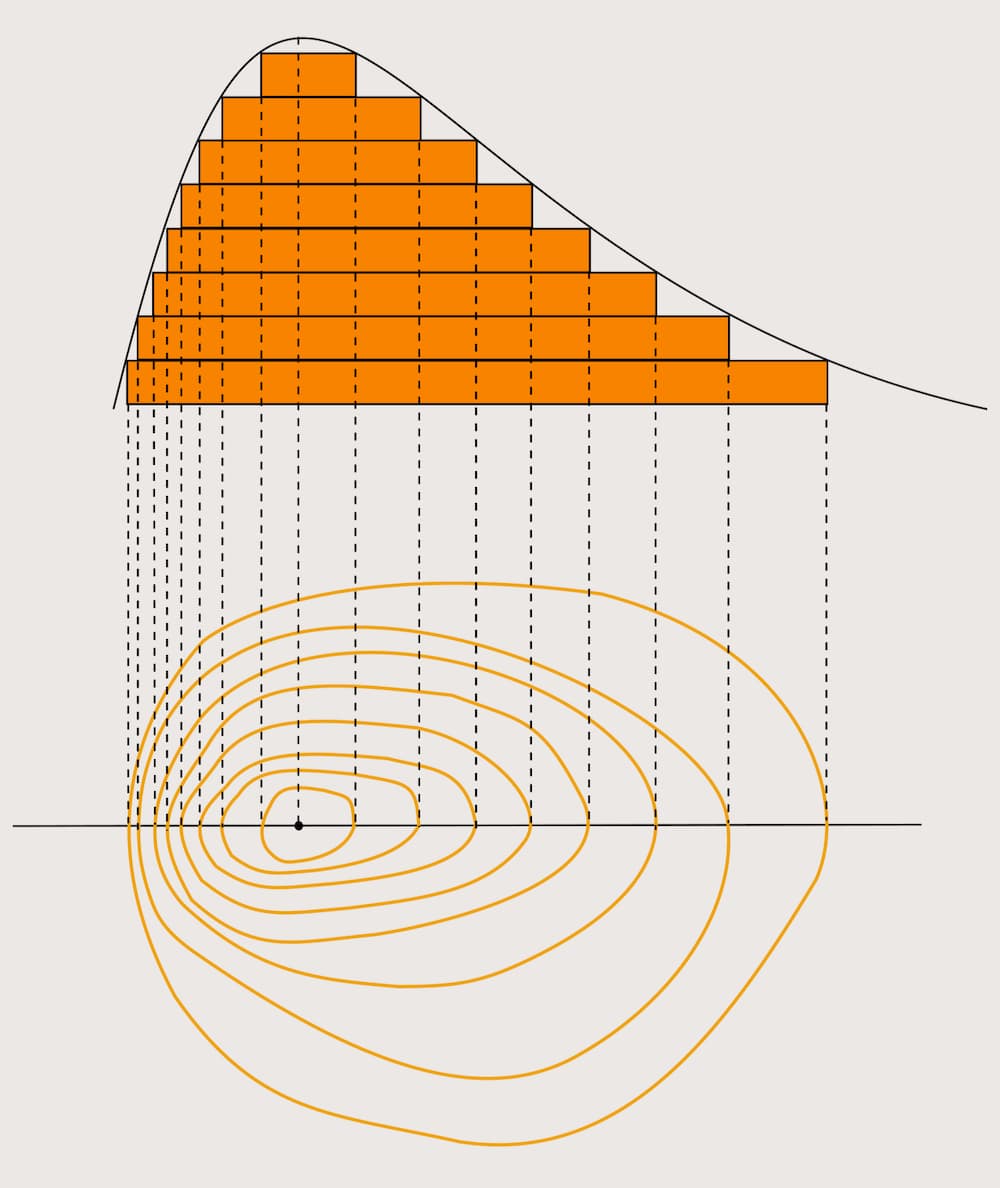
To start, see the illustration of contour lines above.
A contour line connects points of equal height above sea level. If you were to follow the mapped contour line on the land, you would be staying at the same height.
Rather than numbering each individual contour line with its height, maps of 1:25000 scale show a contour line for every five metres of height. In mountainous areas contour lines may represent ten-metre intervals.
But how do you know which way is uphill or downhill from the contour lines? Good question! The numbers on contour lines read uphill; so the top of the number is uphill, the bottom of the number is downhill.
Putting these concepts together, you can see how contour lines “describe” the shape of the land. When the lines are closer together, the slope is steeper. If the lines fan out, the terrain is flatter. From this you can start picking out features such as fells and valleys.
Contour lines work out how steep a slope is, which is useful when planning a hike.
To calculate slope angle:
- Understand the map scale, then use a ruler on the map to measure the distance required. Calculate the real distance according to the scale;
- Work out the height change by subtracting the lowest contour number from the highest;
- Divide the vertical height by the horizontal distance to give steepness.
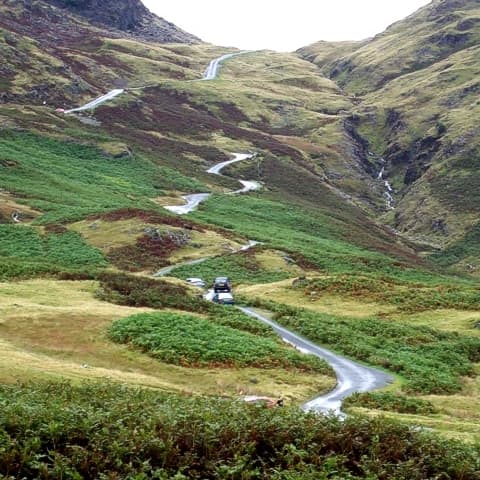
For example, you’ve measured on a map a slope where you climb 1 metre in height for every 10 metres of travel. This is (1 ÷ 10) × 100 = 10% slope, also expressed as 1⁄10. You can use degrees as well. If 360 degrees is 100% then 10% is a 36-degree slope.
In general, anything over 15% is tough for cars and bicycles to climb, and over 25% is going to be a challenging hike. With that in mind consider Hardknott Pass in Cumbria from Langdale to Eskdale. Its gradient maxes out at 1⁄3 or 33%, a 118 degree slope!
Hardknott Pass shares the title of “steepest road in the UK” with Rosedale Chimney Bank in North Yorkshire.
Practise reading contour lines
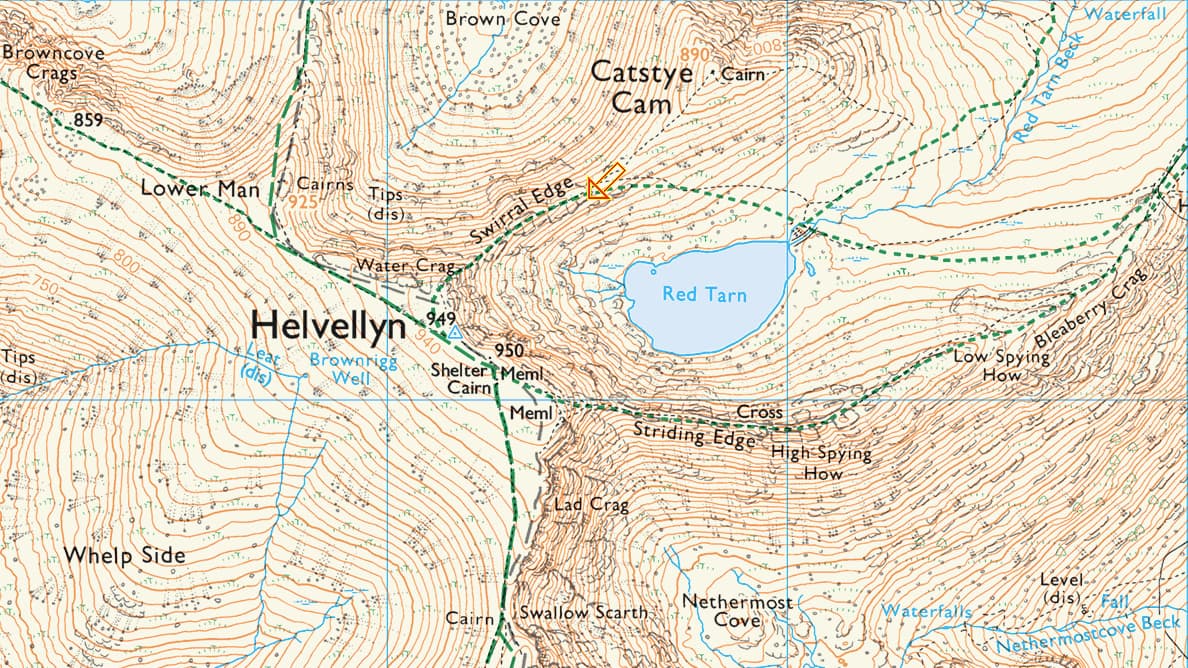
Let’s take some examples.
Above is beautiful Helvellyn. First, it’s easy to see that Helvellyn is much craggier, and steeper, on its eastern side. Its western flank by contrast descends in a gentle way towards Thirlmere. We can tell this without having to look at height numbers or calculating distances. East of Helvellyn’s summit the contour lines are dense, indicating steep drops. To the west the lines fan out as they descend.
It’s easy to confirm by using a tool like Google Earth to get a 3D rendering of the fell.
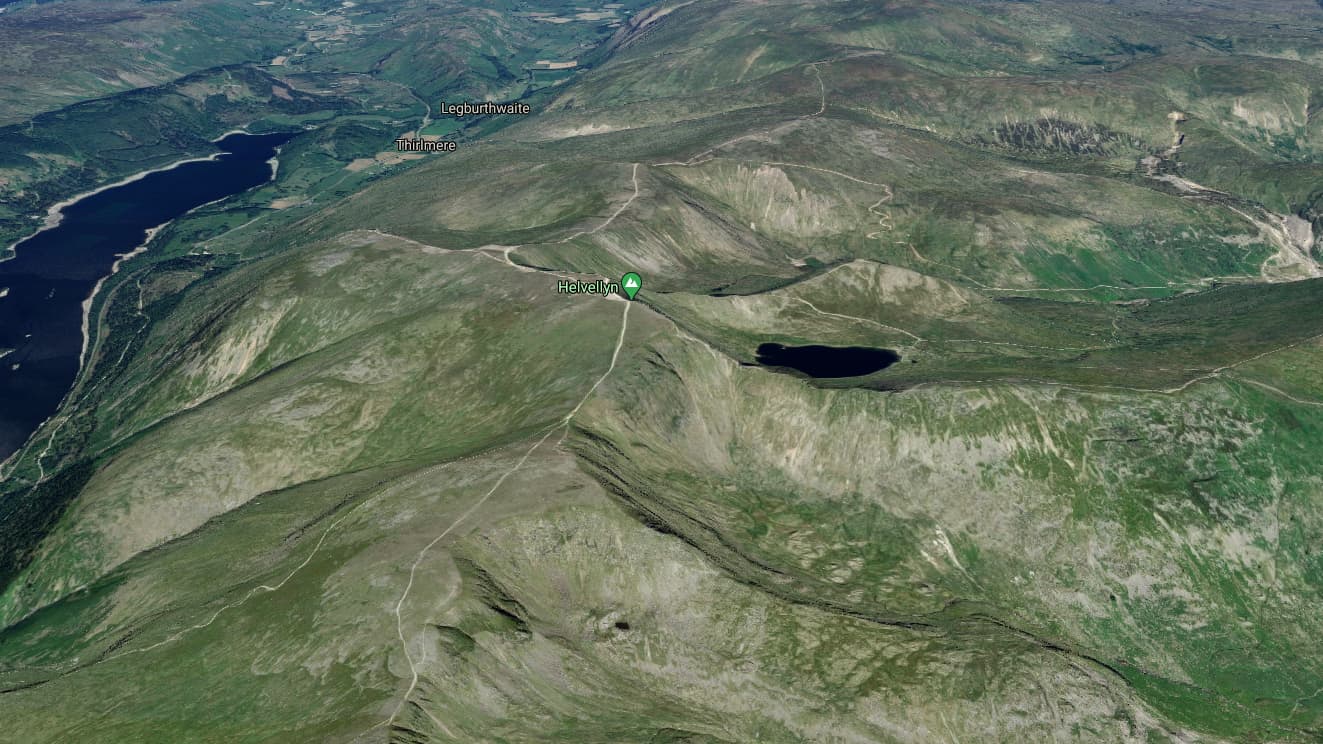
Contour lines help us to pick out other key features of Helvellyn. It’s easy to see, for example, two of Helvellyn’s famous ridges jutting out northeast from the summit. These are Swirral Edge and Striding Edge.
The steep drop east from the summit to Nethermost Cove is particularly precipitous. The contour lines are compact. By measuring the map and referencing the lines, we can calculate the descent from Lad Crag to Nethermost Cove. It drops around 350 m in 500 m distance. That’s (350 ÷ 500) × 100 = 70%, or an average slope of 252 degrees!
When the contour lines are so condensed you may find other details drawn on the map, such as crag and rock lines. These help to illustrate the terrain better. We can tell, then, that Lad Crag to Nethermost Cove is an extremely steep and craggy wall from the summit.
Further reading: Helvellyn Facts - The Lake District's Favourite Fell
Let’s move on to the next example: Blencathra, or Saddleback.
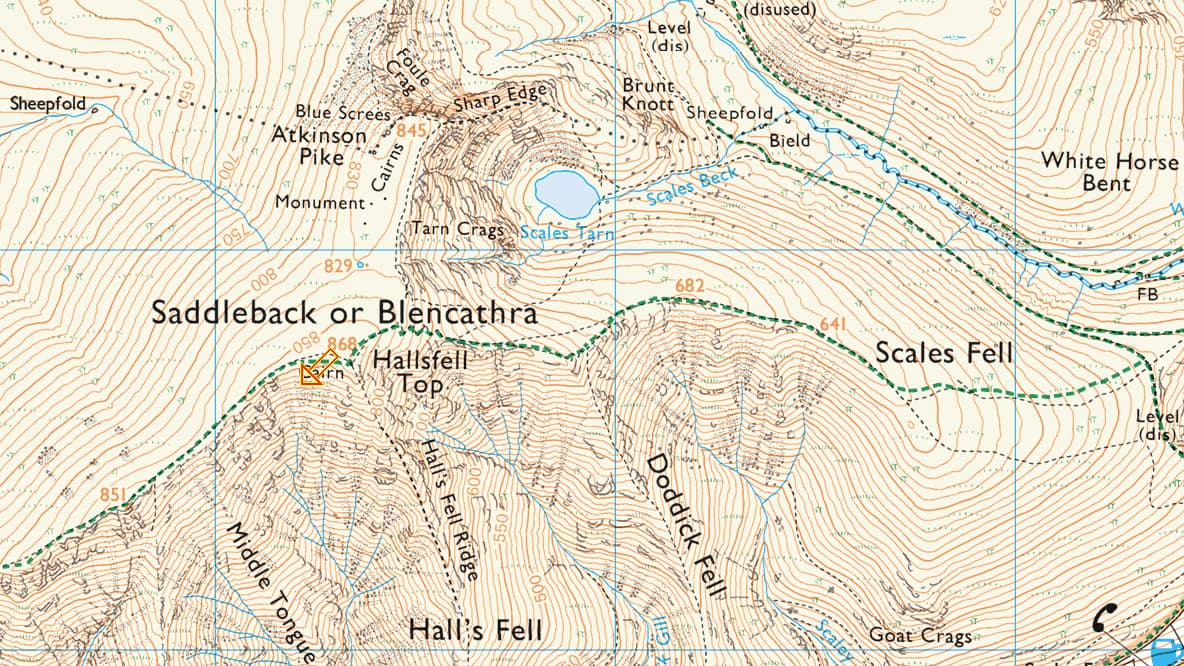
Blencathra exhibits a similar profile to Helvellyn, but at a smaller scale. Its eastern and southern faces are steep and craggy, compared to its gentle and smooth western slopes. Like Helvellyn, Blencathra has its own ridges, particularly the infamous Sharp Edge.
Blencathra has its dangers, too. The drop from the summit down to Scales Tarn is vertiginous. From Atkinson Pike to the tarn, follow the bolder contour lines. You’ll see that there is a 245 m drop with only around 300 m distance. That’s (245 ÷ 300) × 100 = an 81.67% slope! The craggy rock lines show that in front of Scales Tarn is a sheer wall of crag.
The slope west from the summit to the sheepfold only drops 378 m in a distance of roughly 1.2 km, a slope of 31.5%.
Another feature that’s easy to see is in the northeast. Here the contour lines space out more and the illustration of a river indicates a valley bottom.
The Google Earth 3D view screenshot below confirms our reading of the map.
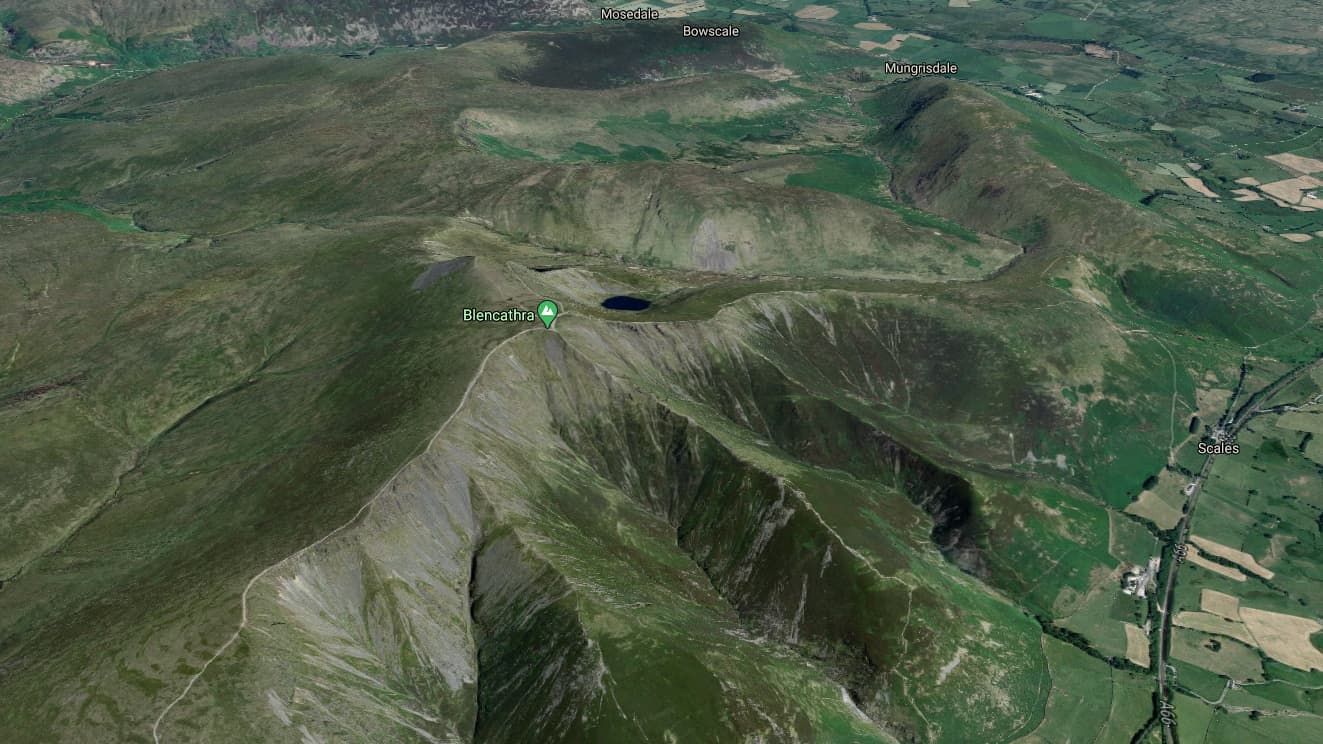
That’s the basics of contour lines
Hopefully we’ve just made reading maps, especially from the Ordnance Survey, much easier for ewe! And don't you think that Ordnance Survey maps are just beautiful to look at? We think so, which is why they inspired our Contour Ewe Tube design.
Has this post helped you at all? Do you have unanswered questions? And what do you think of our new Ewe Tube designs? Let's chew the fat in the comments, or join the flock on our Facebook, Twitter, and Instagram. You can also email us, too.
Products featured in this post
St. David's Day happens every year on the 1st March, which in 2021 falls on a Monday. Though not a UK Bank Holiday it is a public holiday in Wales and widely celebrated by the Welsh diaspora around the world.
But who was the David in question? Why do people wear leeks on this day? And how do you say “Happy St. David’s Day” in Welsh? Read on.
Saint David, the man
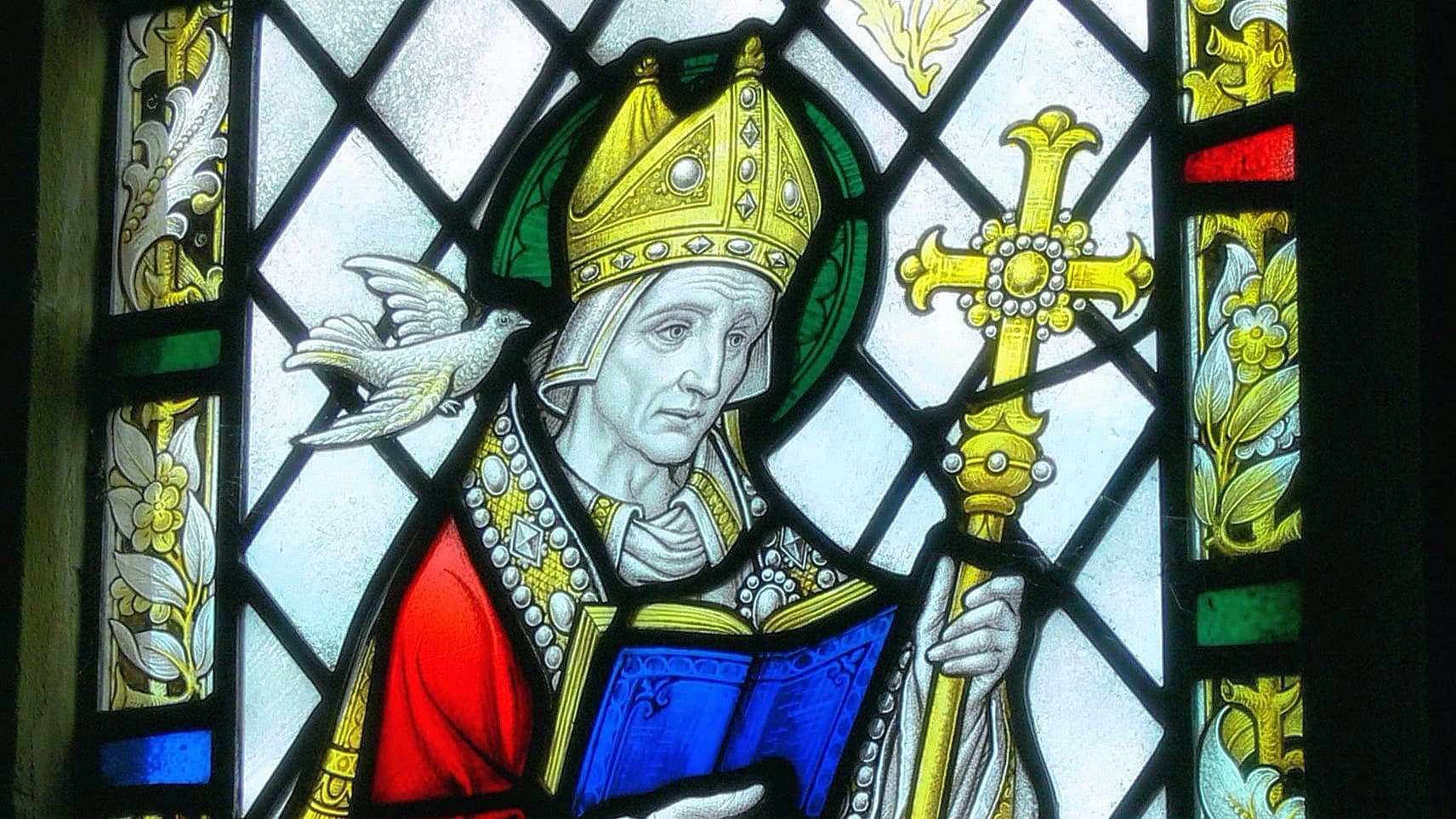
St. David’s Day is named after the patron saint of Wales, Saint David, one of Christianity’s most revered holy people. There’s a large amount of detail about the life of Saint David given the era in which he lived. One of the things historians don’t know is the year of his birth. This is anywhere between AD462 and AD512.
It’s stated that he was born in Henfynyw, a small village in Ceredigion, Wales. The Romans knew him as Davidus. He grew to be a well-known Bishop of the area called Mynyw (or Meneva by the Romans). Saint David gained renown as a passionate teacher, preacher, and practitioner of asceticism. This is the practice of extreme self-discipline and rejection of all indulgences.
Throughout his life Saint David established monastic settlements across Wales. He also setup monasteries in dumnonia (modern-day southwest England, centred around Devon). There’s even evidence of Saint David’s presence in Brittany, northwest France. You can find villages in Brittany named after the Bishop, such as Saint-Divy, Saint-Yvi, and Landivy.
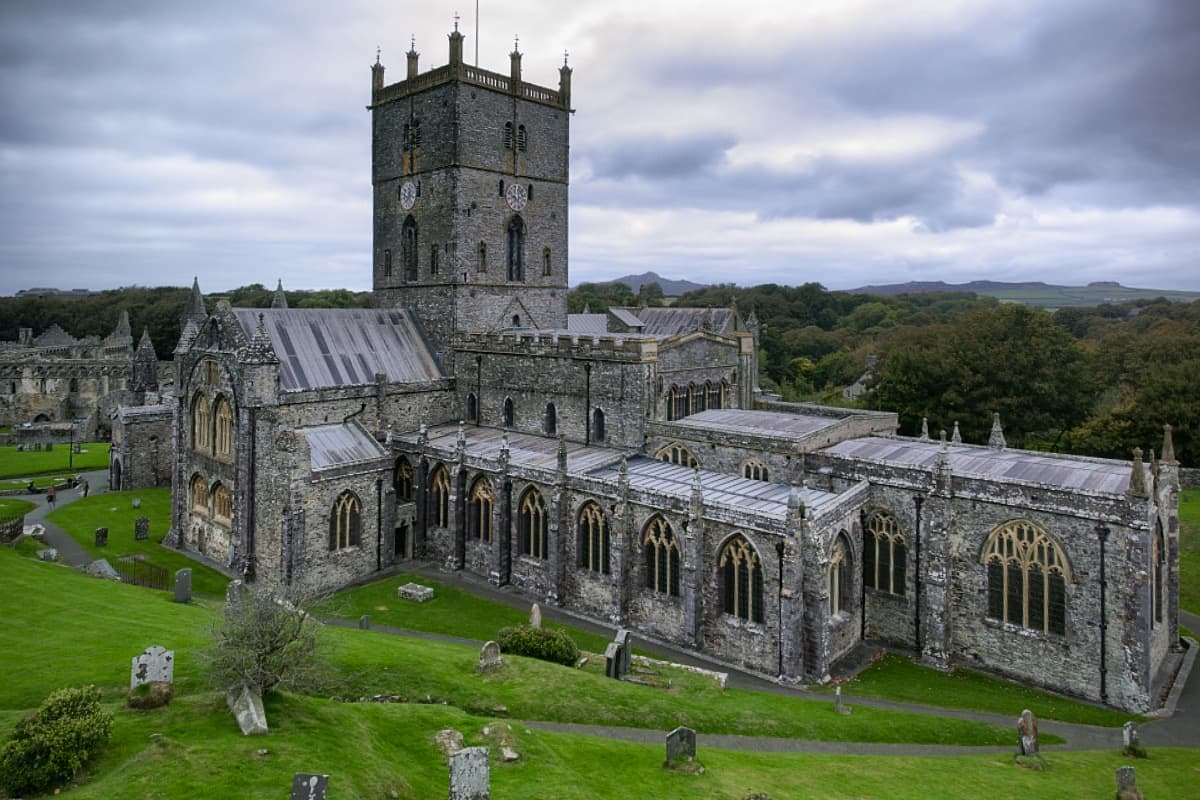
His most famous monastery sits at present-day St. David’s Cathedral, Pembrokeshire. Here he taught asceticism to monks, which followed some rather harsh rules of living:
- Fields were to be ploughed without the aid of work animals;
- Monks were only allowed to drink water;
- They were only allowed to eat bread with salt and herbs;
- No personal possessions were allowed in the monastery, and;
- Evenings were to be spent reading, writing, and praying.
The monks also carried out other activities, such as beekeeping. This is so they could feed not only themselves but also the many pilgrims that came to visit the monastery. They would also feed and clothe the poor and the needy.
Over time the settlement around the monastery became known as Tyddewi, which means “David’s House”. In AD519 the area of Mynyw was renamed to “St Davids” in honour of Archbishop Saint David.
Like all good Christian saints, David performed miracles. His most well-known one occurred when he was preaching at modern-day Llanddewi Brefi. The ground under his feet rose up into a small hill, and a white dove perched on his shoulder.
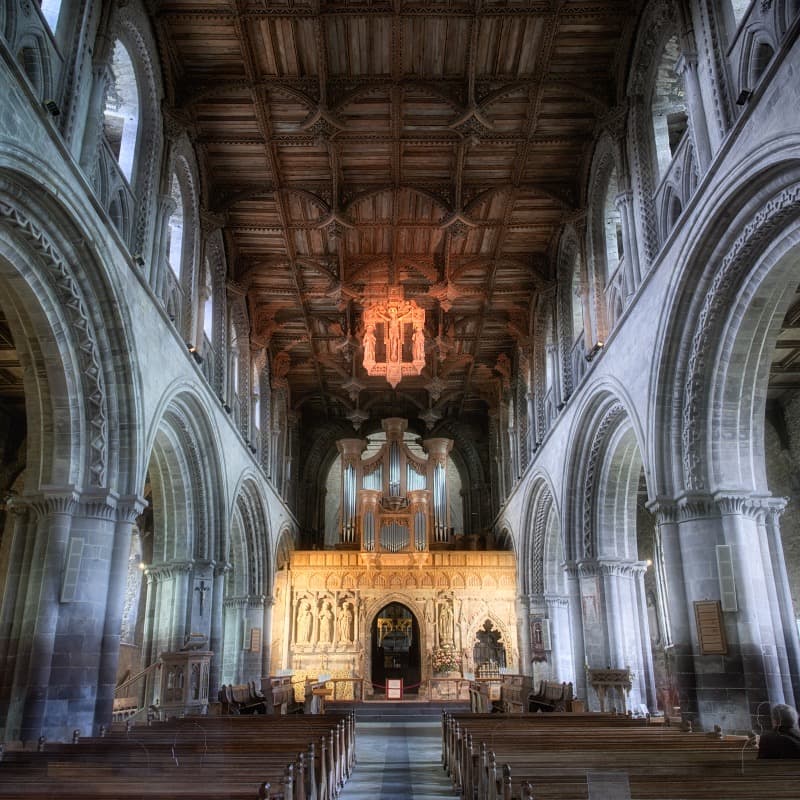
Saint David died in AD589 and was buried at what is now St. David’s Cathedral in the city of St. Davids, Pembrokeshire. His shrine at the cathedral became a popular place to pilgrimage in the Middle Ages. This was because of Pope Callixtus, who did two things:
- He recognised David as a Saint at the Holy See in AD1120;
- He decreed that two pilgrimages to the city of St Davids were equal to one to Rome.
This allowed the city to develop a strong economy from the many pilgrims.
The Vikings plundered then burned down the first cathedral in AD1087. The Normans built the cathedral now seen today and constructed a new shrine in the 13th century. The ruined base of this shrine still remains today, 800-years on.
Saint David’s legacy is still felt 1,500 years after his death. A common Welsh phrase is Gwnewch y pethau bychain mewn bywyd, meaning “Do the little things in life”. It comes from Saint David’s last words, “Be joyful, keep the faith, and do the little things that you have heard and seen me do.”
St. David's Day festivities and traditions
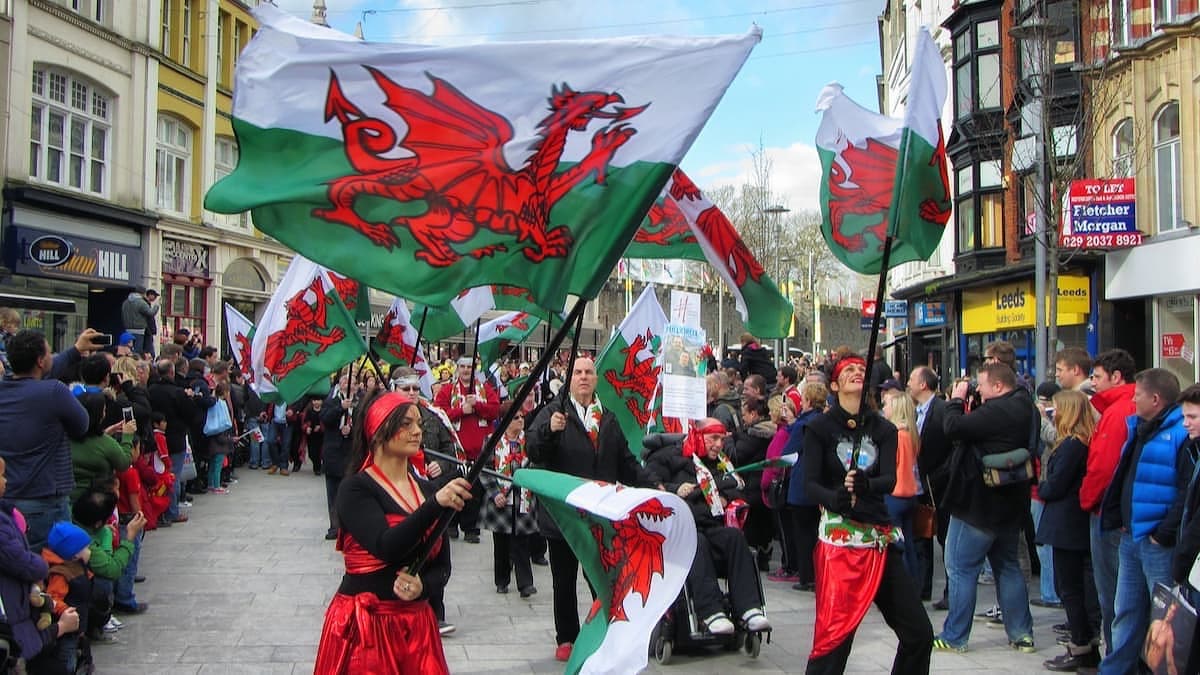
Celebrated every year on the 1st of March, St. David’s Day festivities occur in a variety of ways.
For children this can involve a half-day off from school, depending on the area and the school in question. Unfortunately, St. David’s Day isn’t officially a UK Bank Holiday.
Children take part in what’s called eisteddfodau, meaning “sitting together”. This is a festival with judged competitions for poets, musicians, and others in the arts. People also don traditional costumes, often involving the wearing of both a leek and/or a daffodil.
As you may already know the daffodil is the national symbol of Wales, but the leek may seem more obscure. The wearing of the leek arises from a time when some Welshmen were battling with the English. Both sides wore similar uniforms. So it goes that the Welsh were able to distinguish each other from the English by wearing leeks.
Part of the traditional attire for St. David’s Day may also include the wearing of a Welsh Hat. This is like a top hat but taller, and sometimes sloped towards the top.

Of course, no festivities are complete without indulging in some national dishes! Popular dishes eaten on St. David’s Day can include:
- cawl, which is a soup/broth made with lamb or beef, leeks, potatoes, swedes, carrots, and other seasonal veg. Rich, hearty, and comforting;
- bara brith, a type of Welsh fruit loaf or tea loaf. It’s name means “speckled bread”. It contains a host of dried fruits such as raisins, currants, and candied peel, soaked overnight in tea, then flavoured with mixed spices and baked. It’s then served in slices buttered on one side, and with a good cup of tea (preferrably in a Herdy mug);
- Welsh Cakes. These are flat cakes griddled on a bakestone. They’re made from flour, fat, currants, eggs, milk, and spices such as cinnamon and nutmeg;
- Welsh lamb, and;
- Welsh rarebit. That’s right, rarebit not “rabbit”. A hot cheese-based sauce, sometimes flavoured with Worcestershire Sauce, is served on slices of toast.
Then there’s the customary greeting on St. David’s Day: Dydd Gŵyl Dewi Hapus! This means “Happy St. David’s Day!” and it’s pronounced DEE-the goo-eel Dew-ee happ-iss. In the Welsh language you pronounce the letter dd as a soft “th”, as in “the”.
Happy St. David's Day to ewe!
Are ewe Welsh or have Welsh ancestry? Do you like to celebrate St. David's Day? And if so, how? Give us the details, we love a good natter, or join the flock on our Facebook, Twitter, or Instagram. You can also email us, old school.
Products mentioned in this post
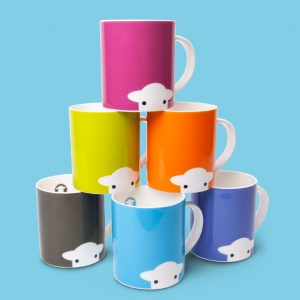
There’s no doubt that the advent of the COVID-19 pandemic has meant necessary changes to how we all live. From practising 2m social distancing, regular hand washing, to remote working/home schooling, everyone is trying their best to adjust to new behaviours. One of the more obvious visual changes to daily life is the mass-adoption of face masks in public places. As a result lots of people are wondering: what is the best face mask? What face covering is most comfortable?
The history of face masks and face coverings
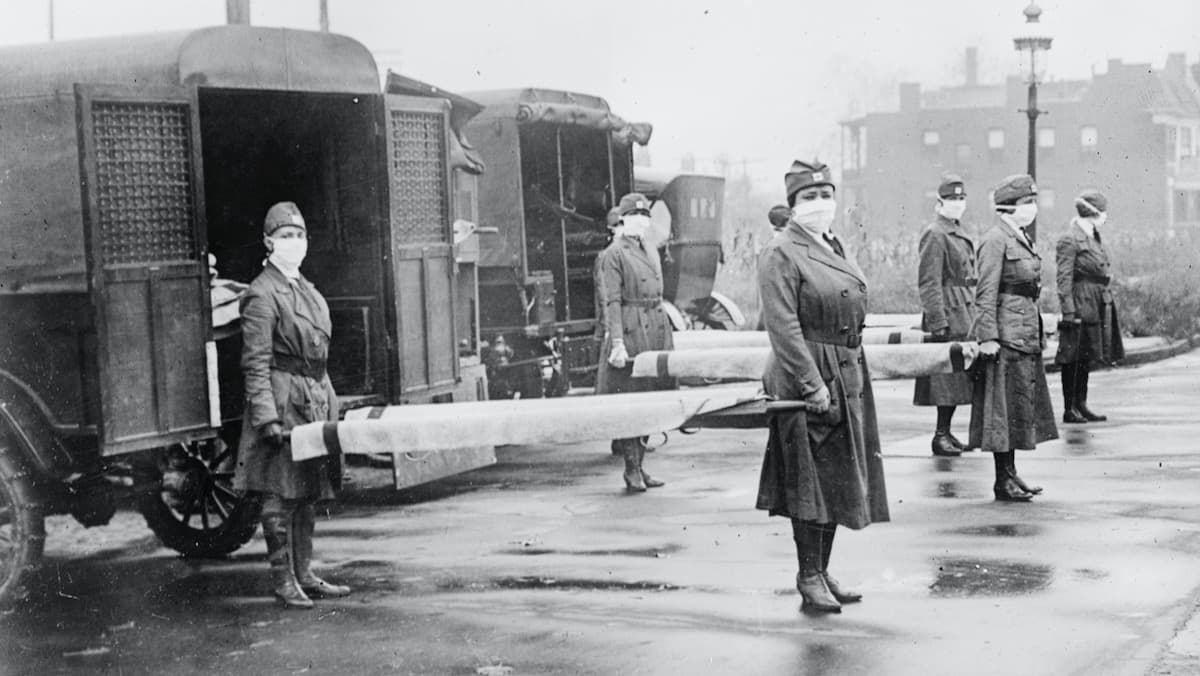
Face masks are not something new due to the COVID-19 pandemic.
Back in Roman times, famous author and philosopher—Pliny the Elder—recommended the use of animal bladders as a face covering to protect miners from breathing in lead oxides. Even further back, Jainist monks in India would routinely wear face coverings to prevent them accidentally inhaling insects as part of their daily practice of non-violence to all living creatures.
In more modern-day times cloth face masks and face coverings came into more regular use, especially in Asian countries, with the advent of the 1918 influenza pandemic (otherwise known, erroneously, as the “Spanish flu”) which, like the Covid pandemic, affected almost every country in the world.

A few years later the Great Kanto Earthquake of 1923, in Japan, caused a raging inferno that destroyed around 600,000 homes and filled the air with smoke and ash for weeks. The Japanese population made use of their pandemic-era face masks as the air quality suffered. Another global flu epidemic in 1934 cemented the everyday use of face masks in Asian countries, especially during the “sick” months in winter.
From the 1950s Japan experienced a post-war economic “miracle”, seeing rapid industrialisation. This led to greater pollution levels, of course, but also a massive growth of the pollen-rich Japanese Cedar tree, which enjoyed the heightened levels of CO2. As a result, mask wearing went from a winter accessory to an almost year-round social consideration.

Japanese consumers spend $230 million on surgical masks each year, and nearby countries facing pollution increases, such as Korea, China, and India, have also adopted habitual mask wearing. Part of the ready acceptance of face mask wearing in East Asian countries also has to do with the traditional religious and cultural ideas around social responsibility and courtesy, especially from Taoism and Confucianism.
Is the best face mask and face coverings effective?
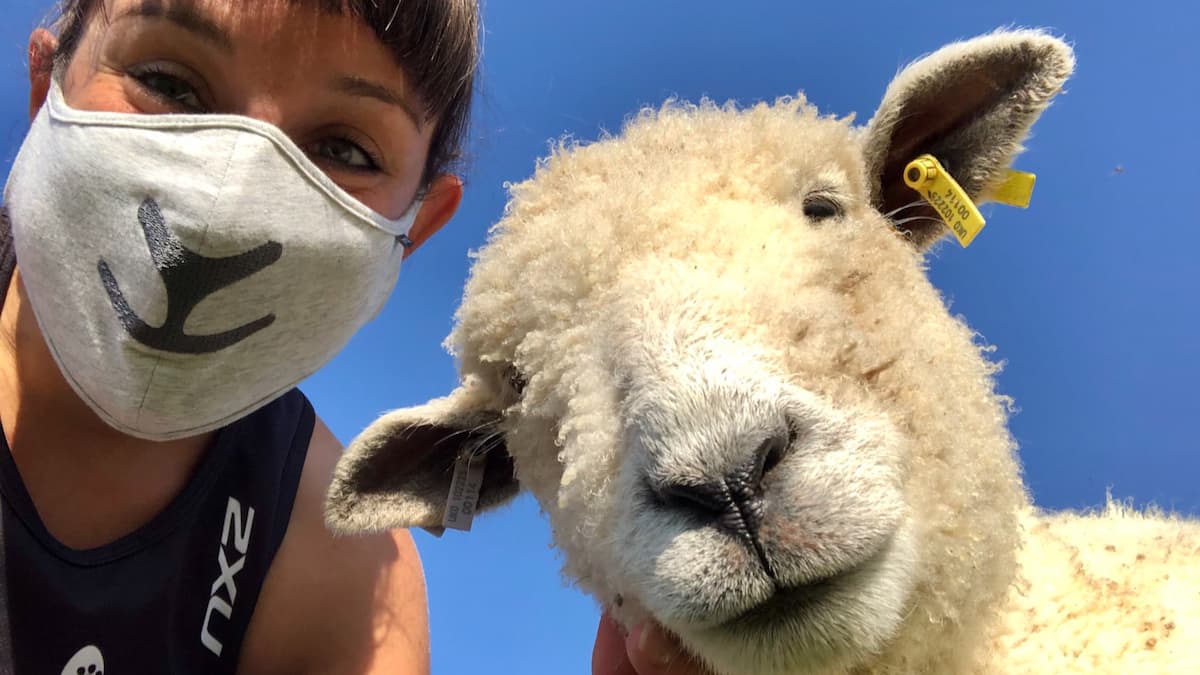
If worn properly, a mask is meant to help block large-particle droplets, splashes, sprays, or splatter that may contain viruses and bacteria.
Without a mask, saliva and respiratory excretions from coughs can travel up to 26 feet.
The World Health Organization recommends using masks with at least three layers of different materials.
Mask efficacy is indicated by the Filter Quality Factor known as “Q”. It’s based on both the filtration ability and breathability of the mask, with higher values being better. Experts recommend a Q-factor of three or higher.
| Name | Structure | Filter quality factor, Q |
|---|---|---|
| Polypropylene (surgical mask) | spunbound | 16.9 |
| Cotton (sweater) | knit | 7.6 |
| Cotton (t-shirt) | knit | 7.4 |
| Polyester (toddler wrap) | knit | 6.8 |
| Cotton (t-shirt) | woven | 5.4 |
| Cellulose (tissue paper) | bonded | 5.1 |
| Cellulose (paper towel) | bonded | 4.3 |
| Silk (napkin) | woven | 2.8 |
| Cotton (handkerchief) | woven | 0.48 |
| Cotton, gauze | woven | 0.47 |
| Nylon (exercise pants) | woven | 0.4 |
Data above courtesy of Wikipedia.
The filter efficiency of a mask or covering can be improved with multiple layers of material, a high weave density, and a mix of different types of fabrics. Cotton is the most commonly used material, and filter efficiencies can reach >80% for particles <300 nm with fabric combinations such as cotton-silk, cotton-chiffon, or cotton-flannel.
According to Smart Air Filters, homemade face masks and face coverings made from cotton t-shirts, pillowcases, or other cotton materials filter out approximately 50% of 0.2 micron particles, similar in size to the coronavirus. They are also easy to breathe through.
How does the Herdy Smile Face Mask compare?
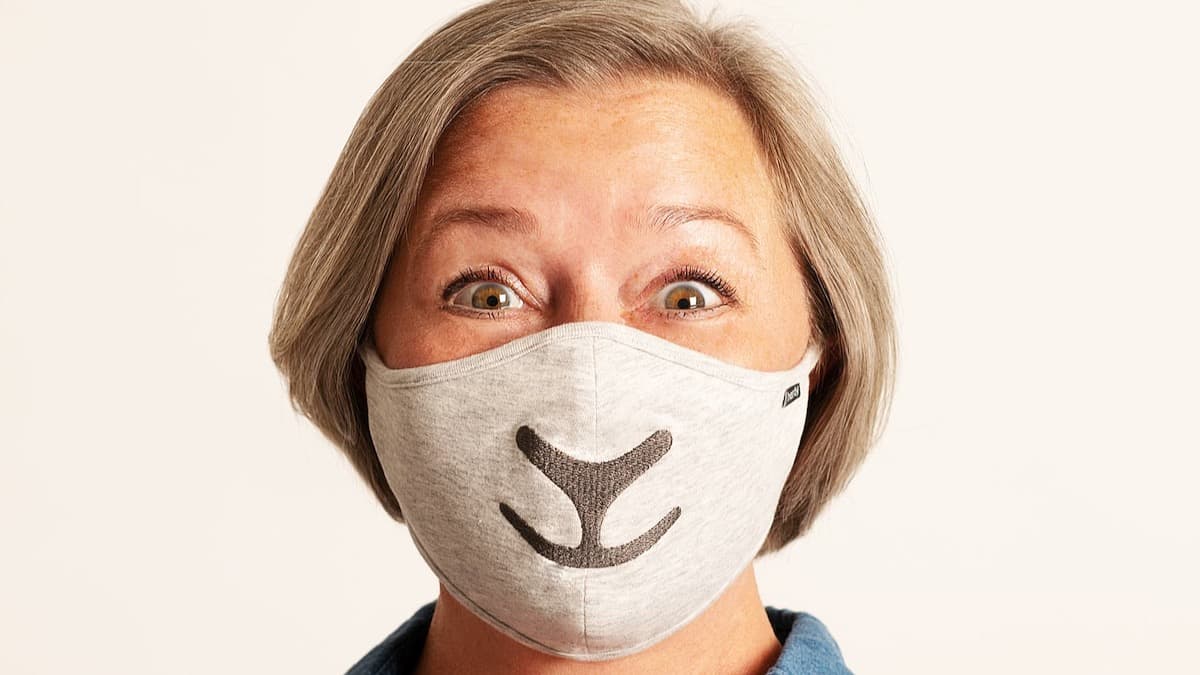
The Herdy Smile Face Mask is made from triple-layered 100% organic jersey cotton, contoured to fit your face.
The cotton fabric used is called double-knit jersey cotton, or interlock jersey. Two pieces of single-knit jersey are knitted together to create a smooth surface on both sides (single-knit jersey is smooth on one side with loops on the other). This smooth surface makes it super comfy to wear against the skin.
It is also shaped to fit the contours of your face, unlike a square/rectangular mask. It doesn’t ride up into your eyes or slip up your chin. Plus, the earloops are also made from the same cotton, which are much friendlier on the sensitive skin around your ears.
Disclaimer: Please bear in mind: we are not medical experts and the information set out in this blog post does not constitute official medical advice. Where possible we’ve cited reports, publications, and guidelines from official scientific and medical bodies, and invite you to follow through on these official sources.
Ewe are never fully dressed without a smile
Did ewe know about the history of the face covering? Let's have a chat in the comments below; you can also join the flock on our Facebook, Twitter, or Instagram, and also email us.
If certain styles in our new Herdy Country hats range seem familiar to you, it may be as a result of the hit TV series Peaky Blinders. Since then the Peaky Blinders hat worn in the TV series has become increasing fashionable, albeit without the accompanying razor blade accessory!
Peaky Blinders is a British period crime drama set in Birmingham, England, after the end of the First World War, in 1919. The Peaky Blinders were an urban street gang from Birmingham that existed towards the end of the 19th century up to the early 1900s. The gang was involved in lots of unsavoury practices, from robbery and racketeering to illegal bookmaking.
Members of this gang dressed in a particular fashion: tailored jackets, waistcoats, overcoats, and topped with a signature flat cap. The name “Peaky Blinders” was the nickname given to the gang because they stitched razor blades into the peaks of their caps to be used as a weapon in fights with competing gangs.
What is the Peaky Blinders hat called?
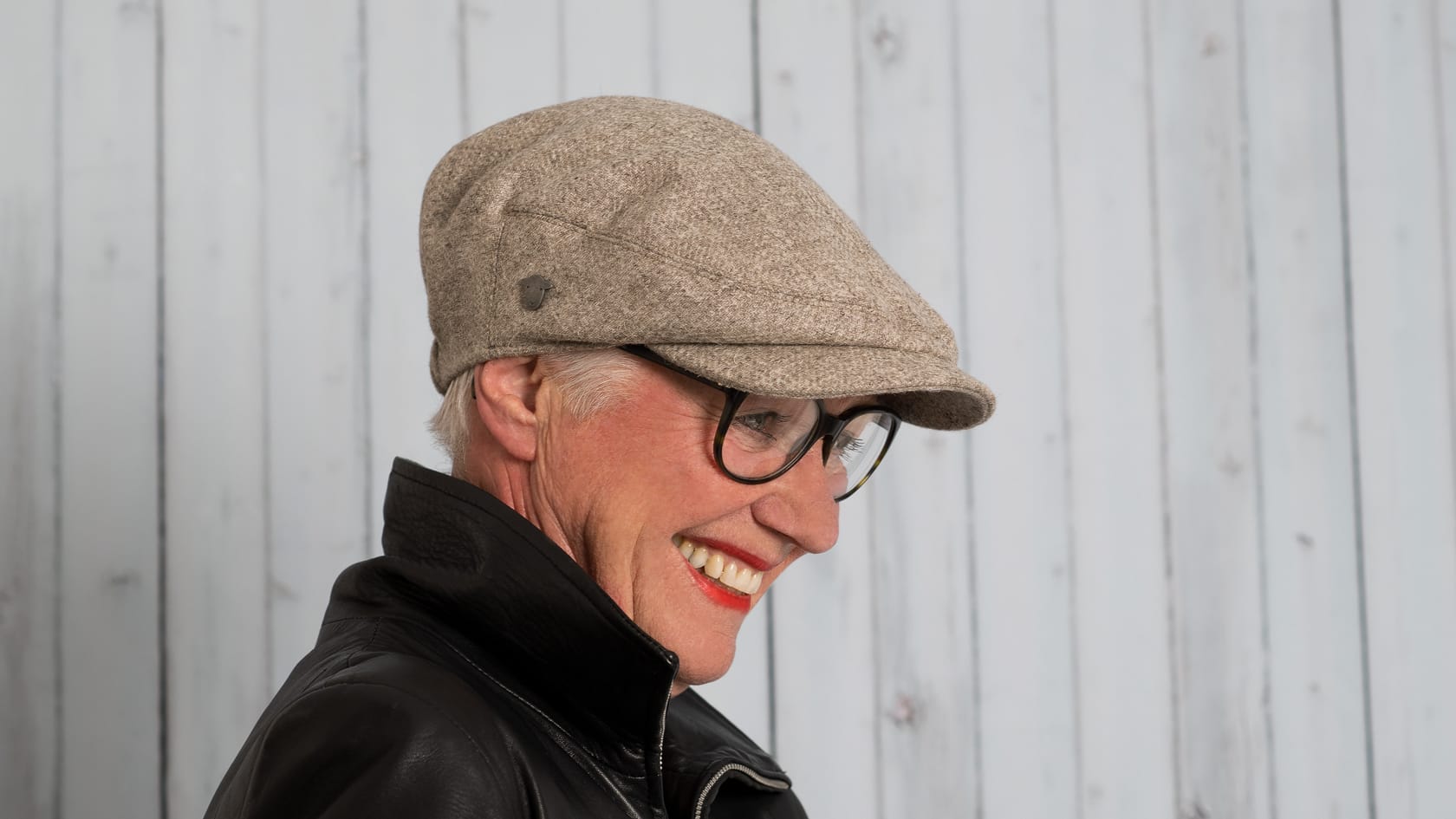
Throughout the series the main cast are shown wearing predominantly two types of headwear that were popular at the time: the flat cap and the baker boy, or newsboy, cap.
People often call baker boy or newsboy caps a flat cap, but they are in fact a derivative of the flat cap. You can learn all kinds of wonderful facts and history about the flat cap here on Herdy World.
There are a few key differences between the flat cap and the baker boy/newsboy cap.
To start, baker boy/newsboy caps are looser in fit and have more volume resulting in a baggier look, and whereas the flat cap features a single piece of material from the peak to the back, baker boy caps are typically made from eight triangle panels of material that join at a central point at the top of the head. This join is also normally covered by a button finished in cloth or leather.
The differences in construction between a flat cap and a baker boy/newsboy cap results in a different fit on the head. Baker boy caps sit more loosely and on top of the head, whereas a flat cap fully wraps and hugs the cranium.
Why are they called baker boy or newsboy caps?
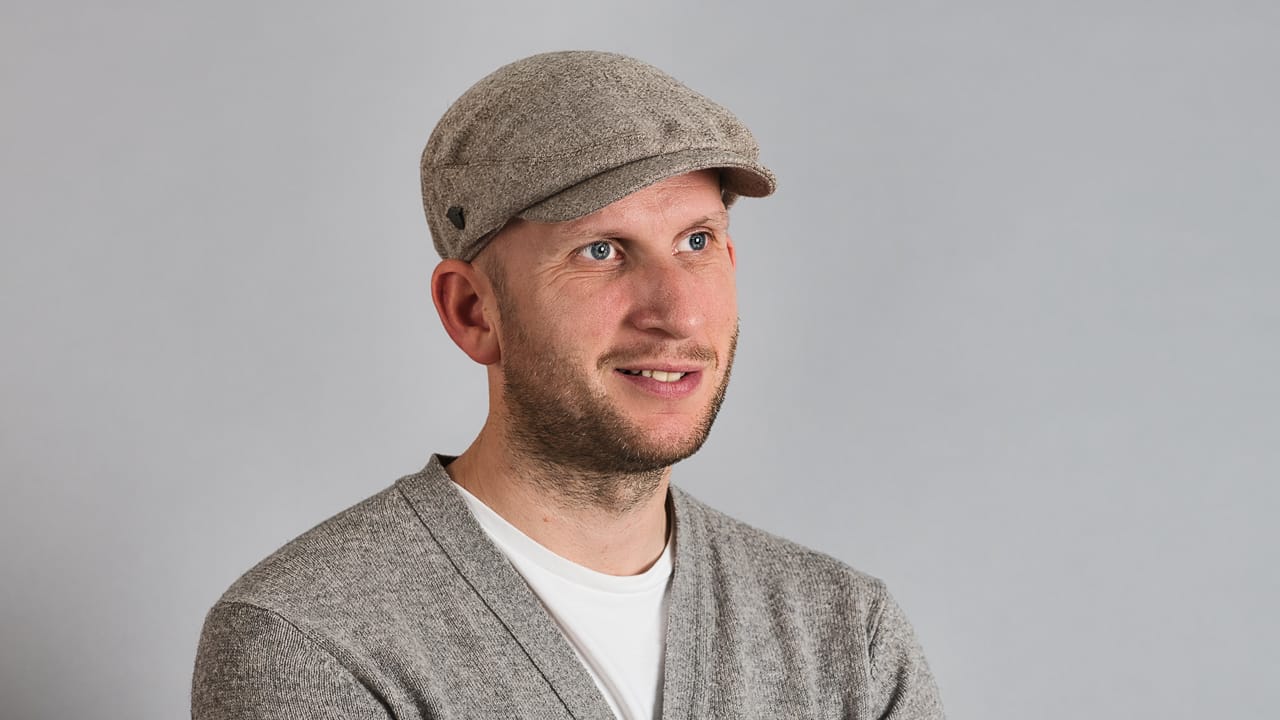
Whilst it is true that many baker boys and newspaper boys wore this style of flat cap during the early 1900s, it was not worn only by boys.
The newsboy or baker boy goes by other names too, especially in the USA, such as a “newsie” cap, a Cabbie Cap, and a Paddy Cap. These, too, are names that draw associations between the hats and the jobs their wearers worked in. Newspaper boys, like a lot of working class boys and men, commonly wore this style of cap in the late 1800s/early 1900s, as did dockworkers, high steel workers, farmers, and tradesman of all kinds.
Their introduction in the USA likely came from working class Irish immigrants. Irish people had been arriving at America’s shores long before the 1900s, but the Great Famine of 1845–1849 saw a peak of Irish people seeking a better life away from British colonial rule by emigrating to the USA, where they took their customs and clothing styles with them.
This style of headwear was adopted by the English “upper” classes in the early 20th century and became associated with country sportsmen, ‘motor car’ drivers, and wealthy golfers.
The new Herdy Country Hat range
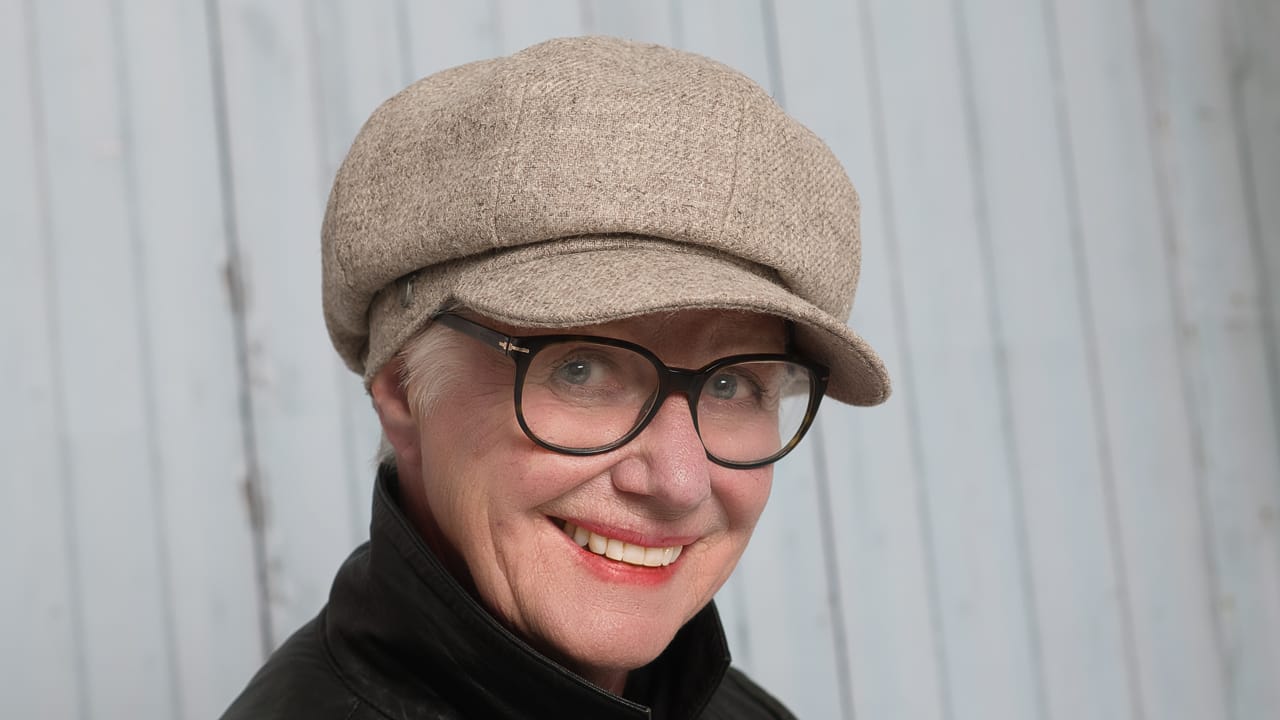
Evocative of times gone by, our range of Herdy Country hats are entirely handmade in Britain by skilled artisans. Which style will you choose?
Check out our new Herdy Country hats range!
Are you a fan of Peaky Blinders? Let's have a natter in the comments below, or you can join the flock on our Facebook, Twitter, or Instagram (you can email us, too).


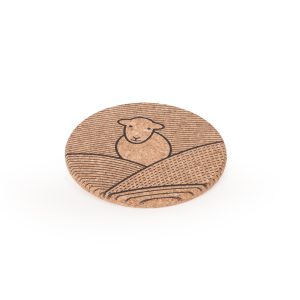
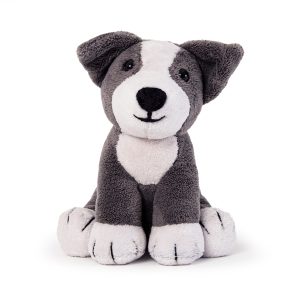
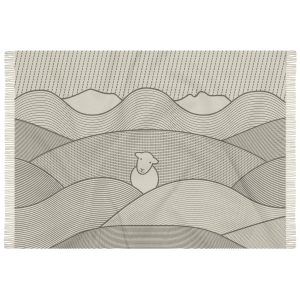
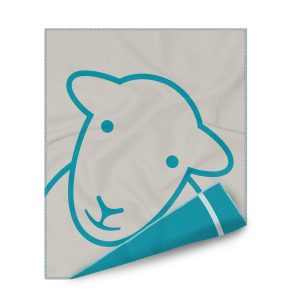
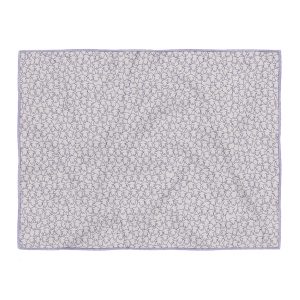
![GREY-PJ-Hoodie-Cuddle---Junior_RT-[10-11-22] Herdy Fleece Hoodie in Grey](https://www.herdy.co.uk/wp/wp-content/uploads/2022/11/GREY-PJ-Hoodie-Cuddle-Junior_RT-10-11-22-300x300.jpg)
![BLUE-PJ-Flatlay_RT-[10-11-22] Herdy 'Hello' Pyjamas in Blue](https://www.herdy.co.uk/wp/wp-content/uploads/2022/11/BLUE-PJ-Flatlay_RT-10-11-22-300x300.jpg)
